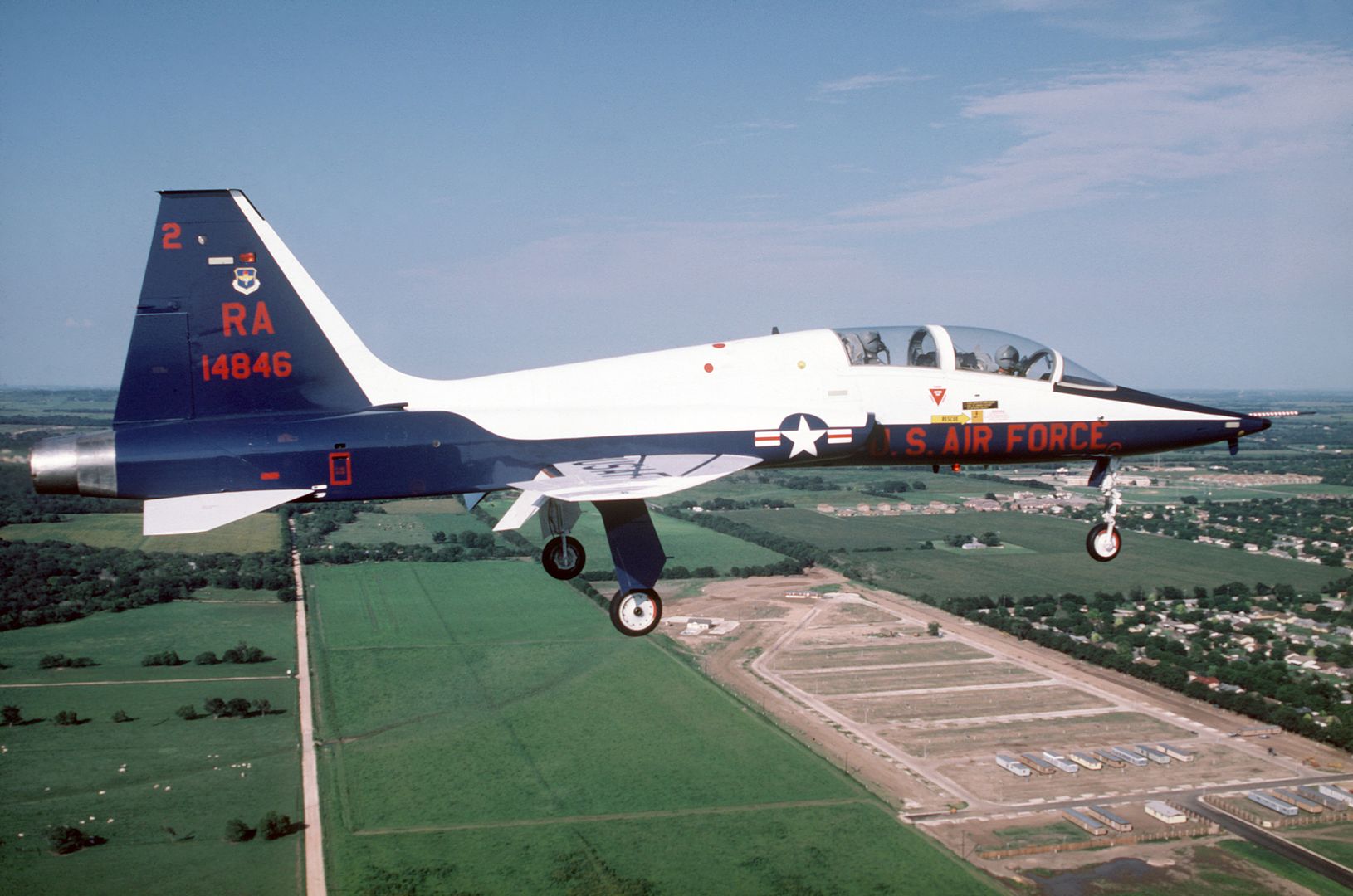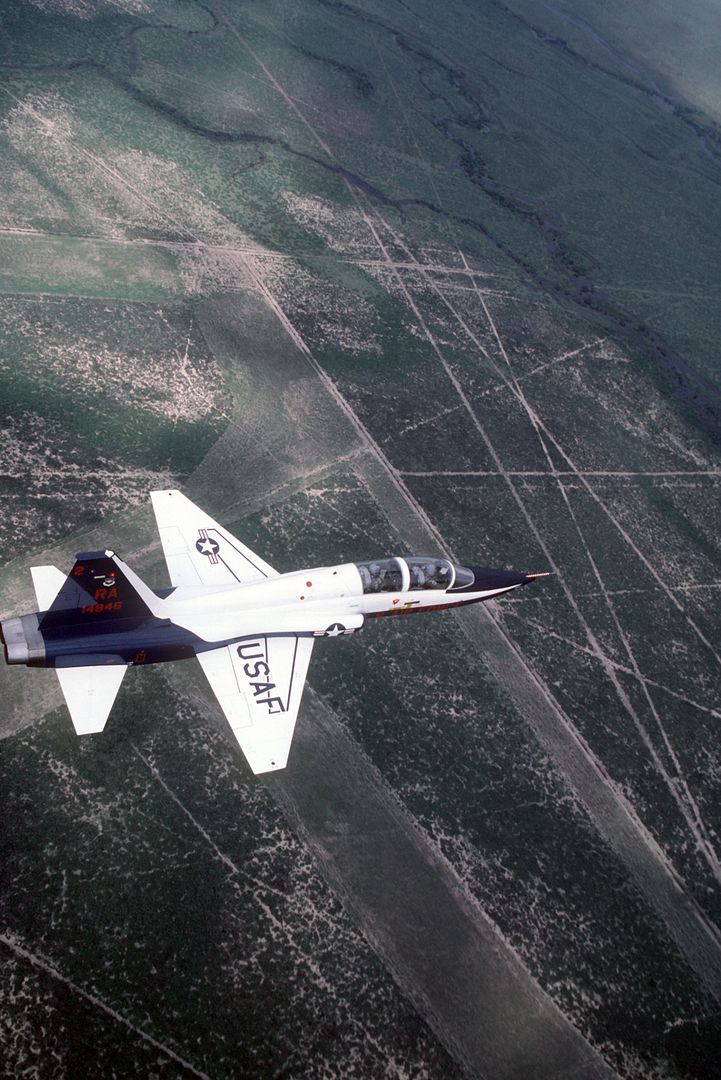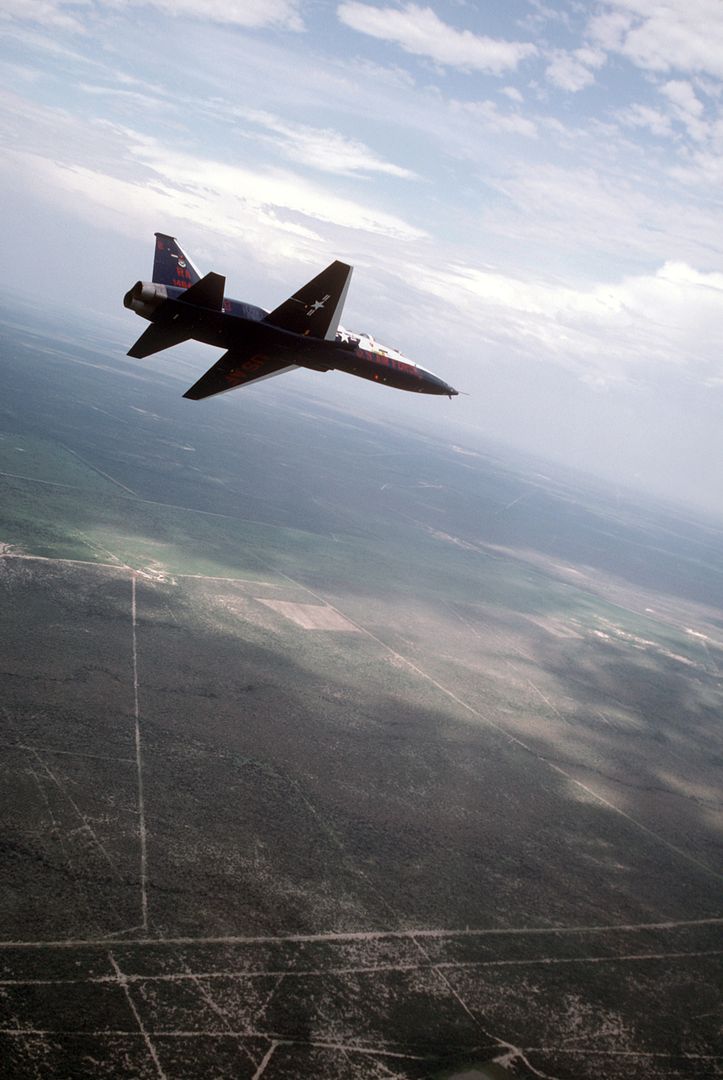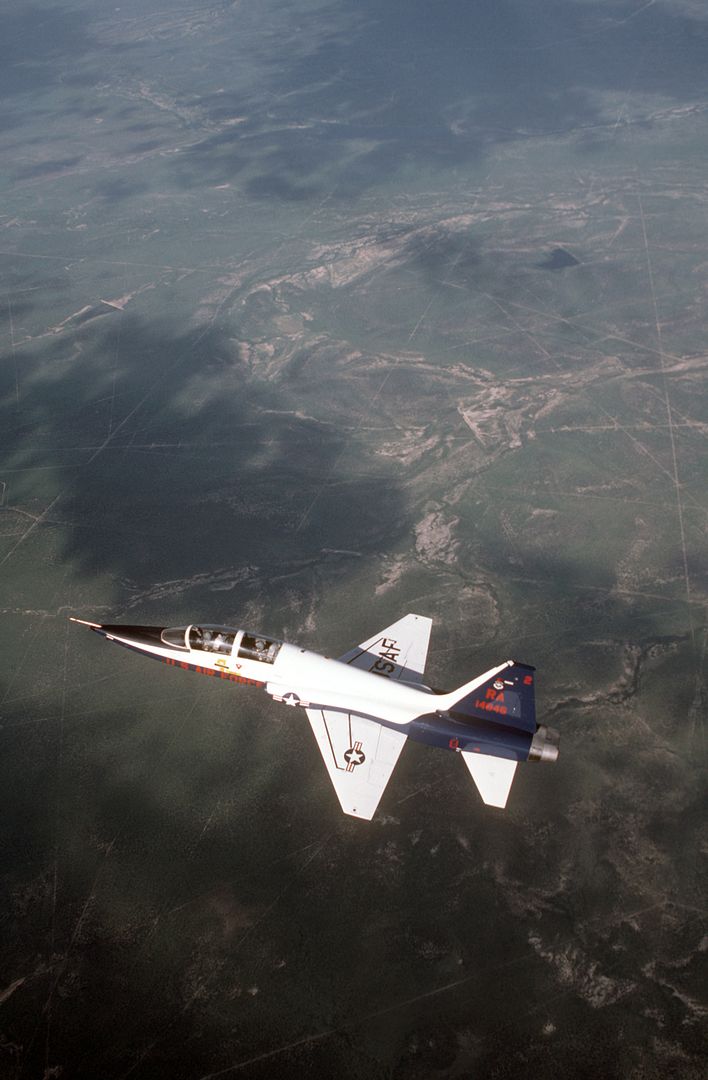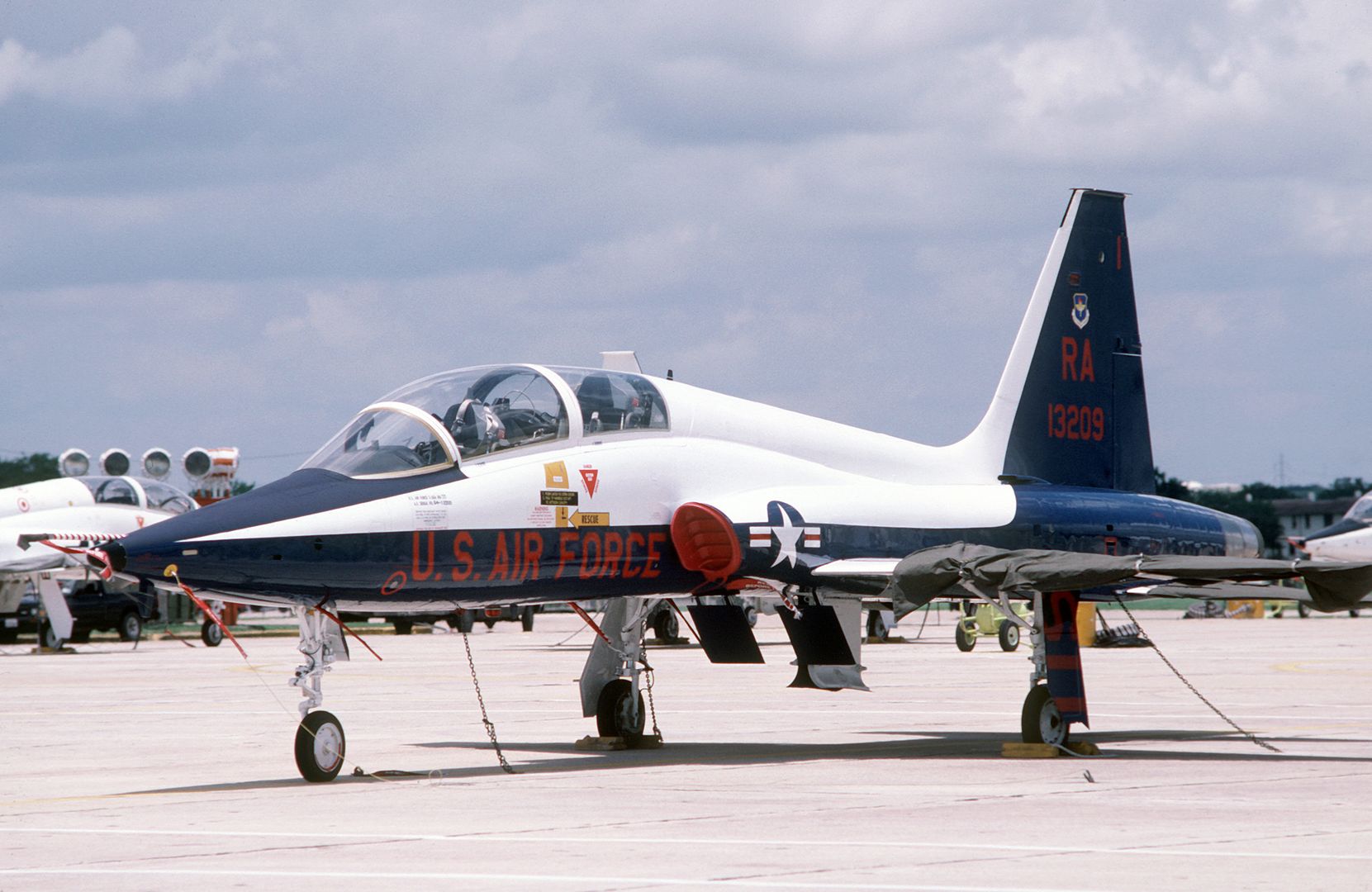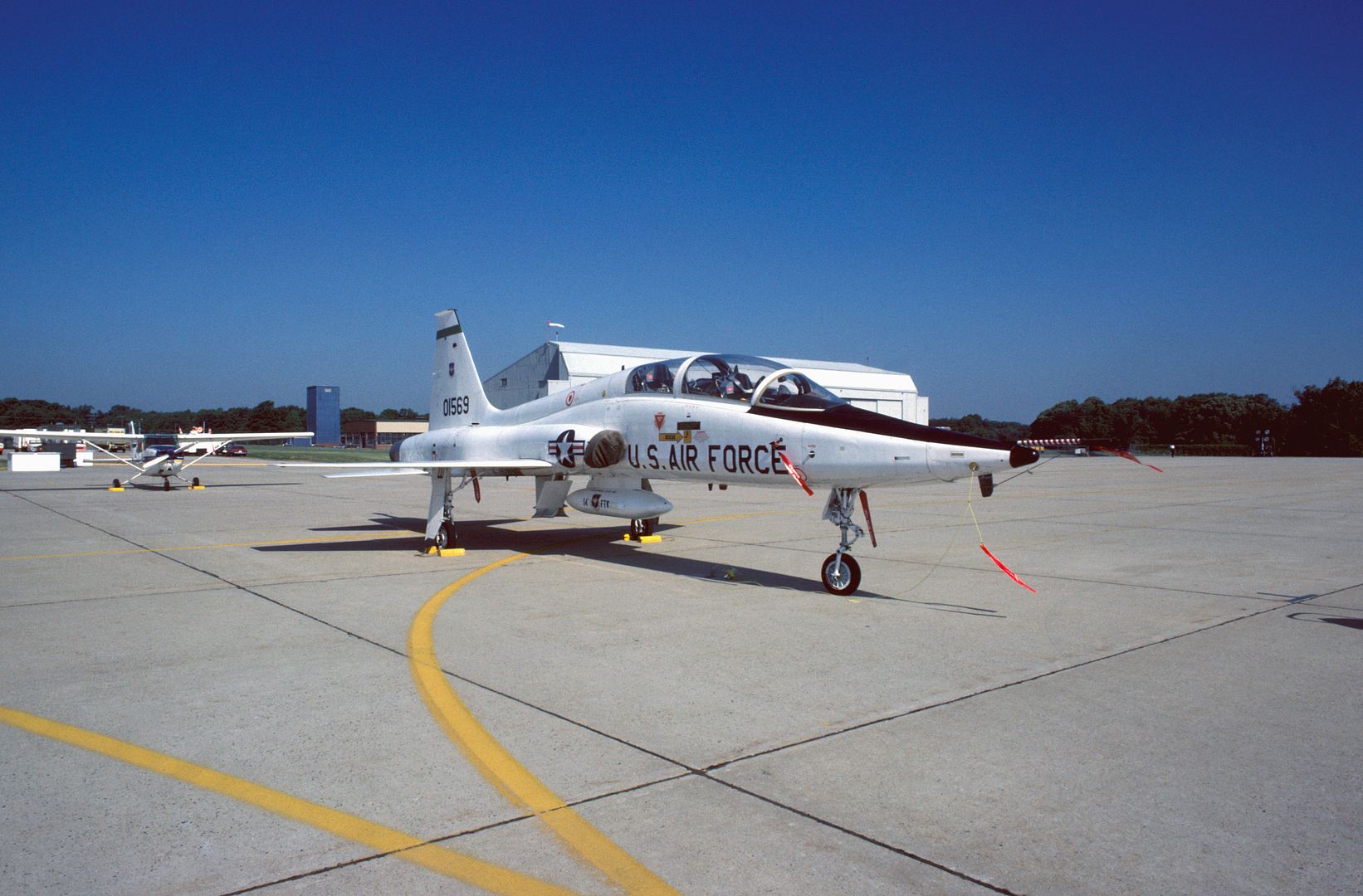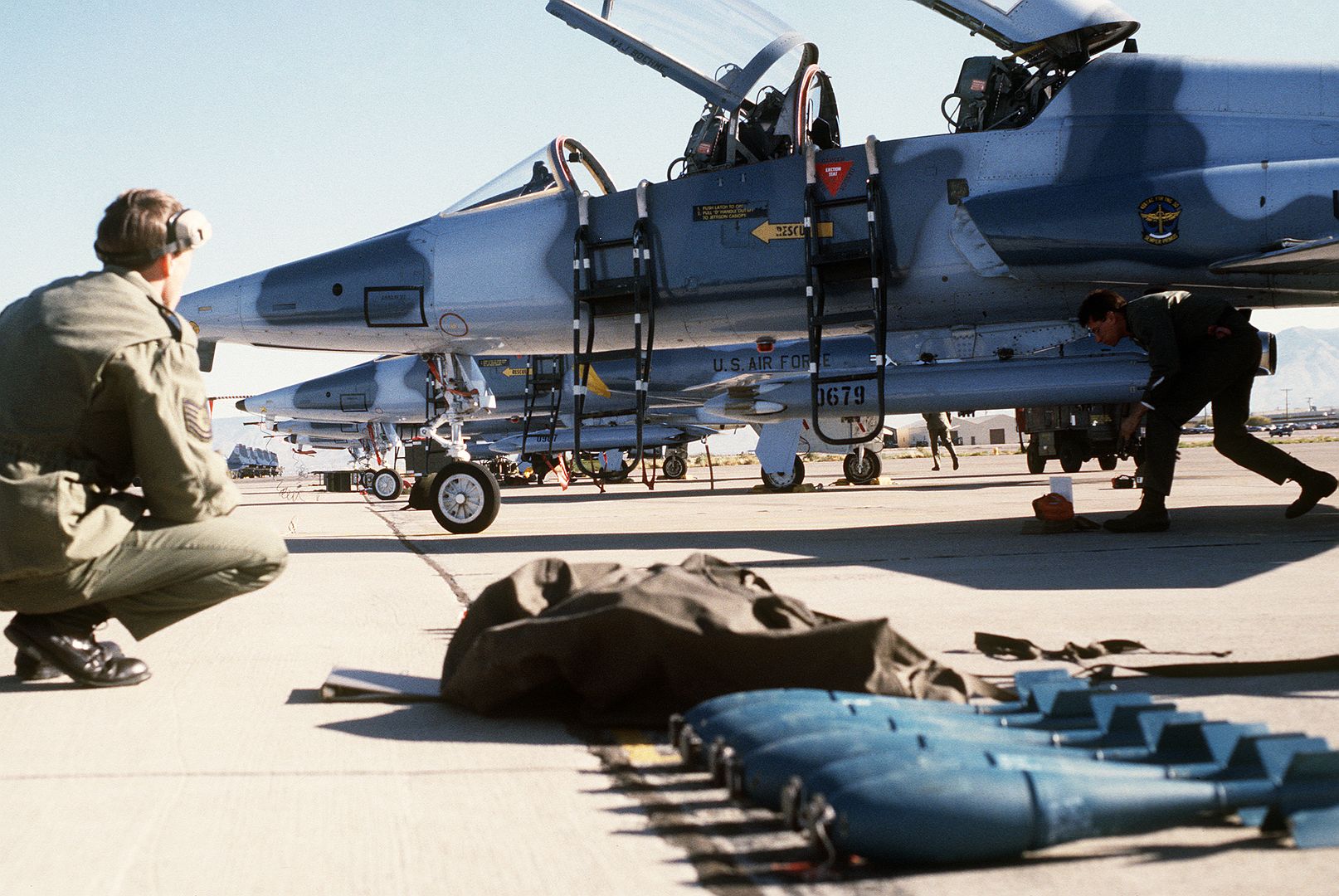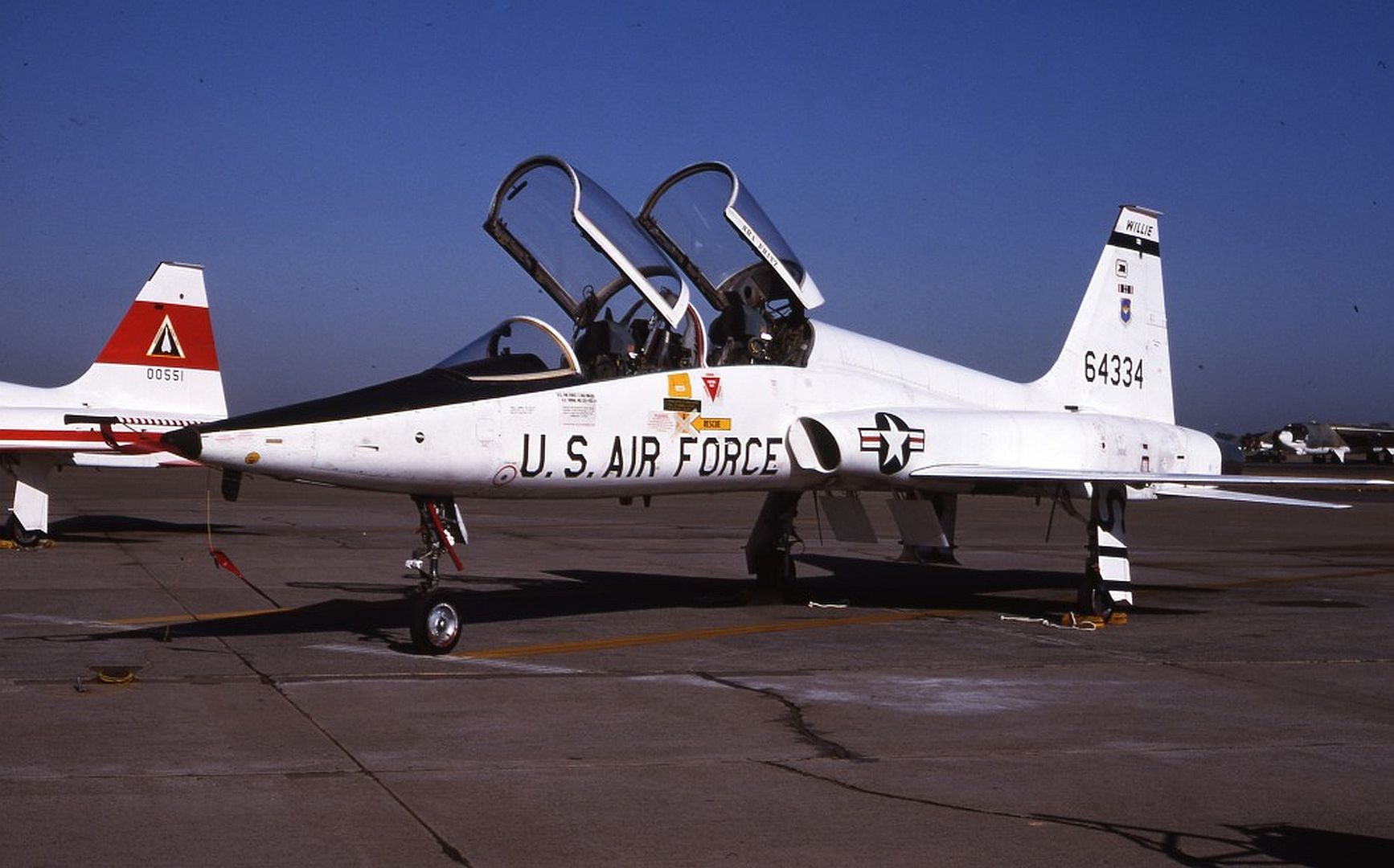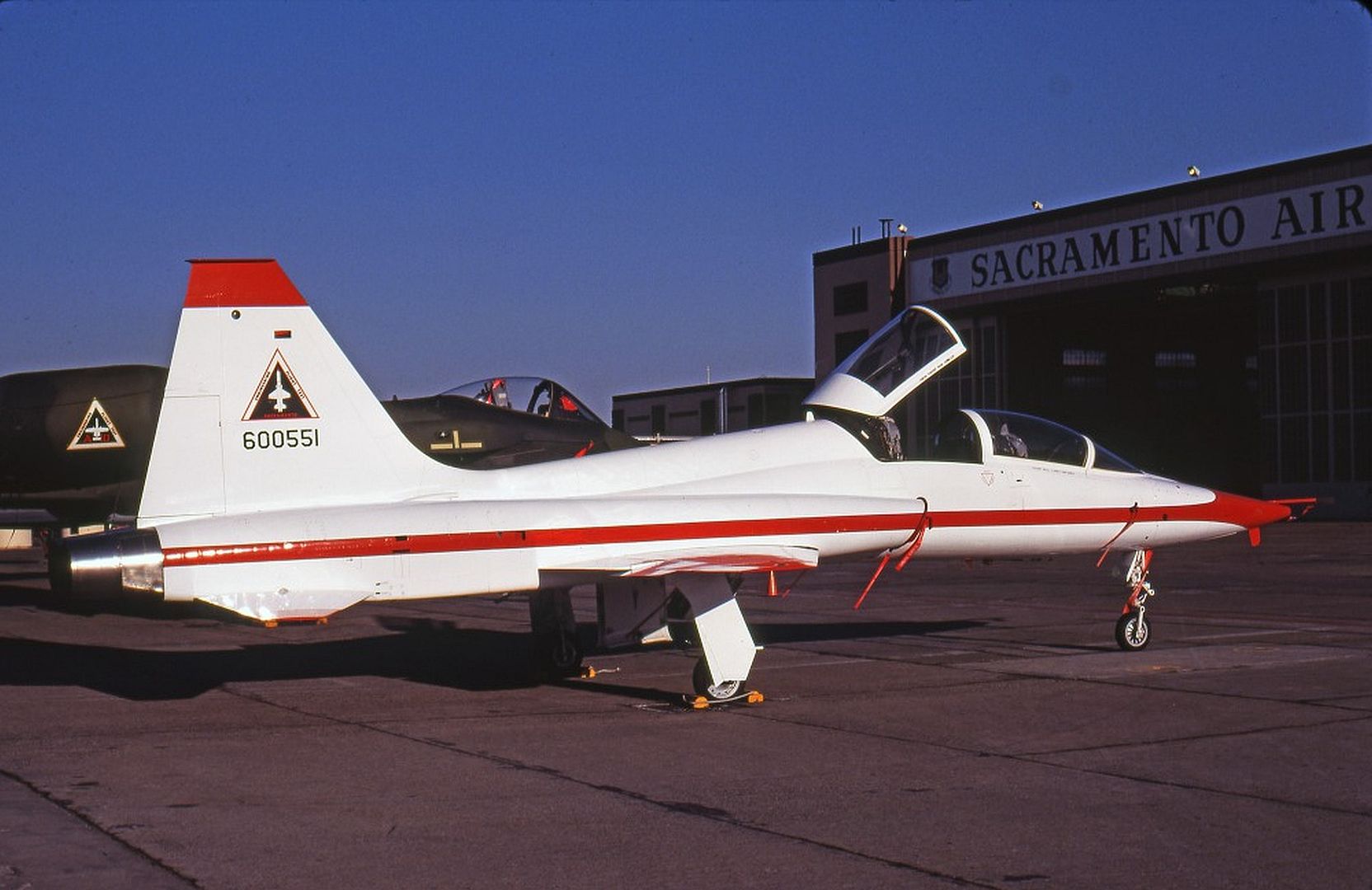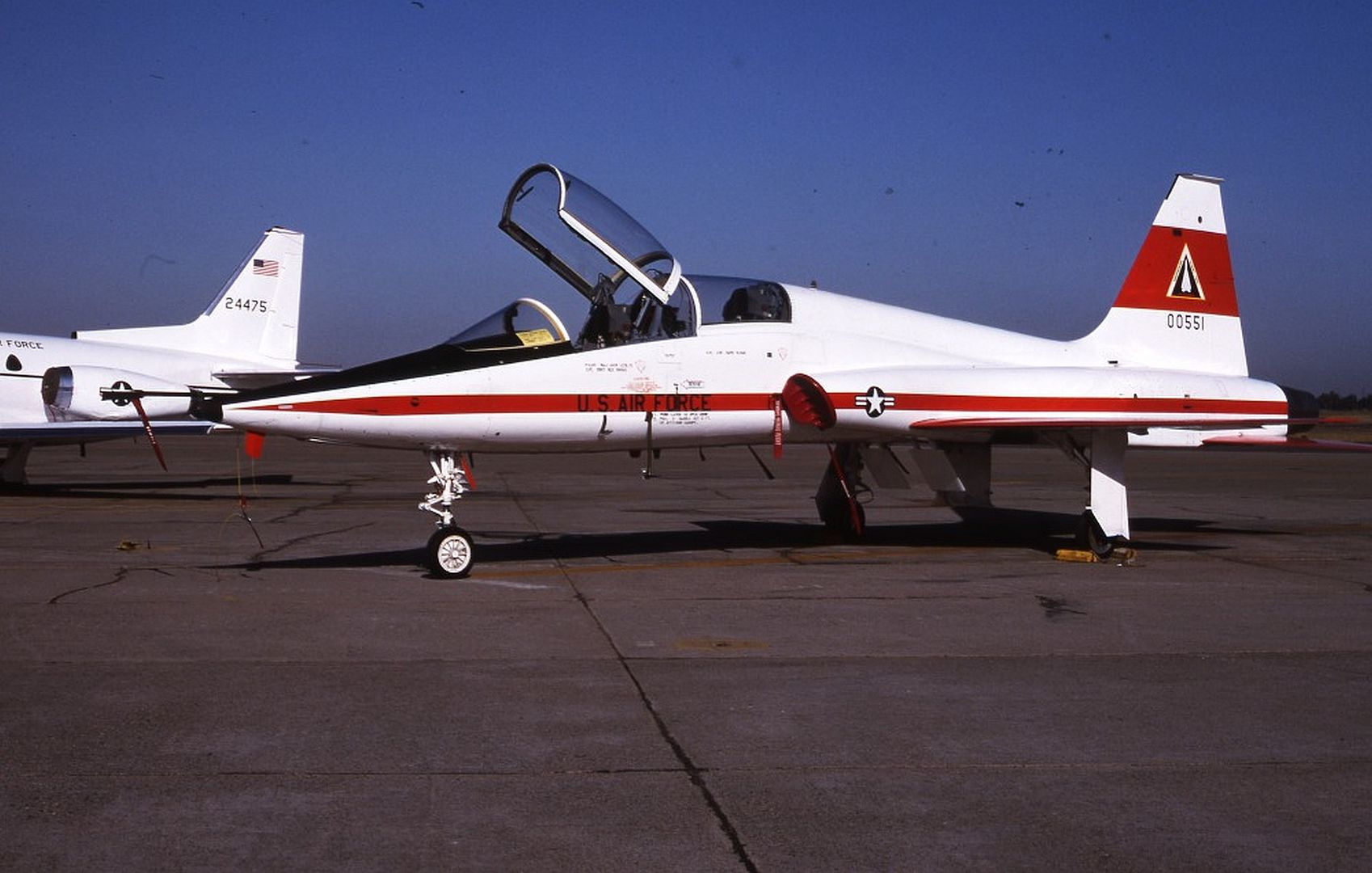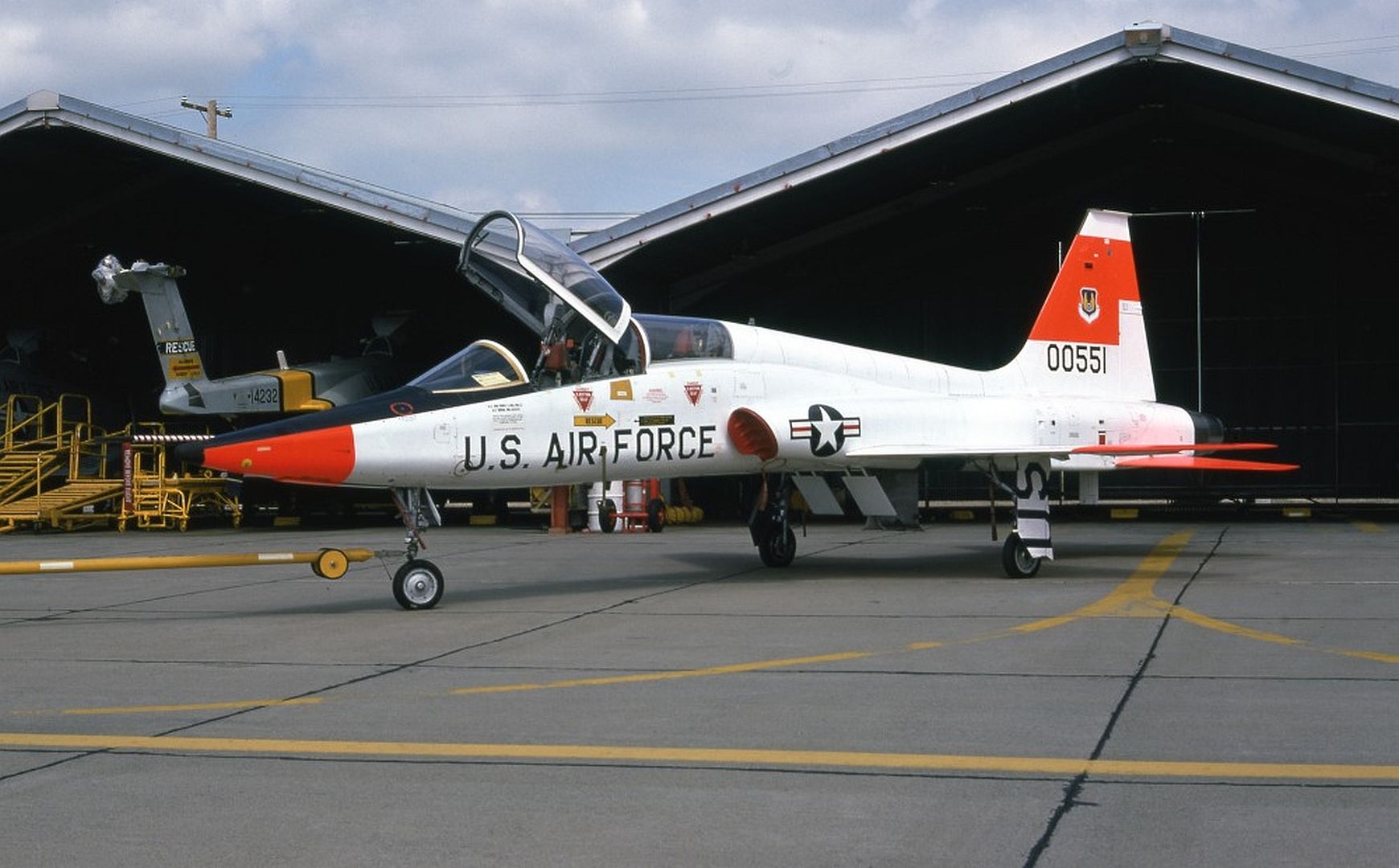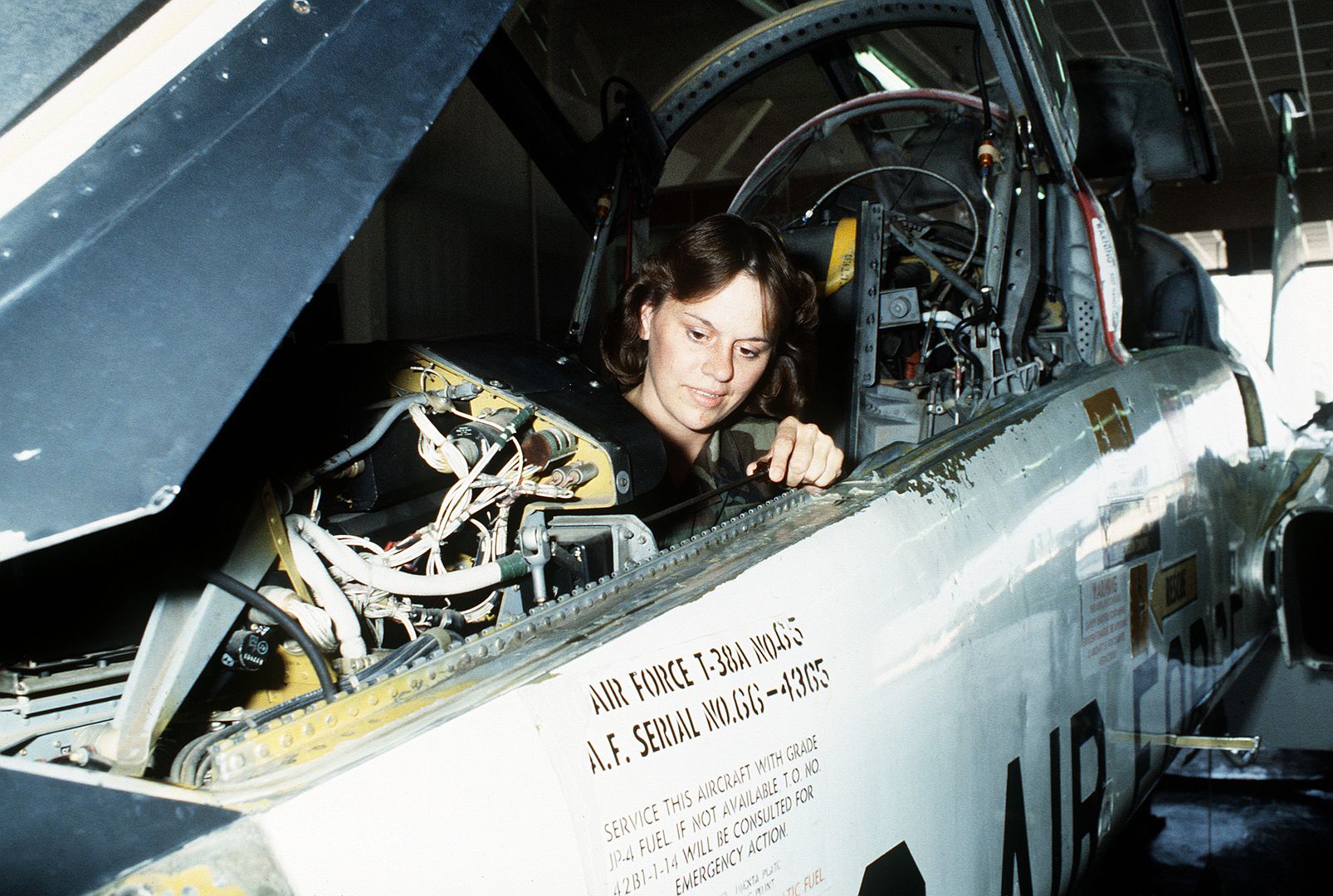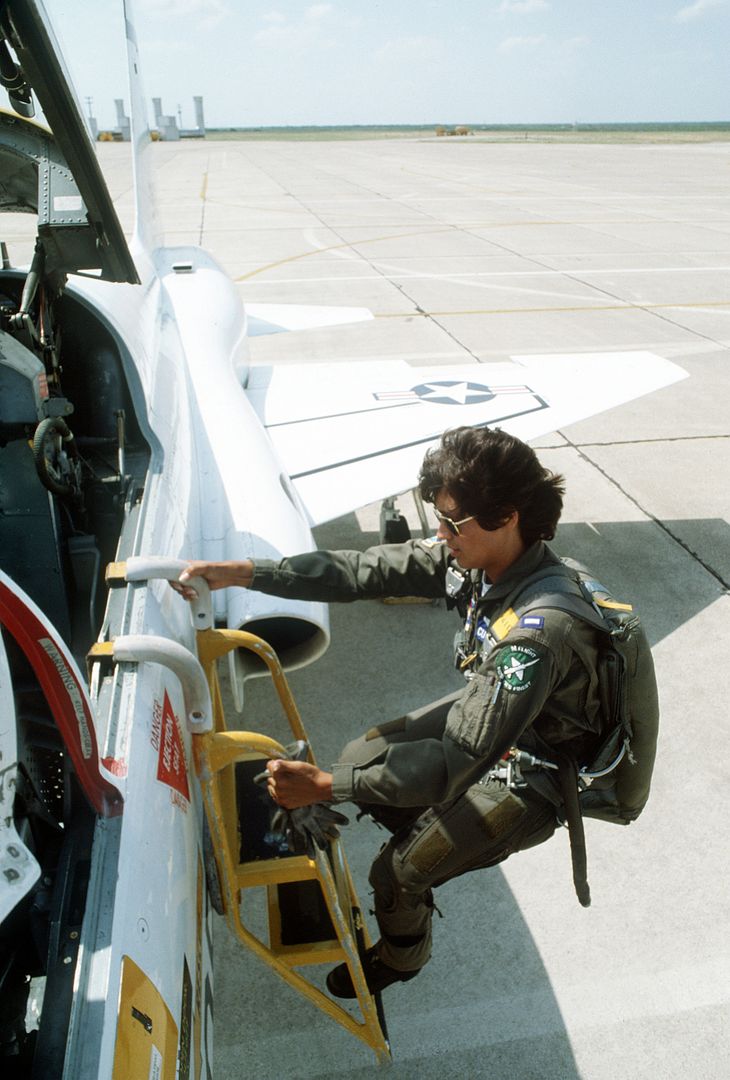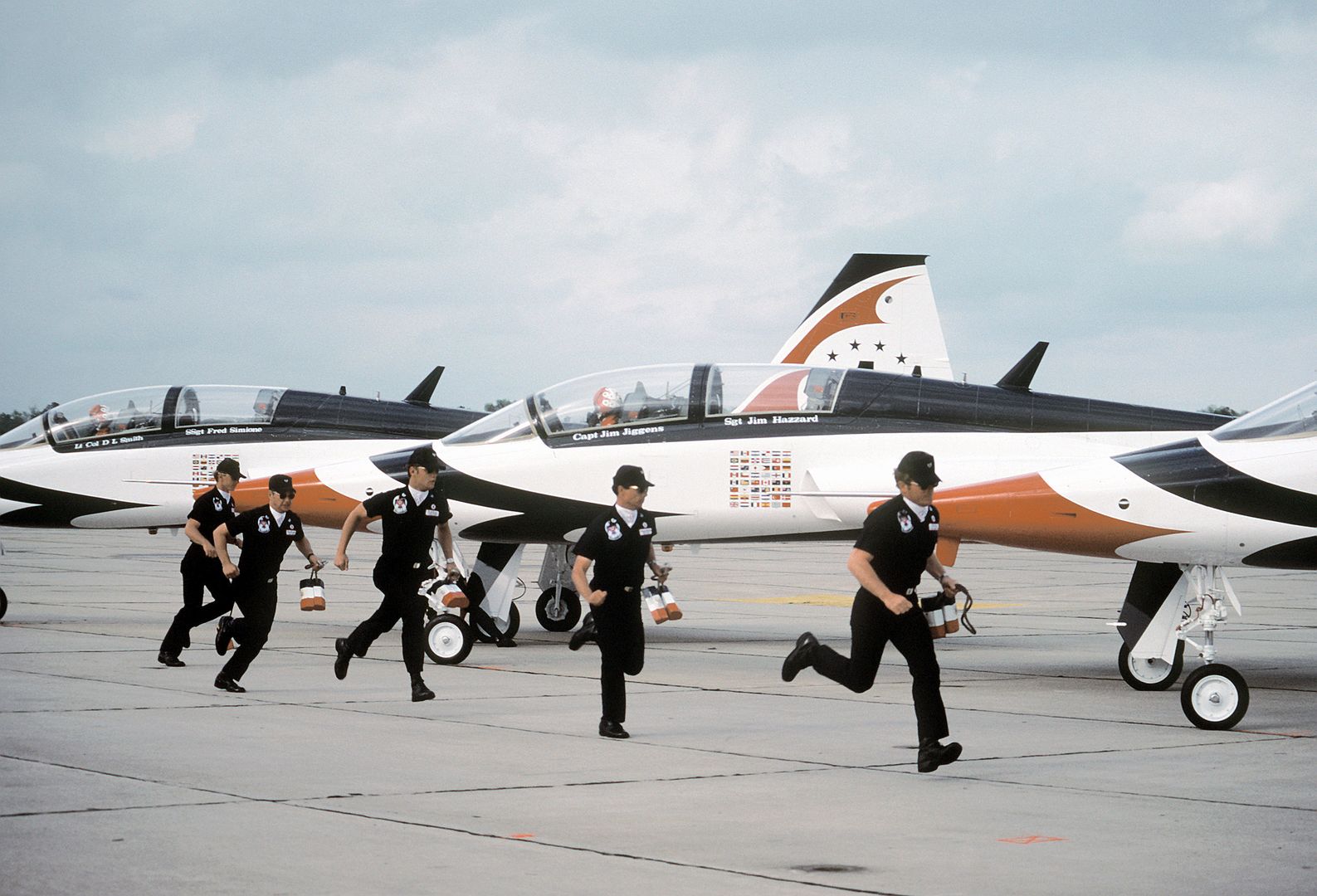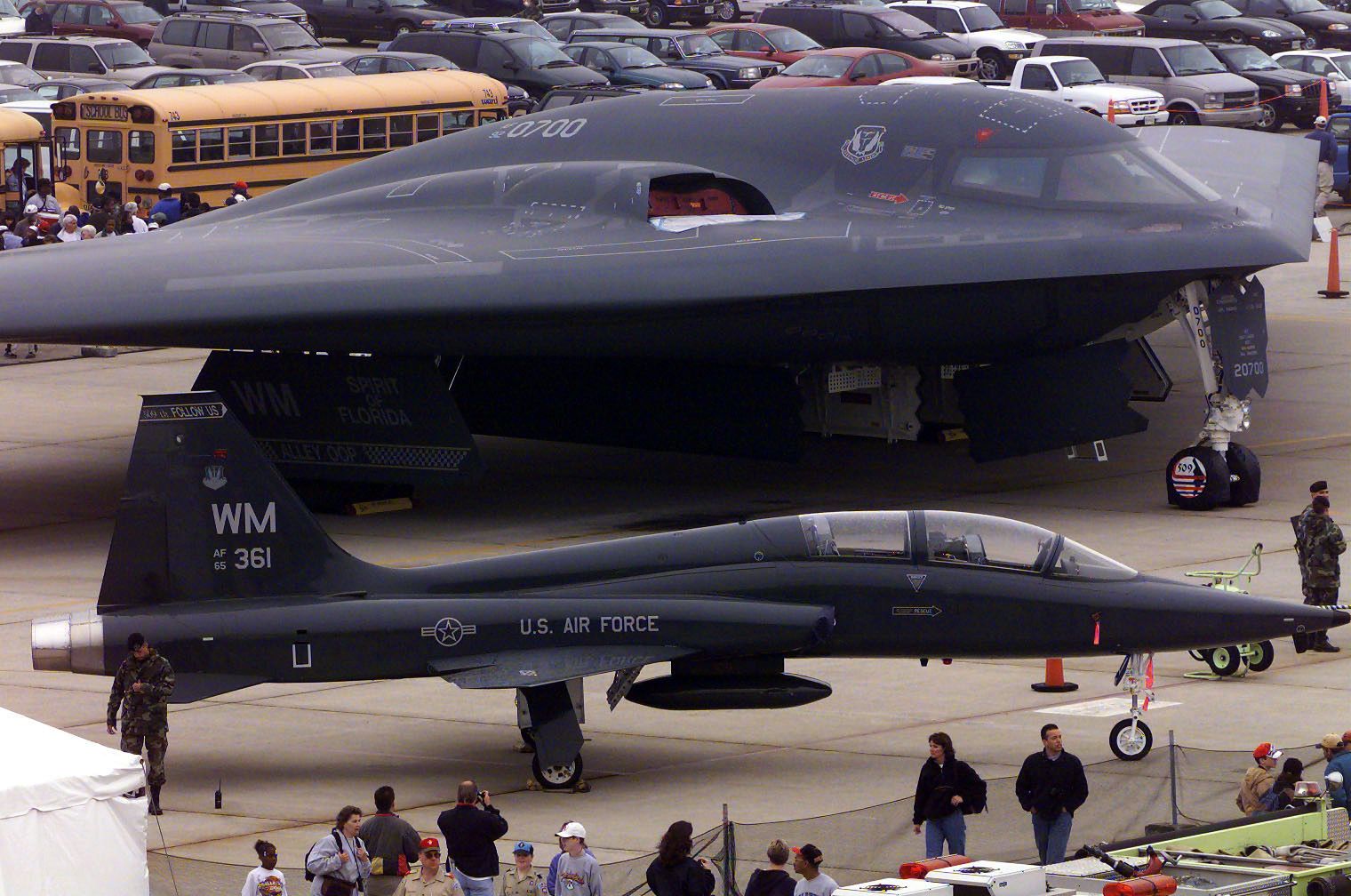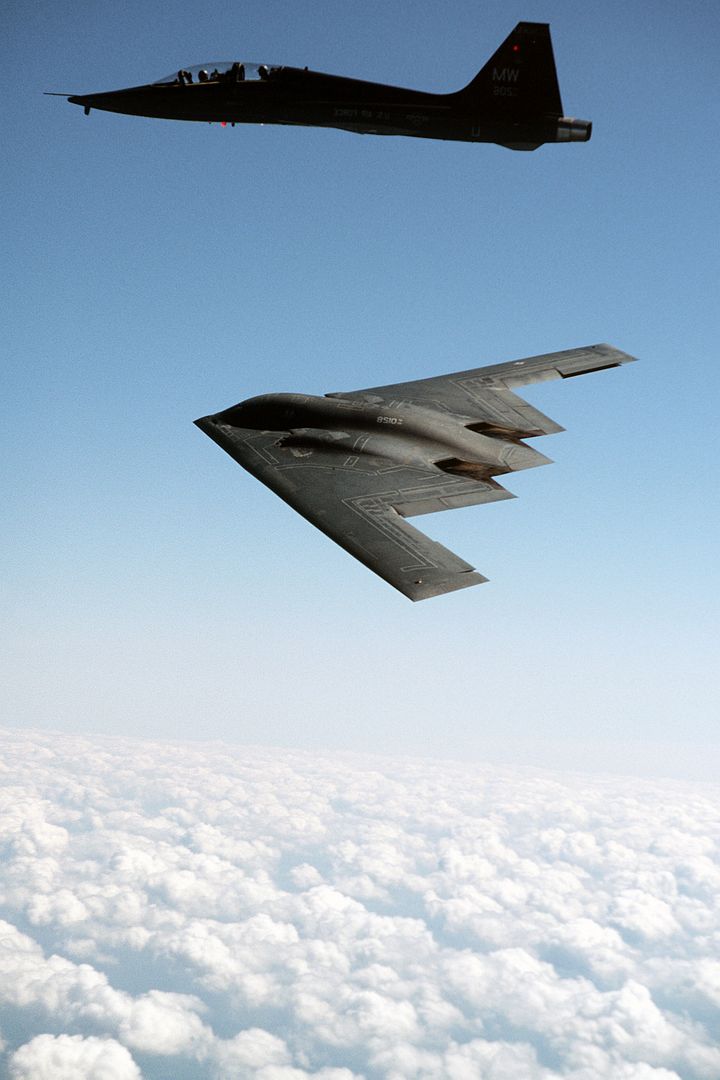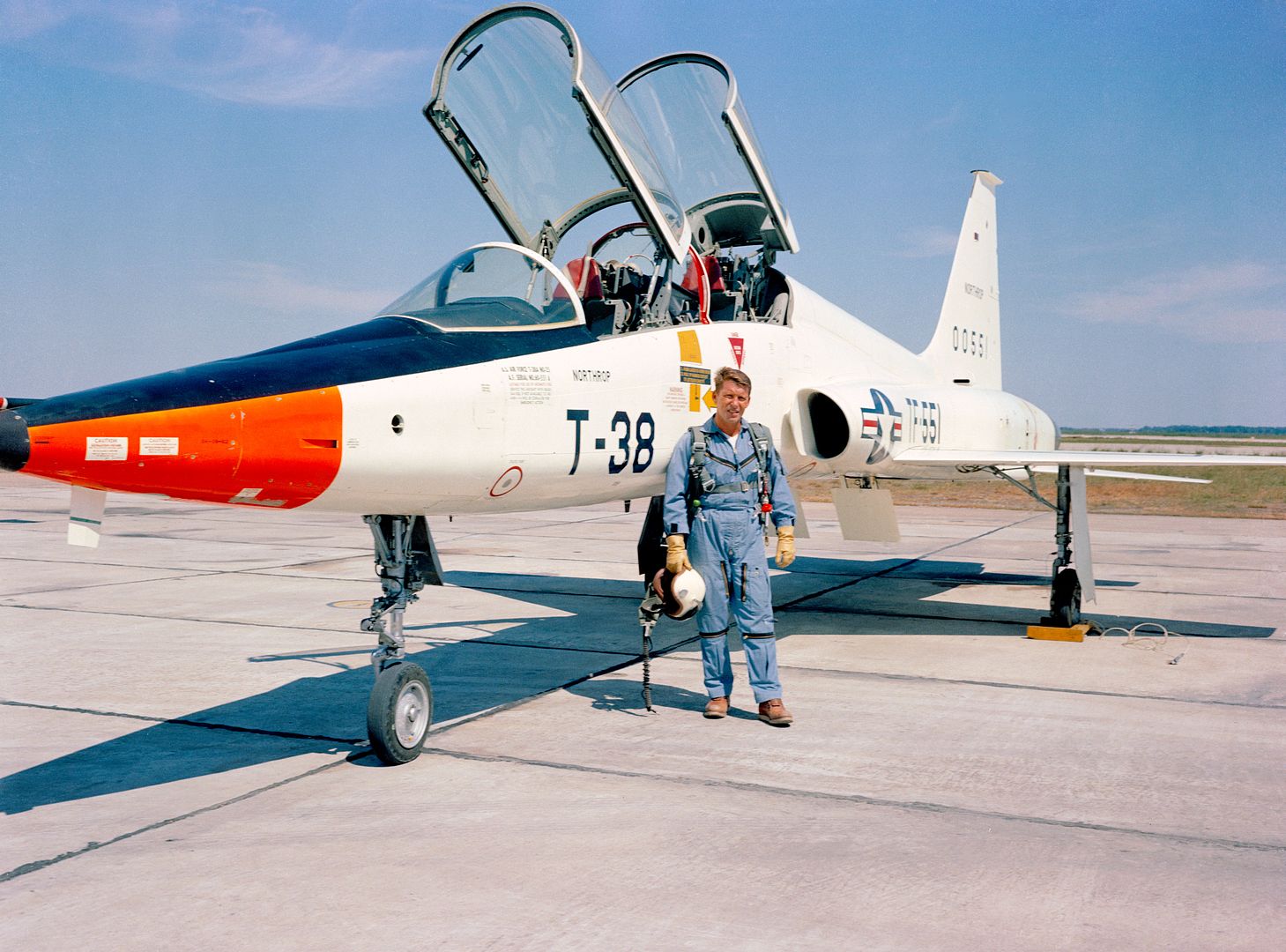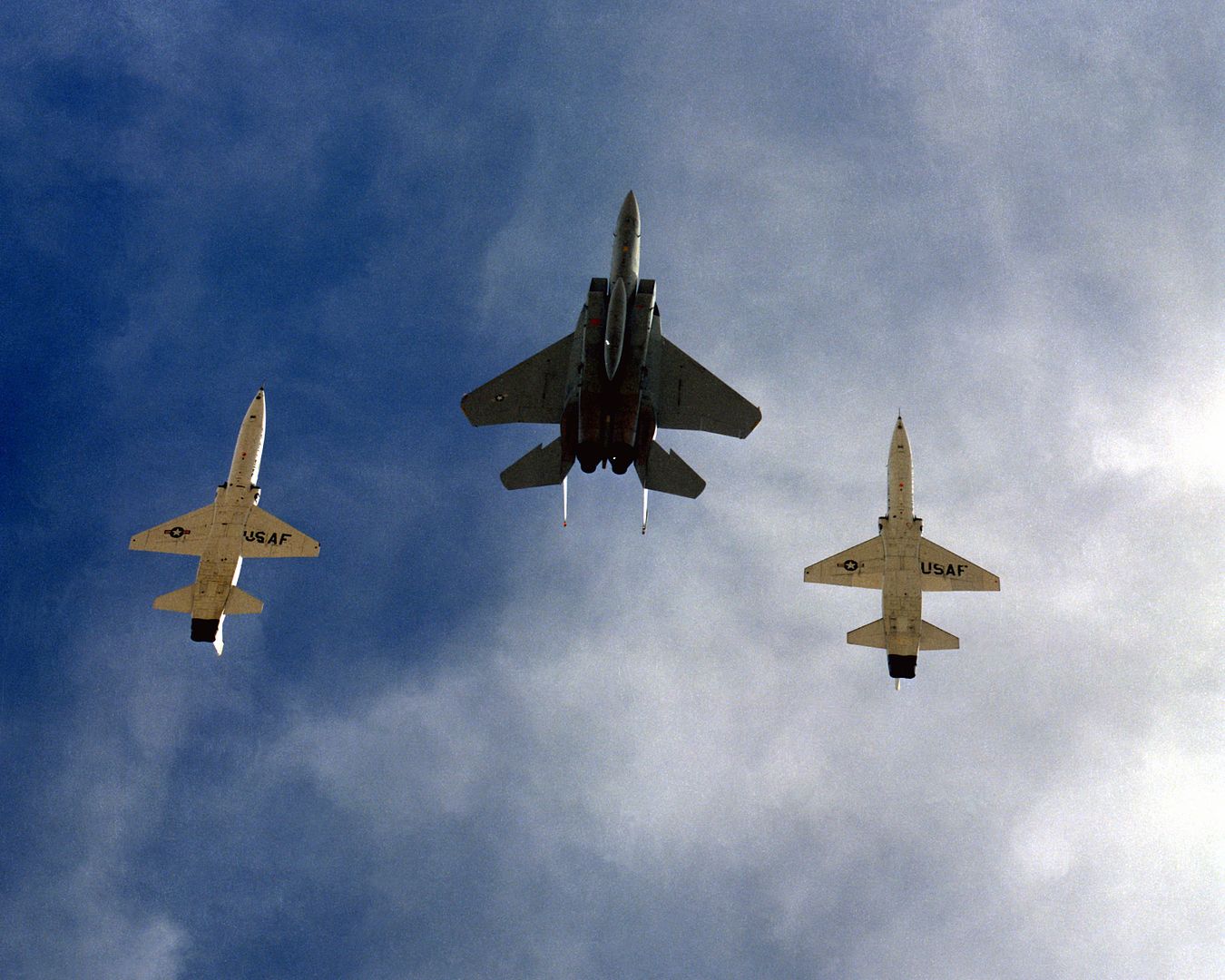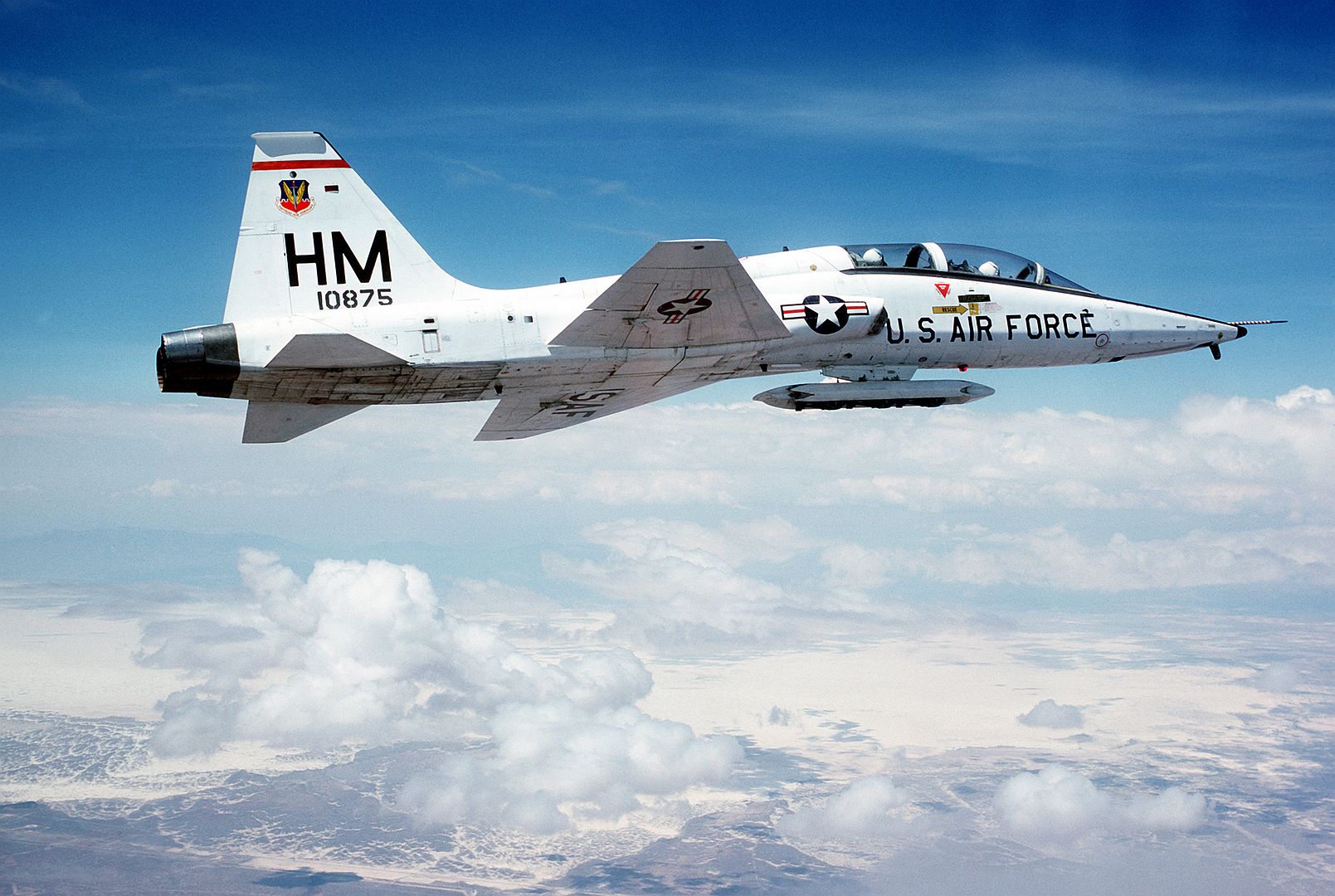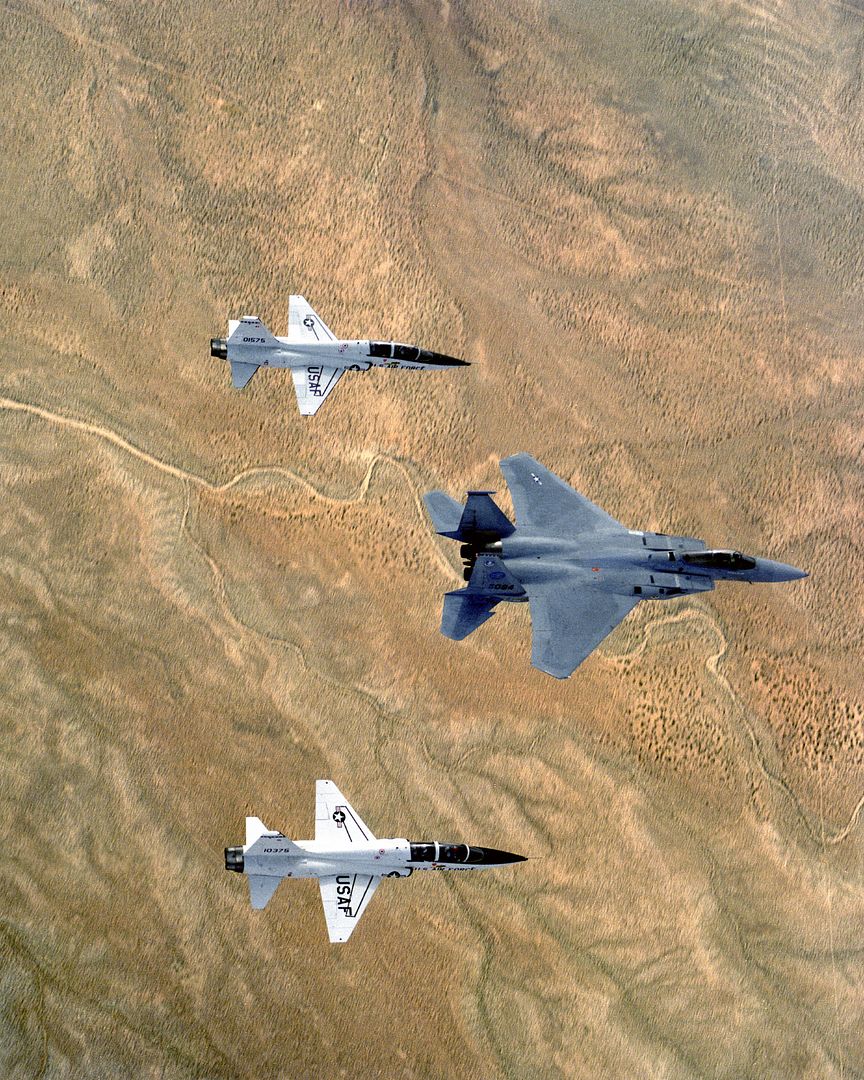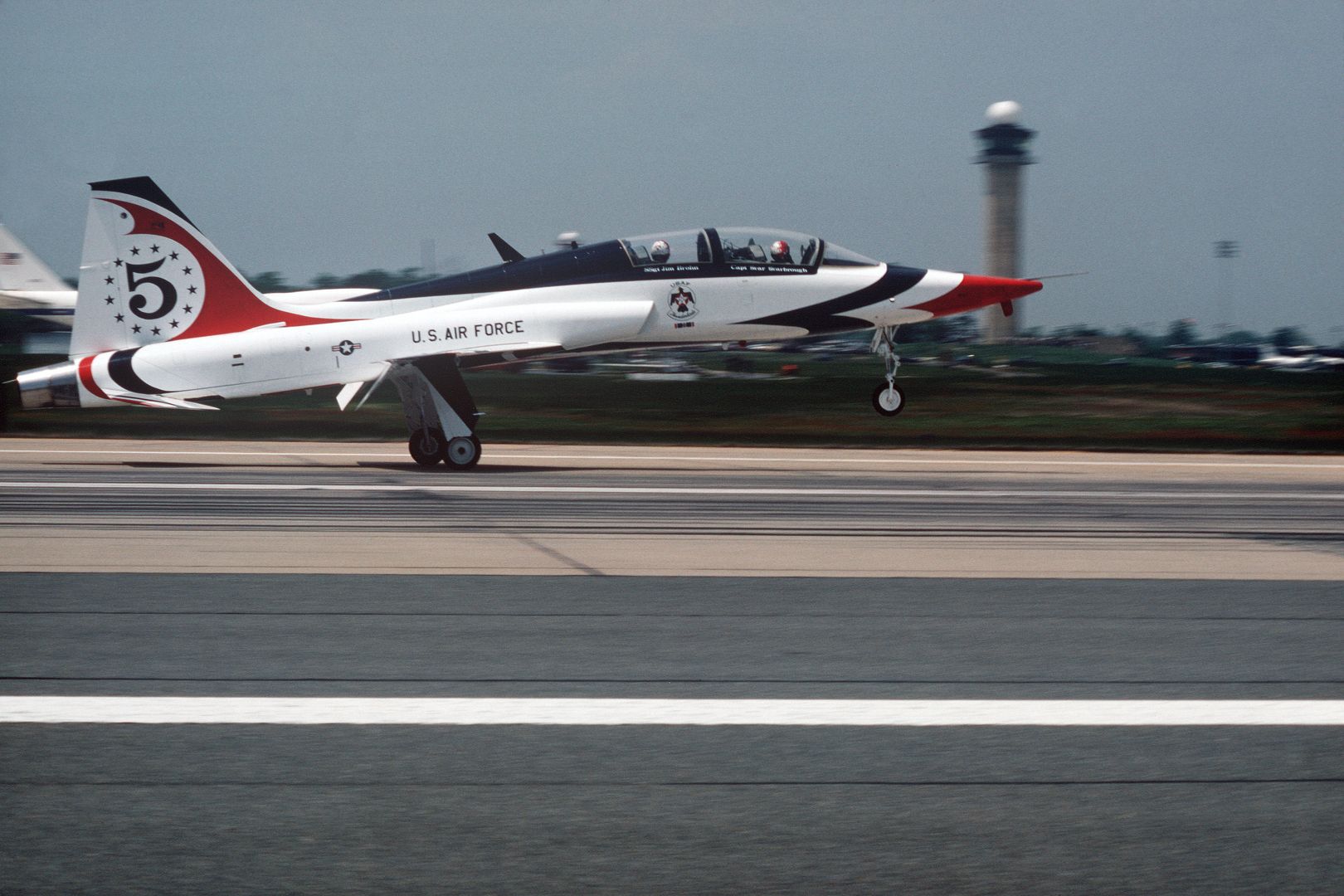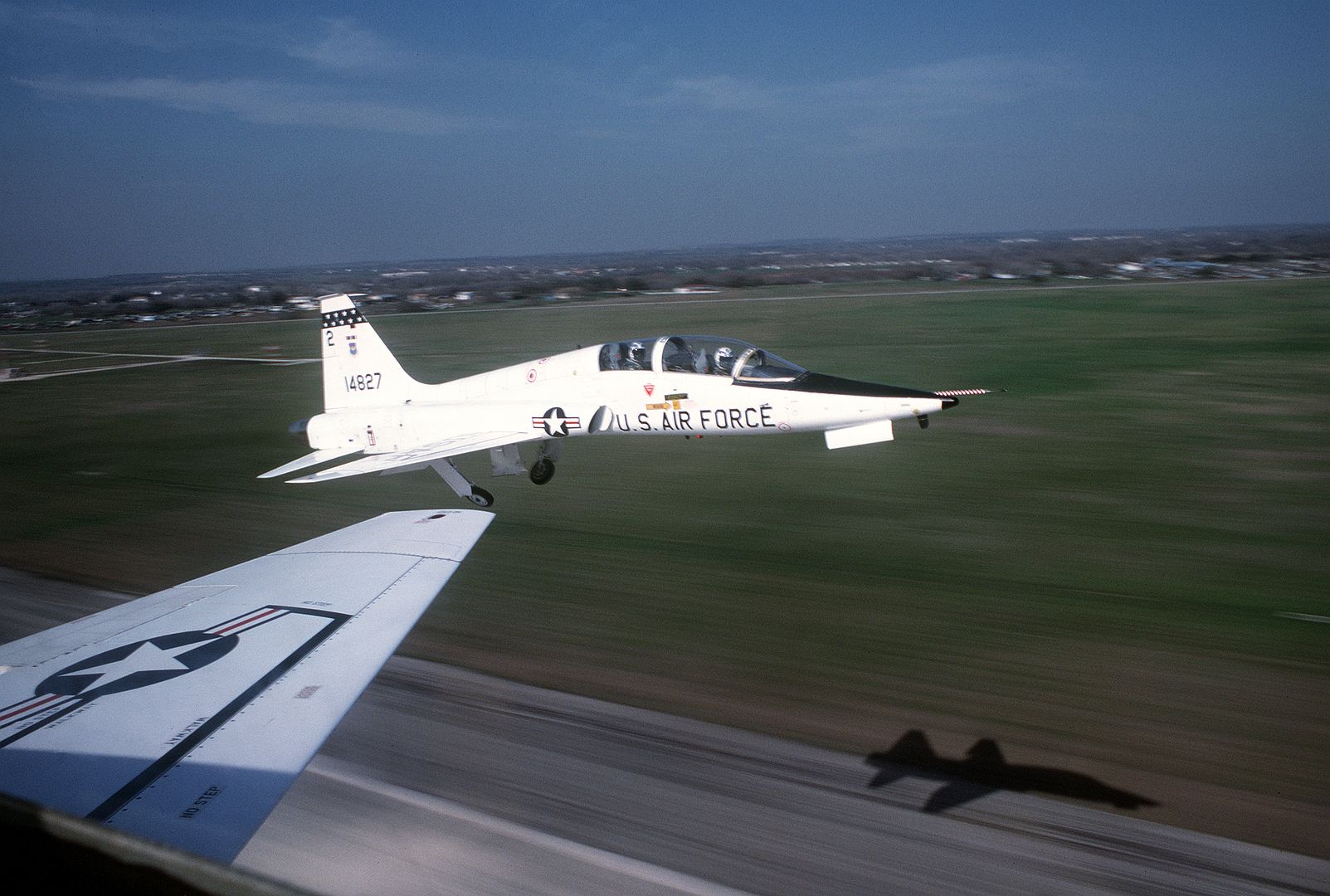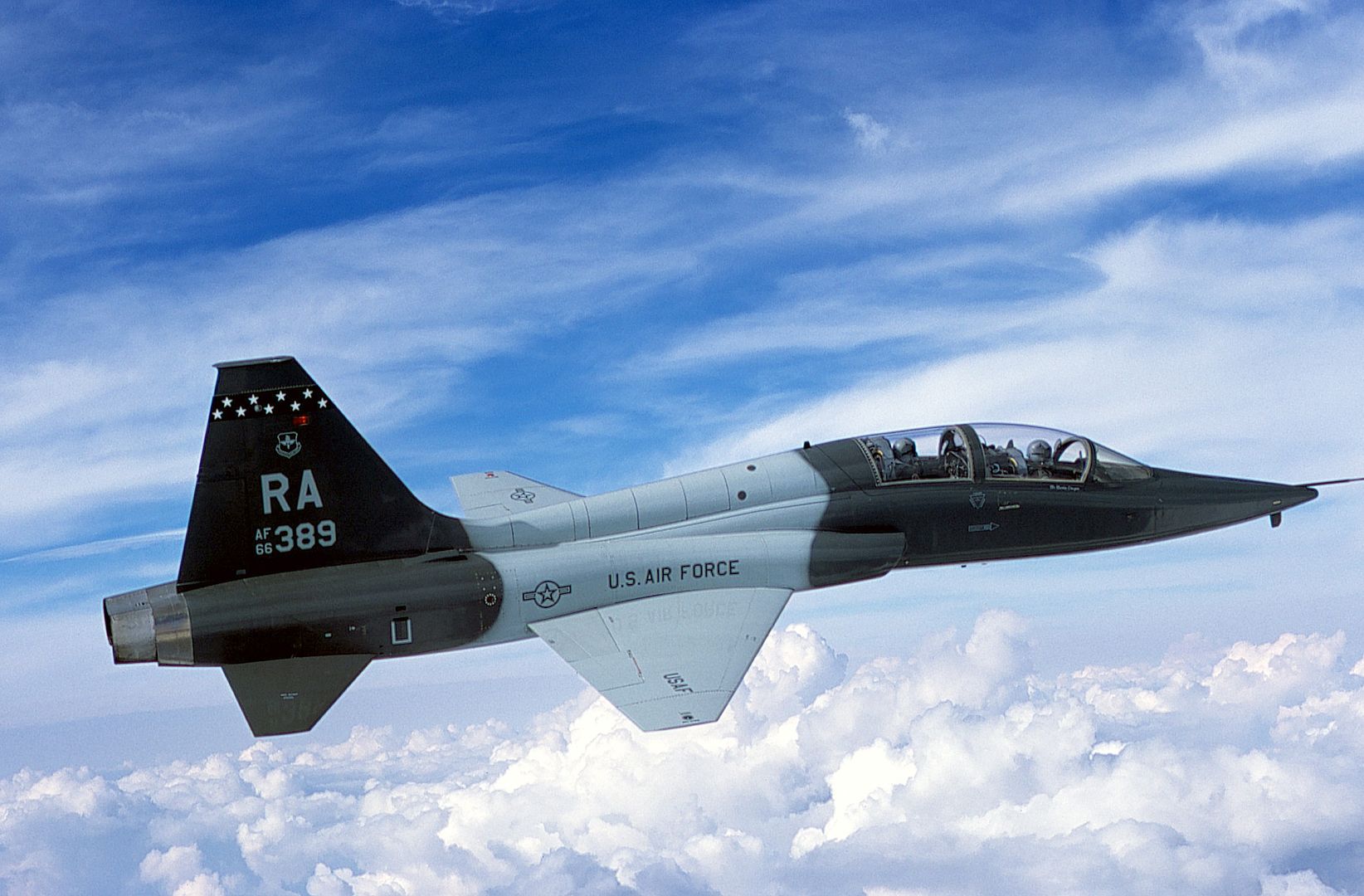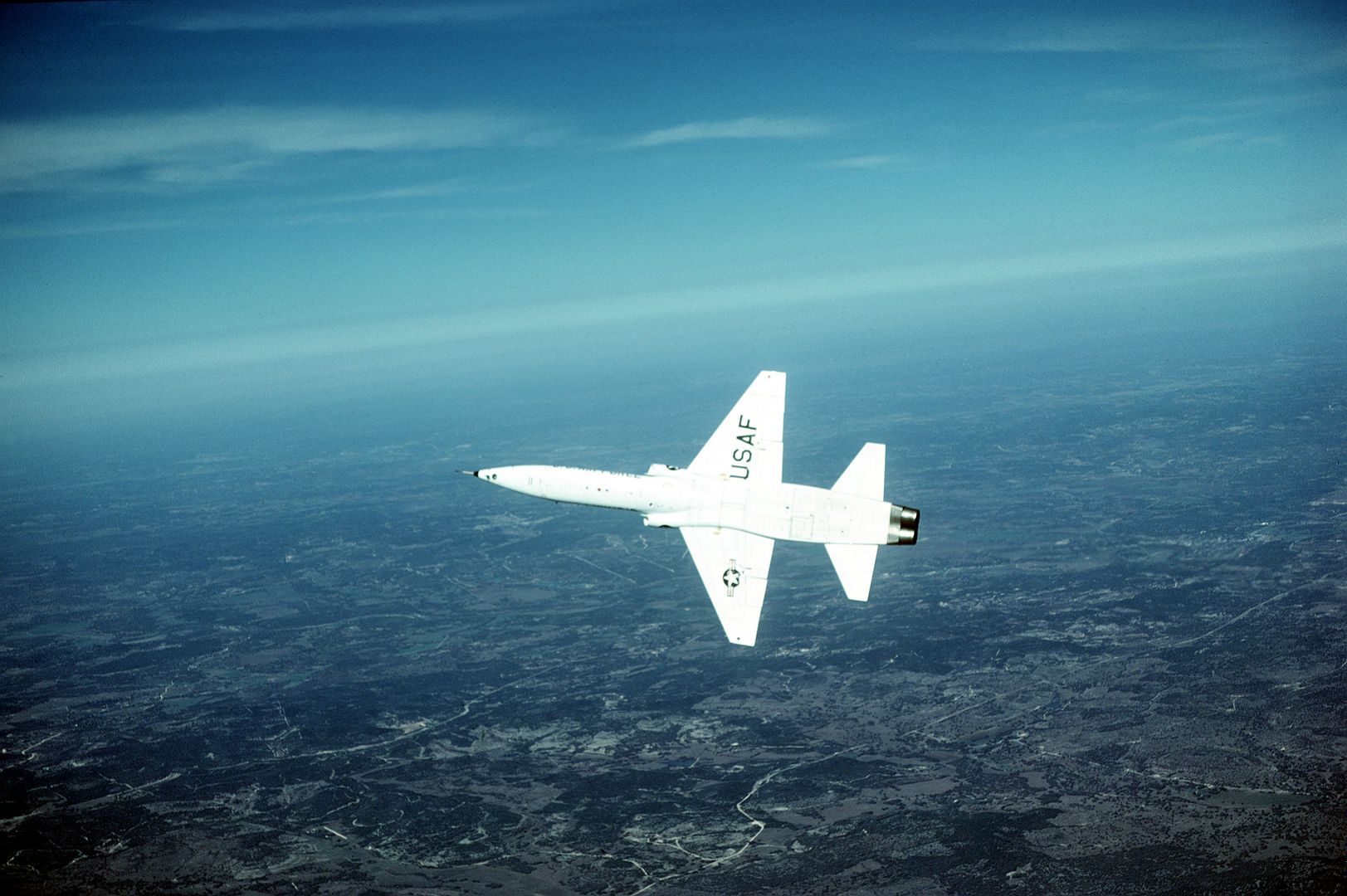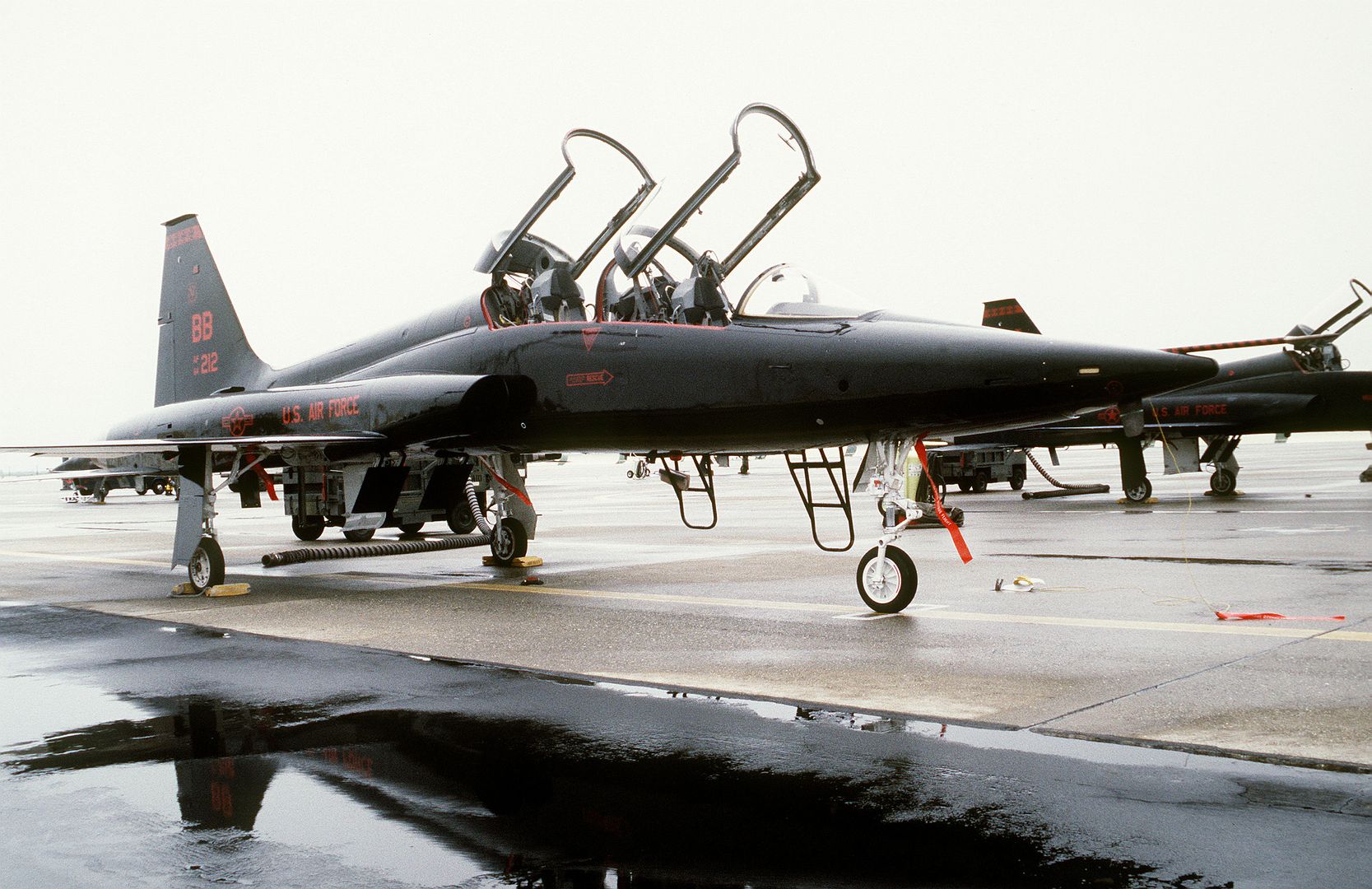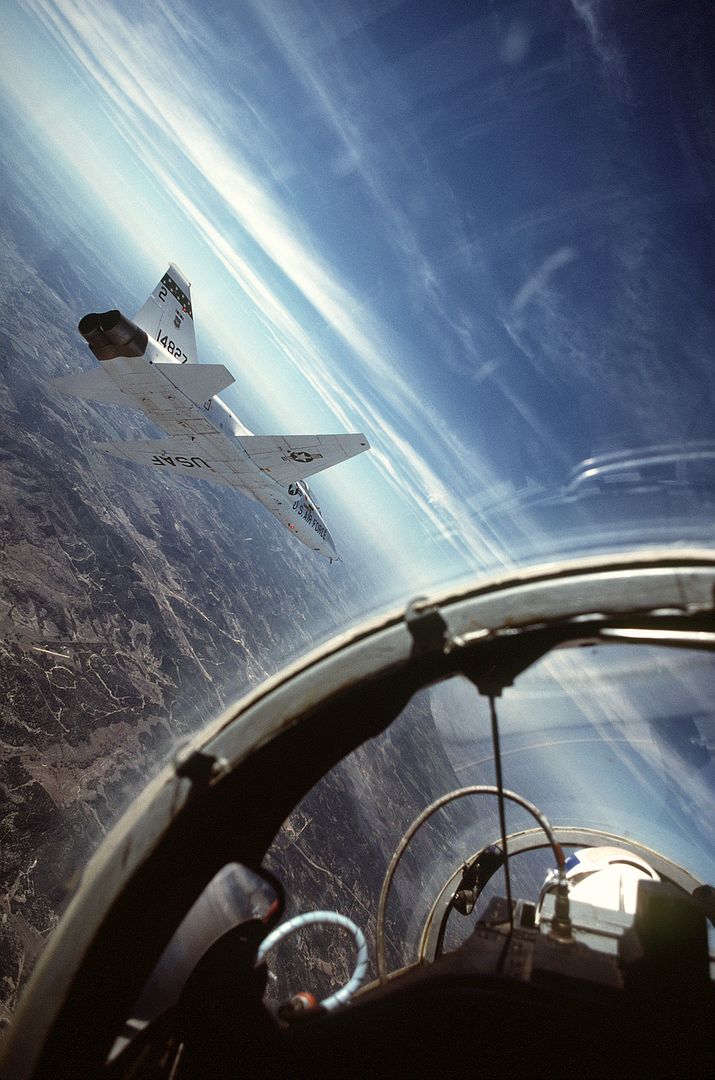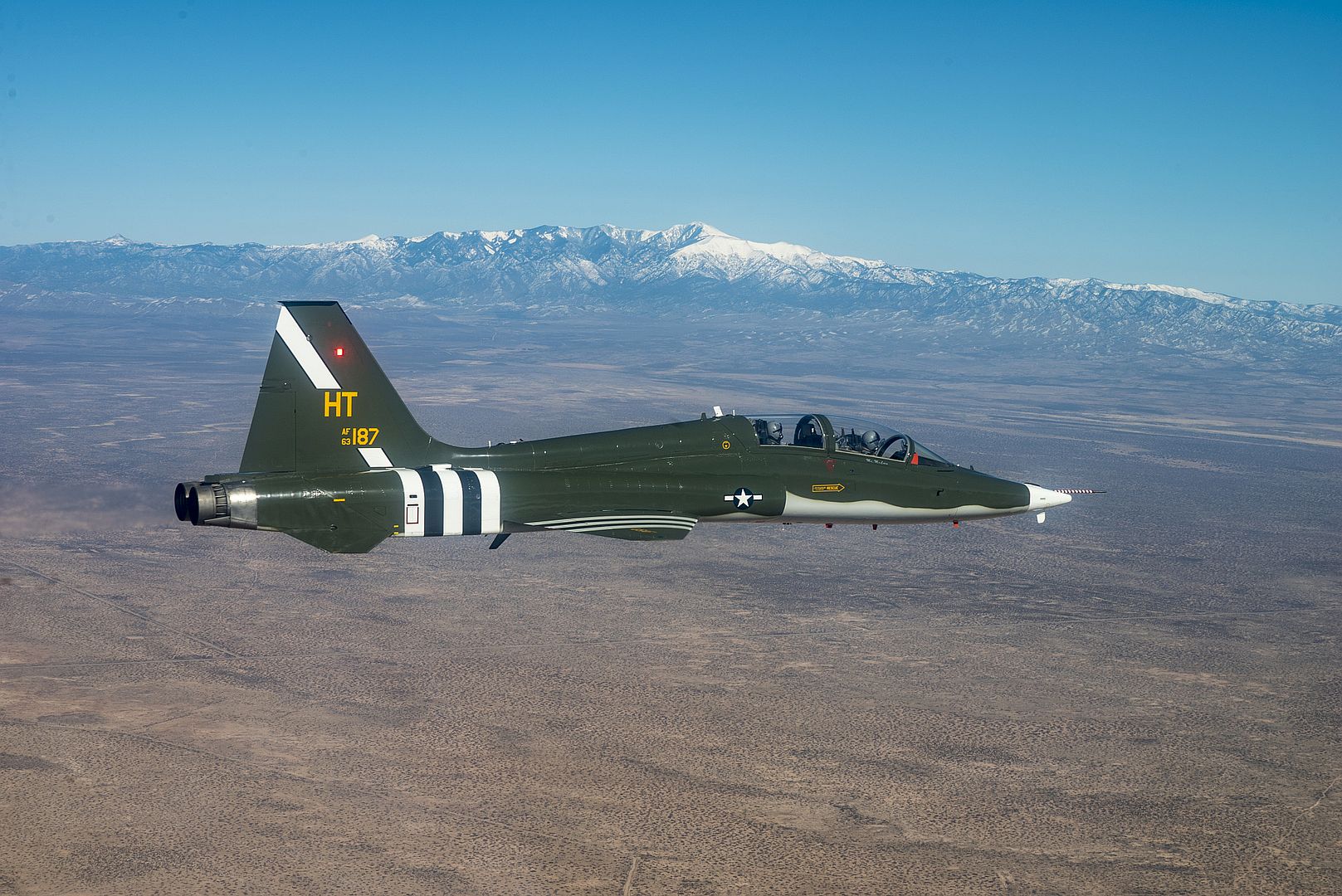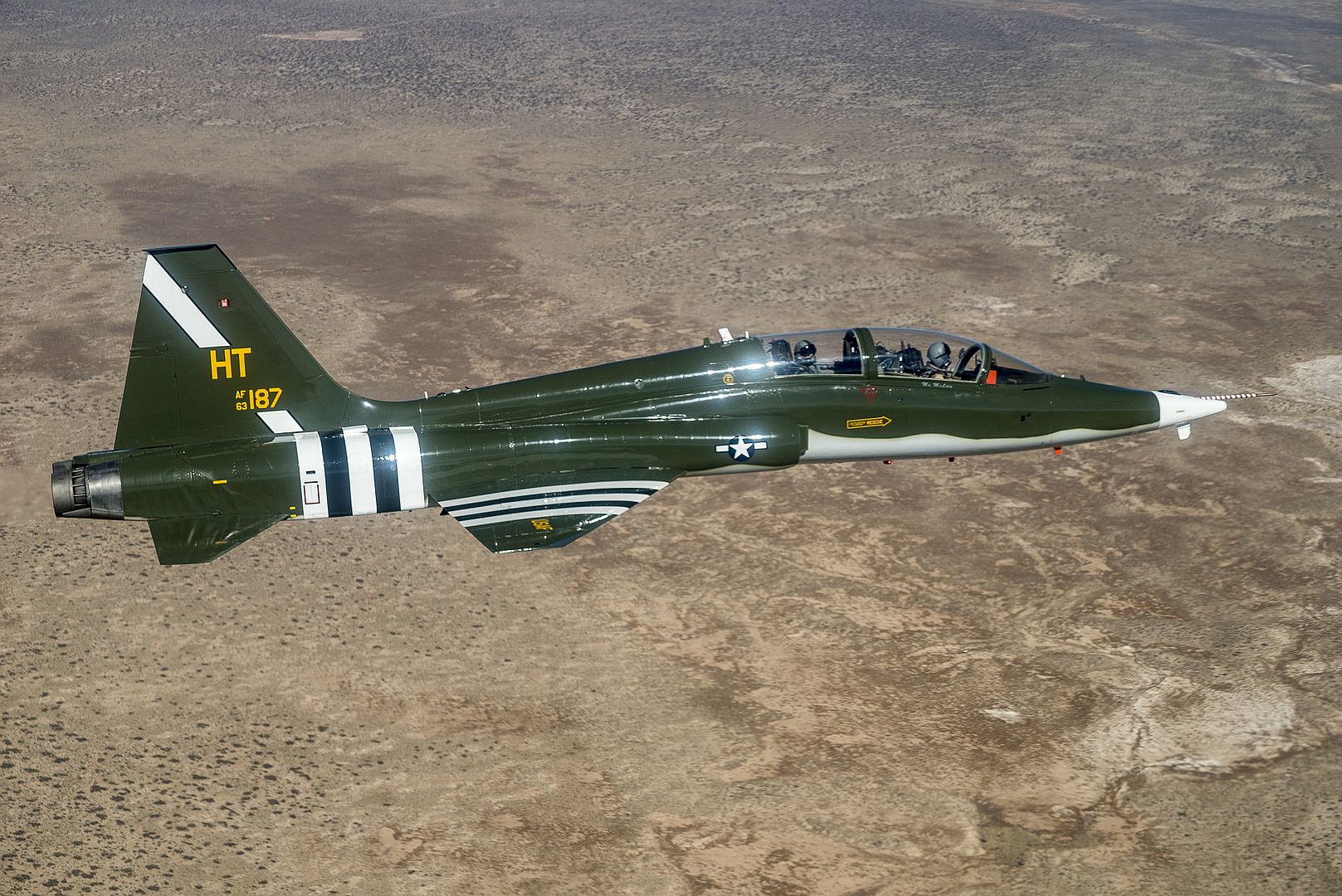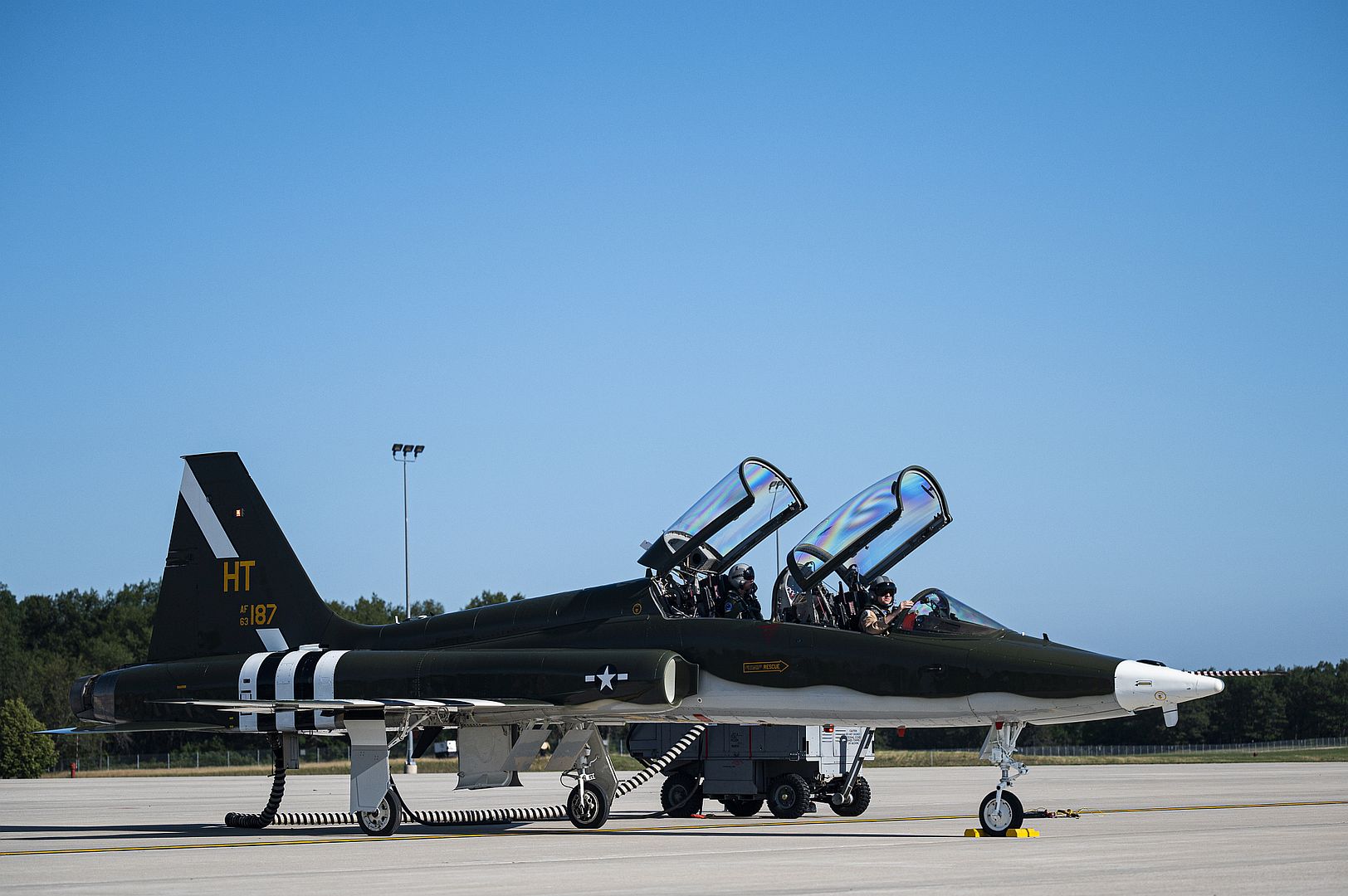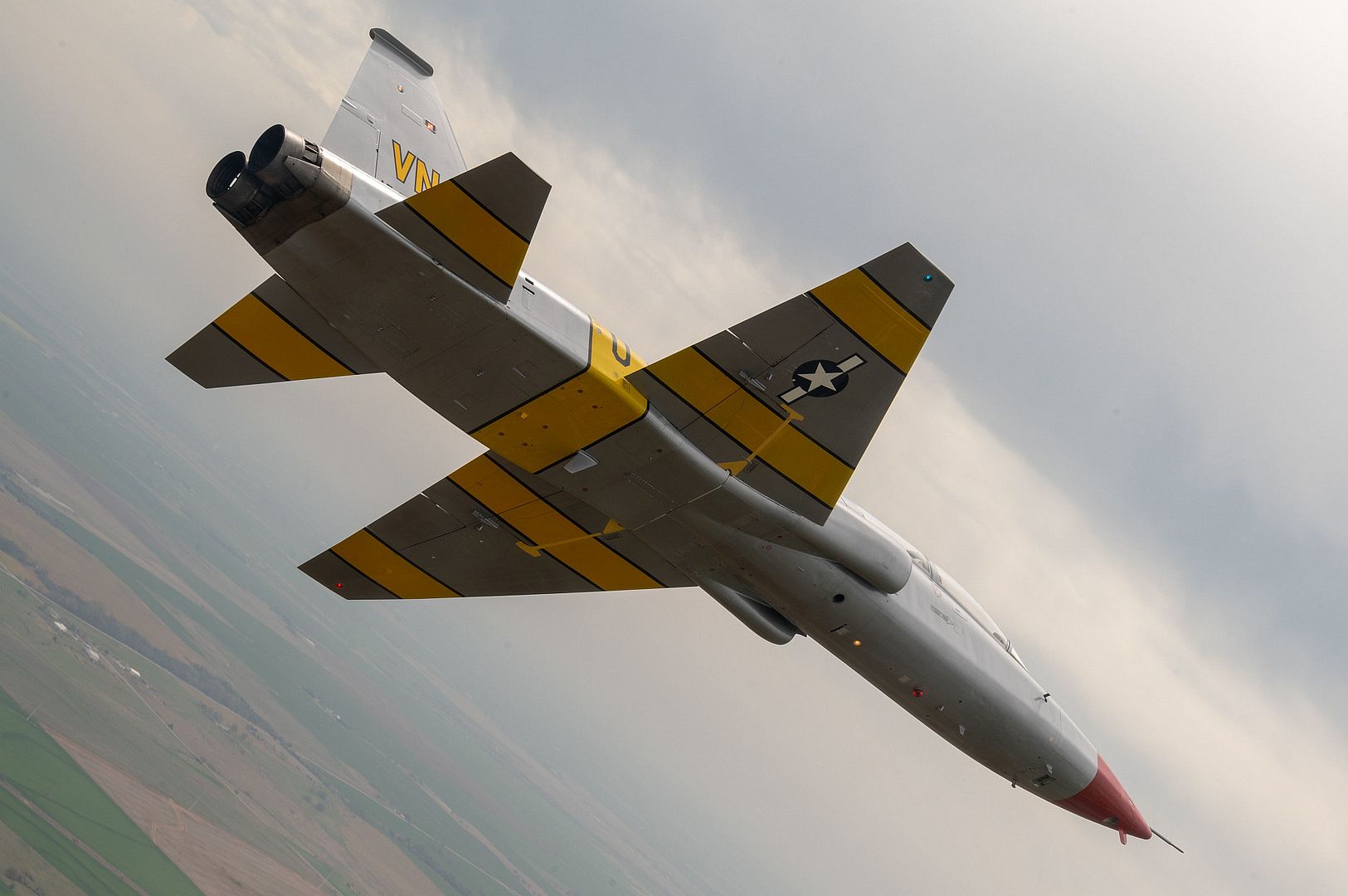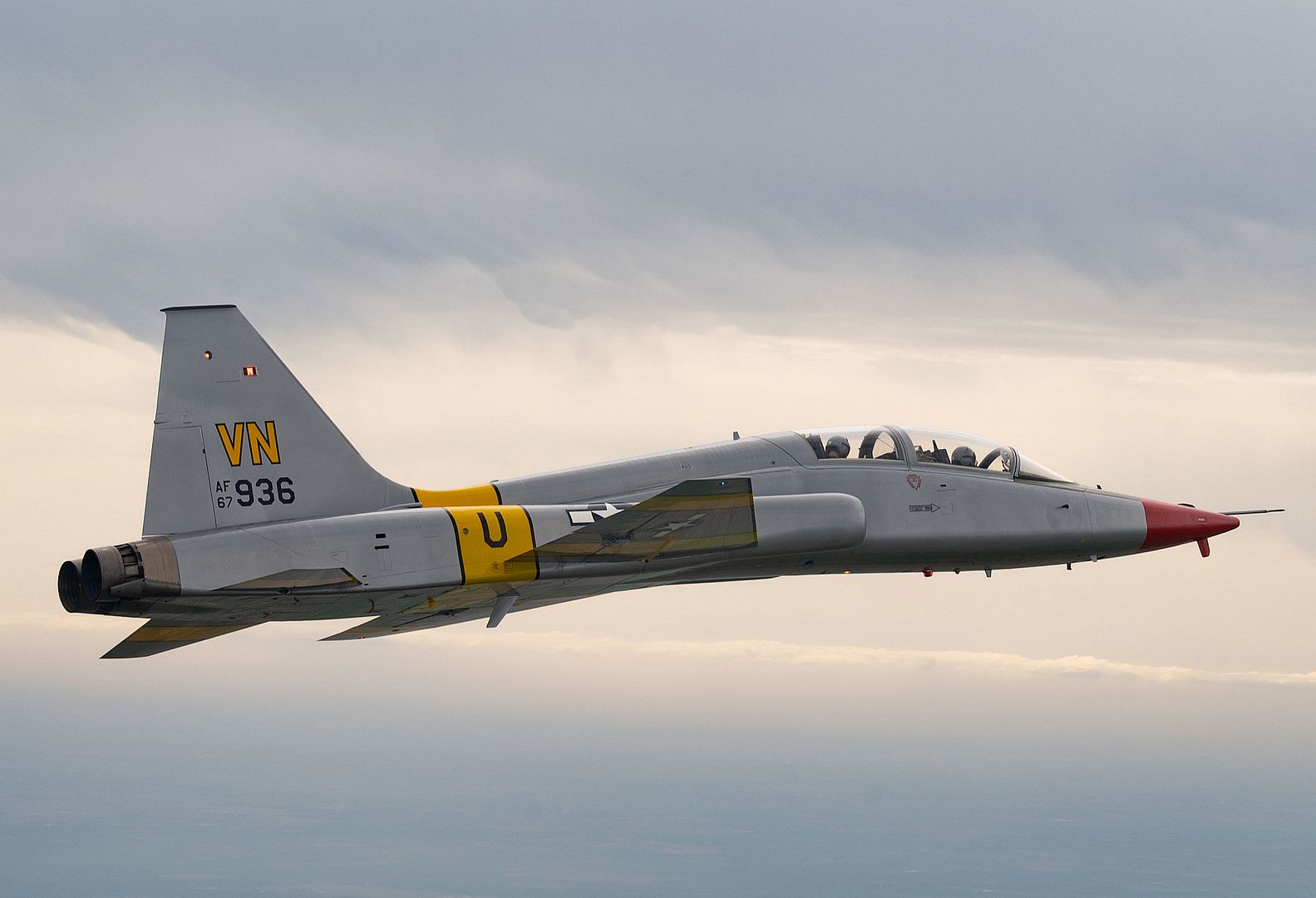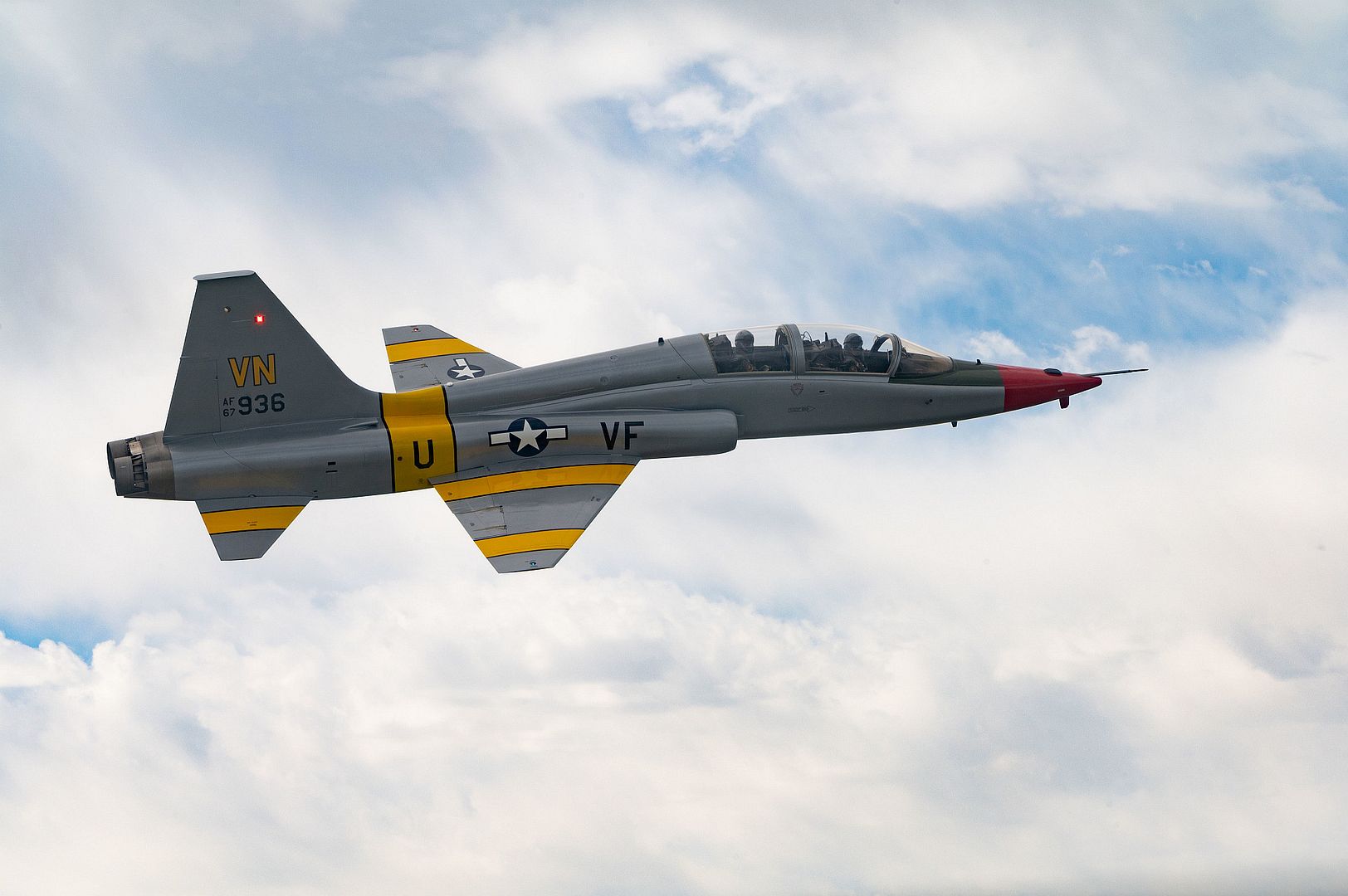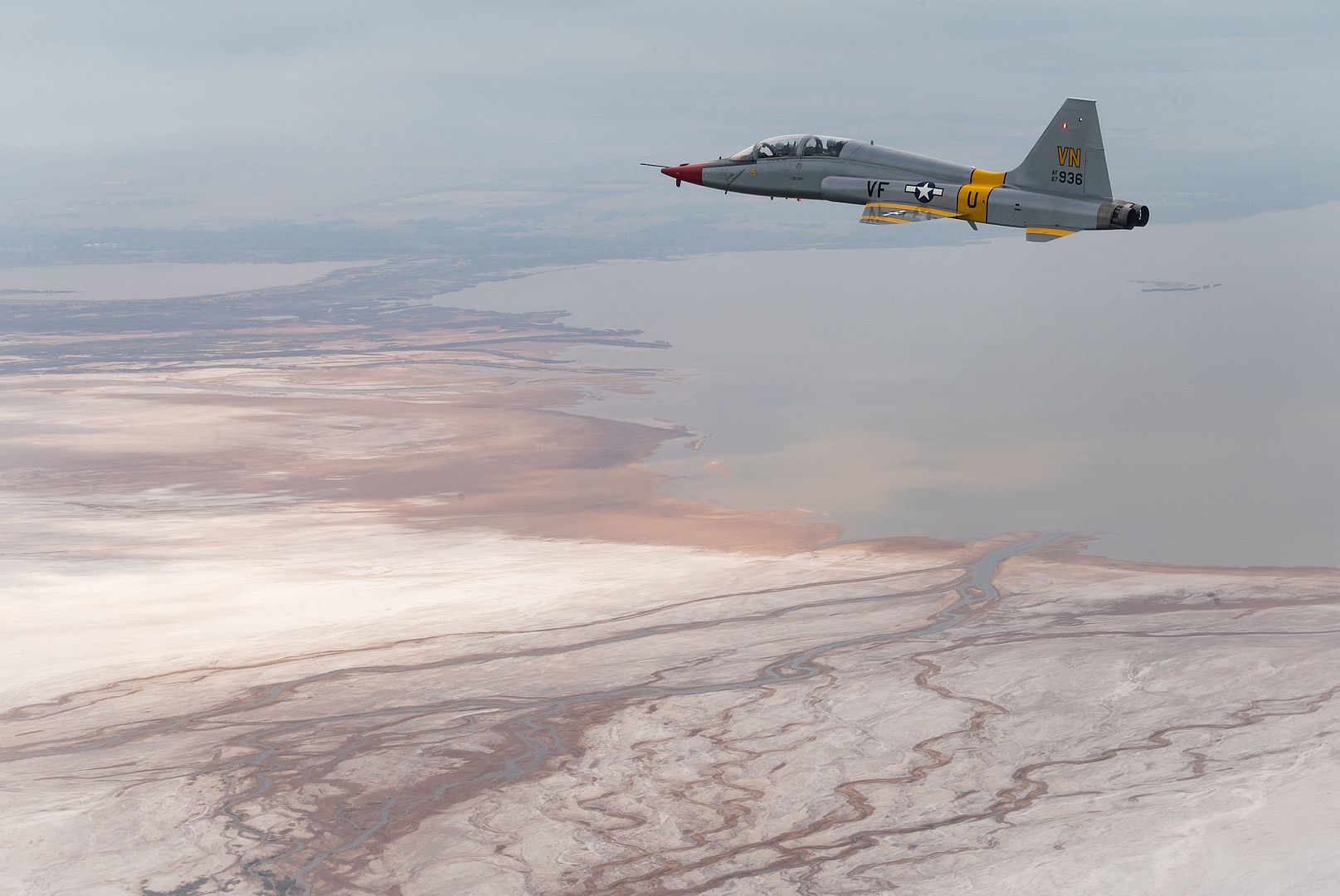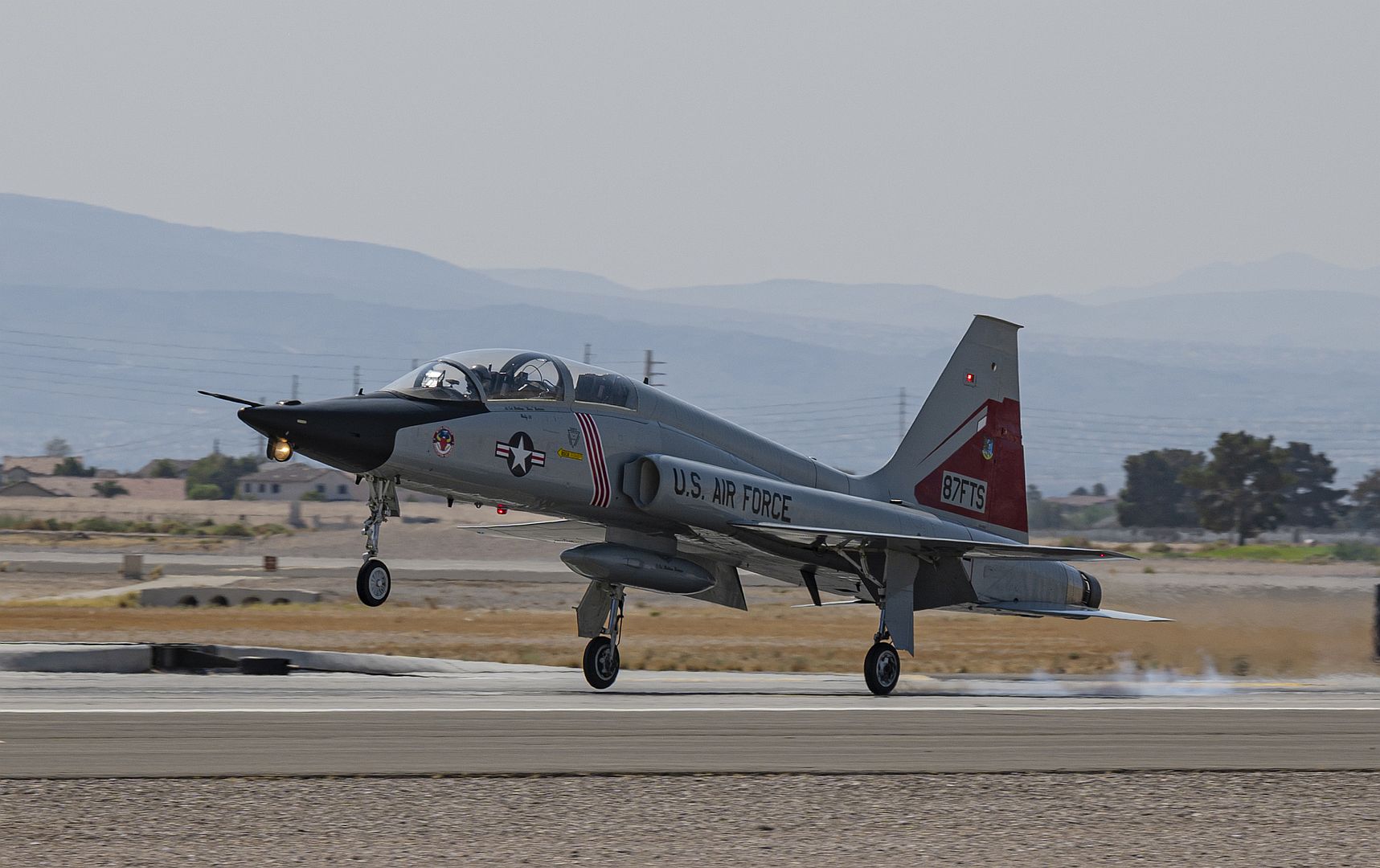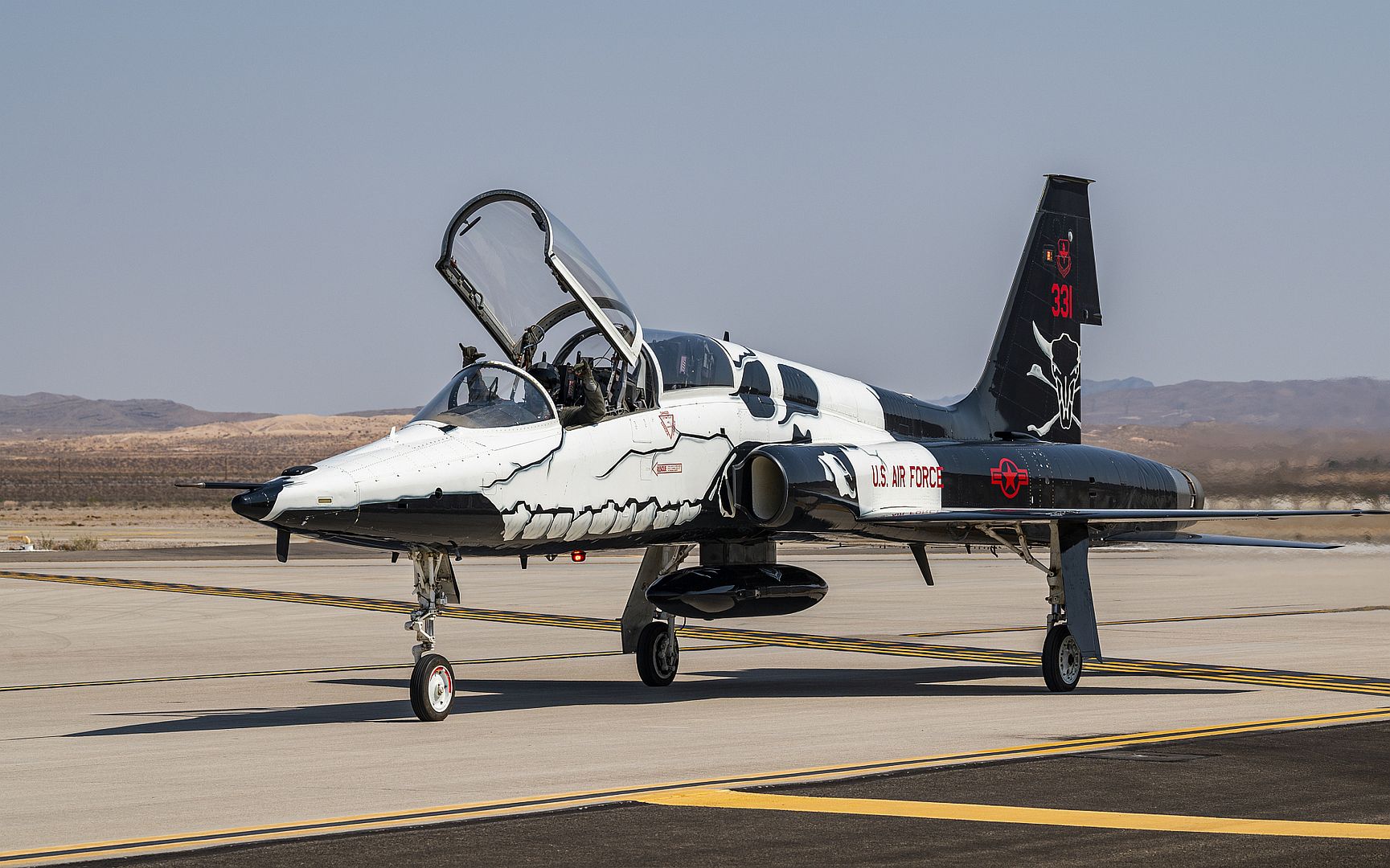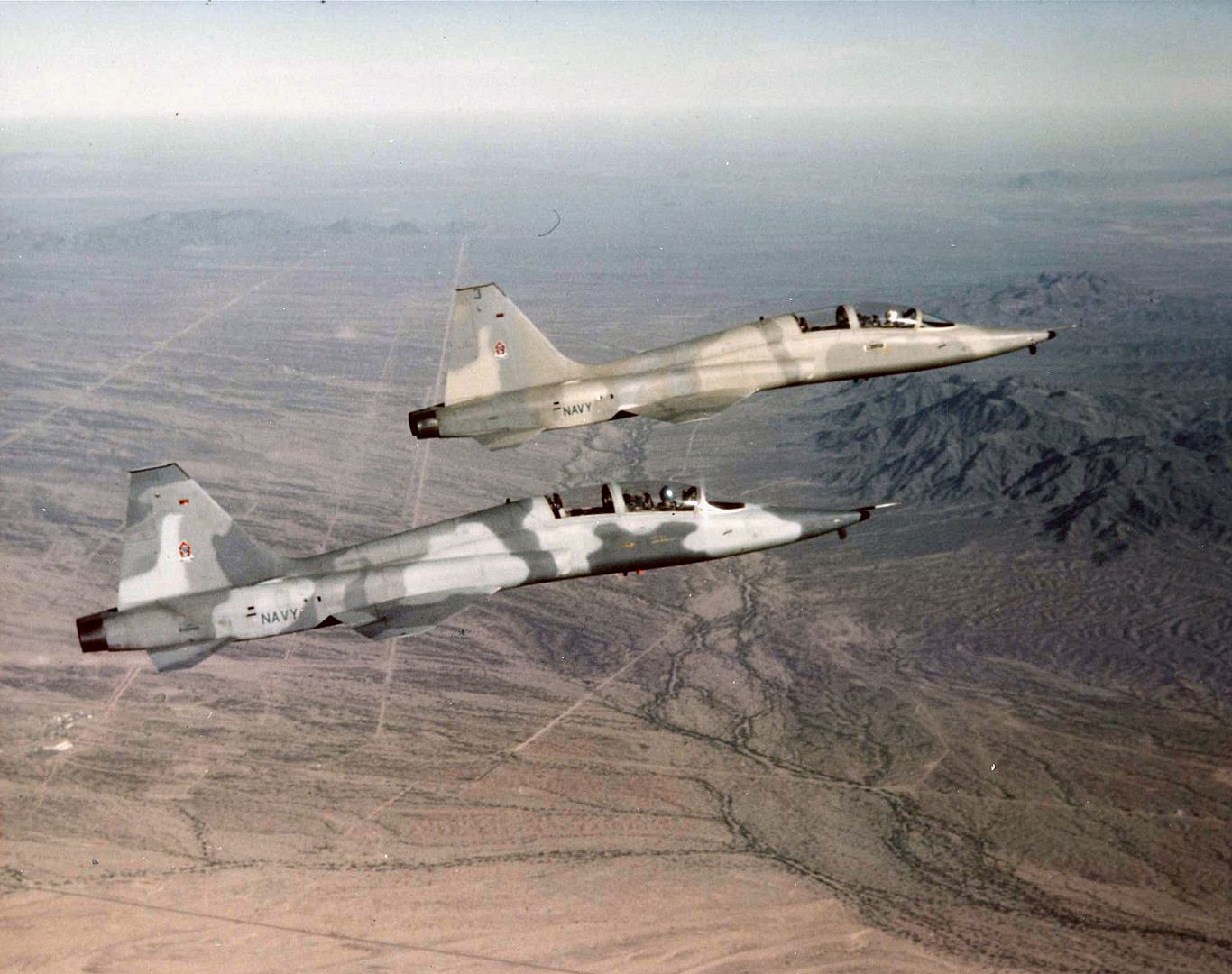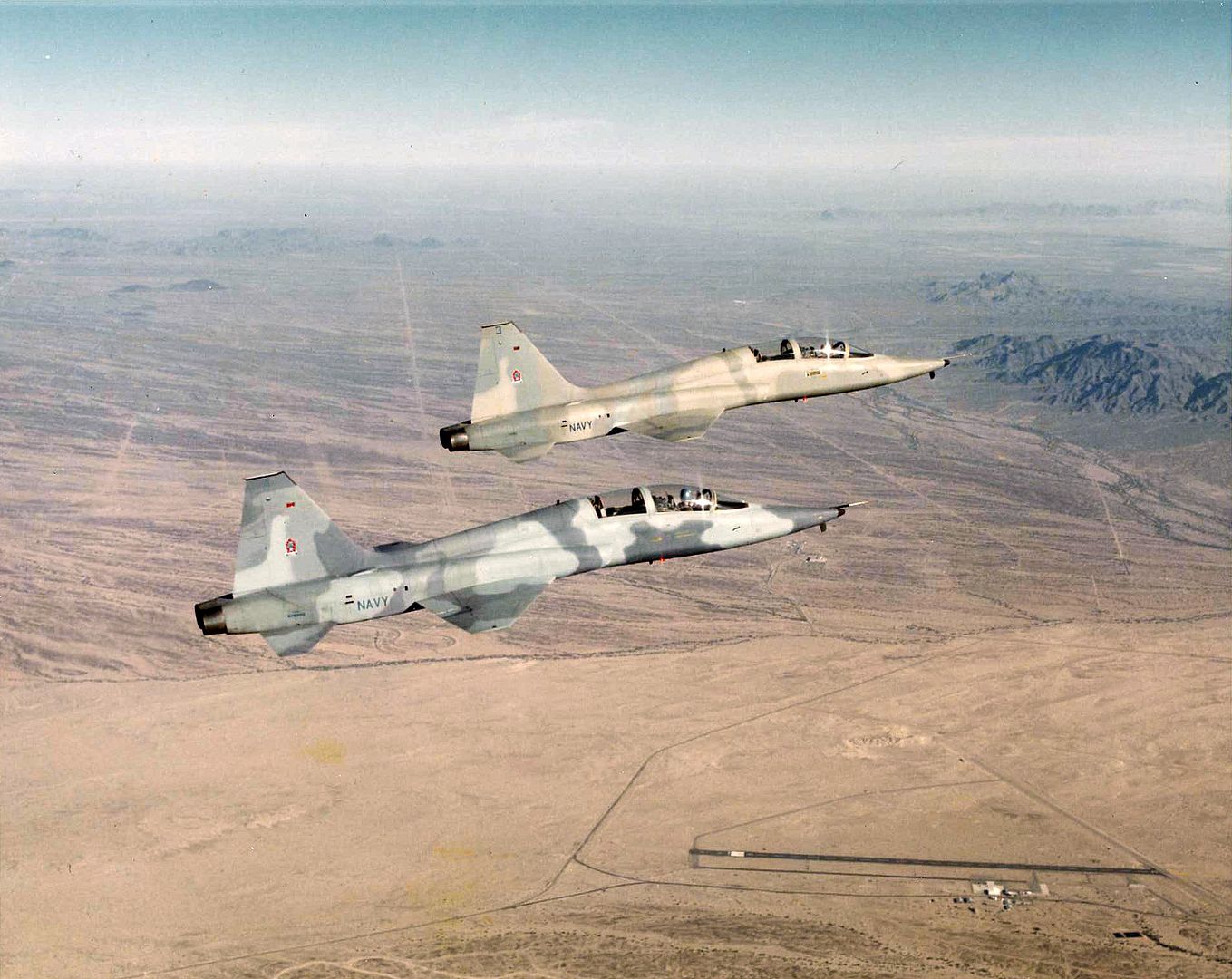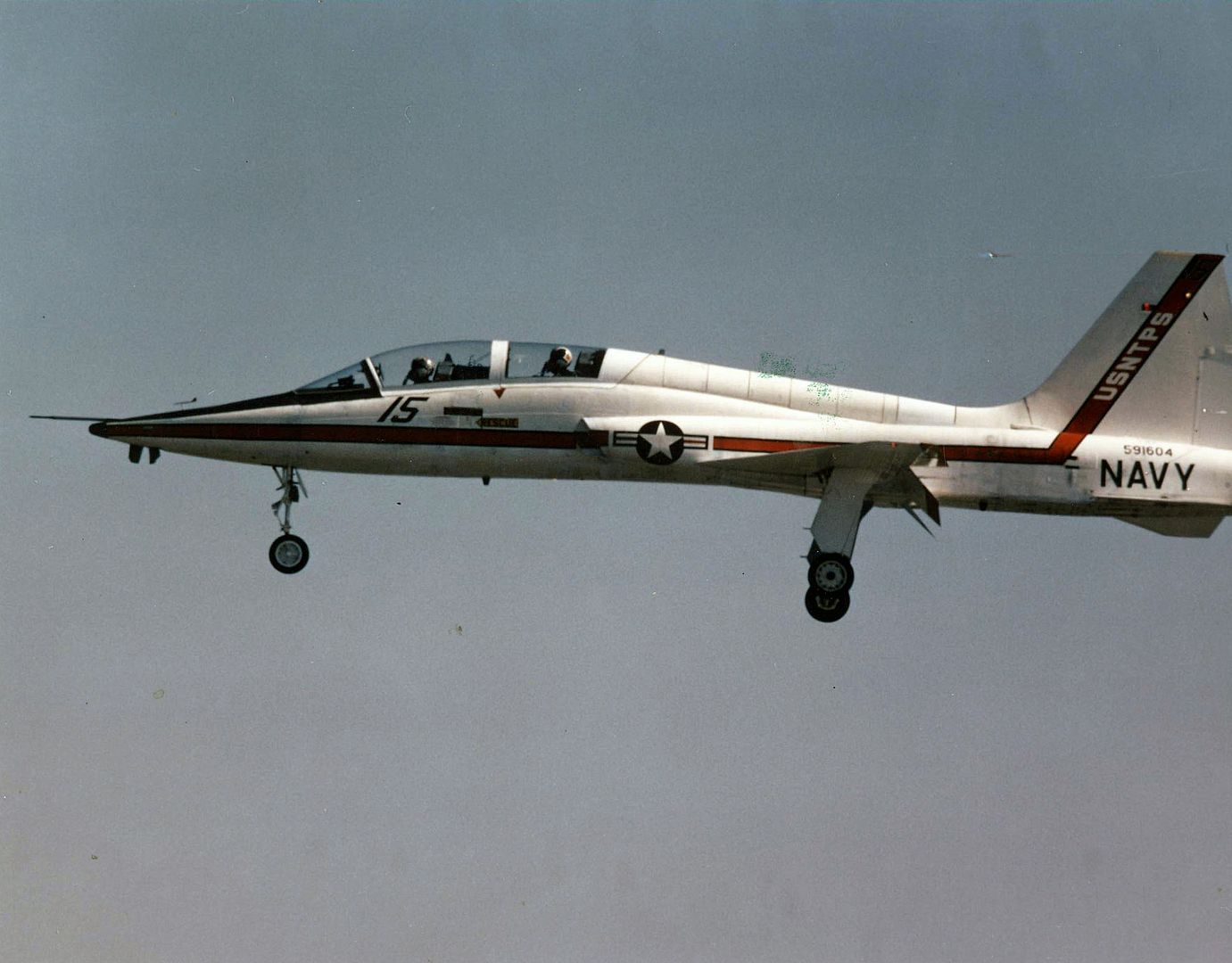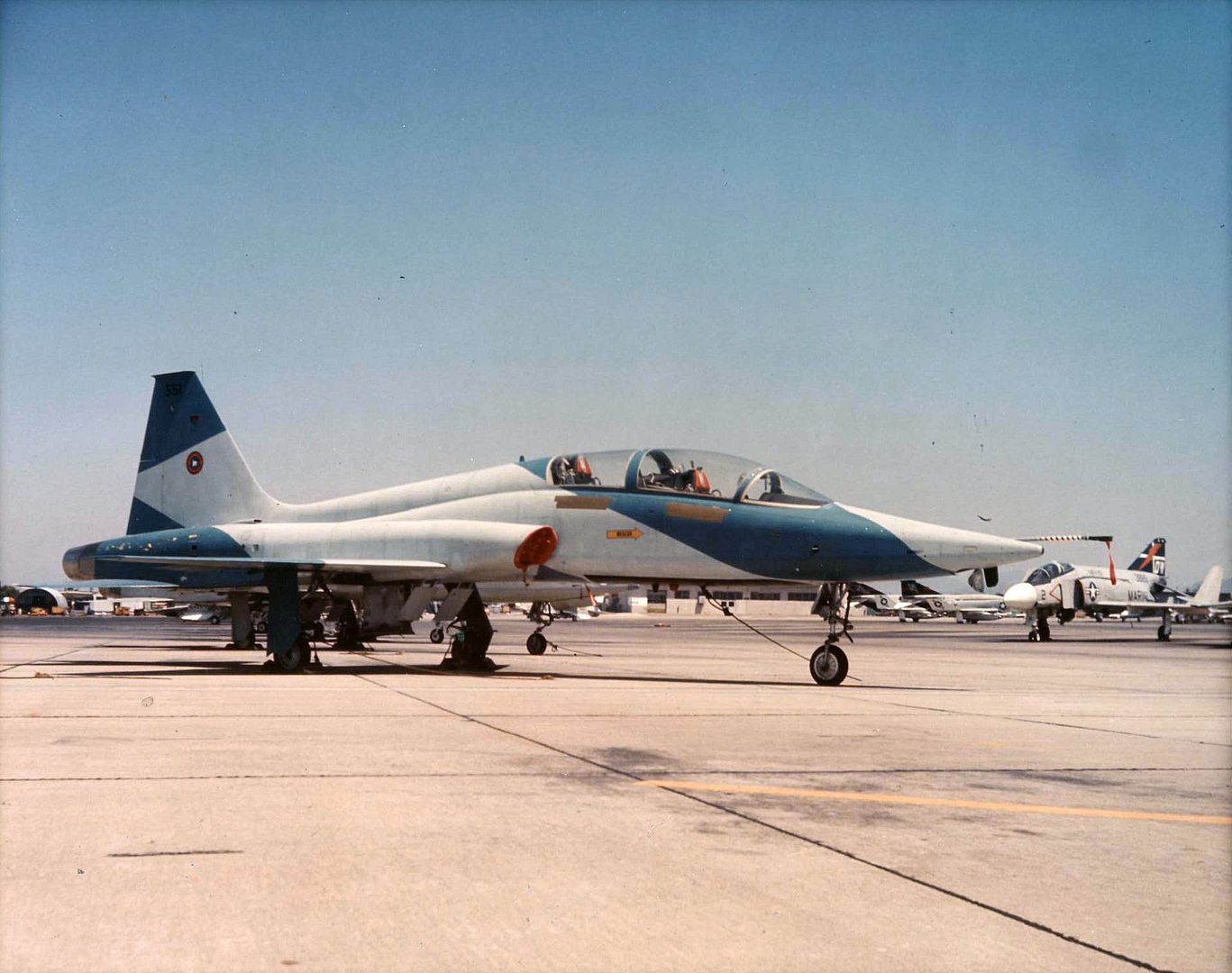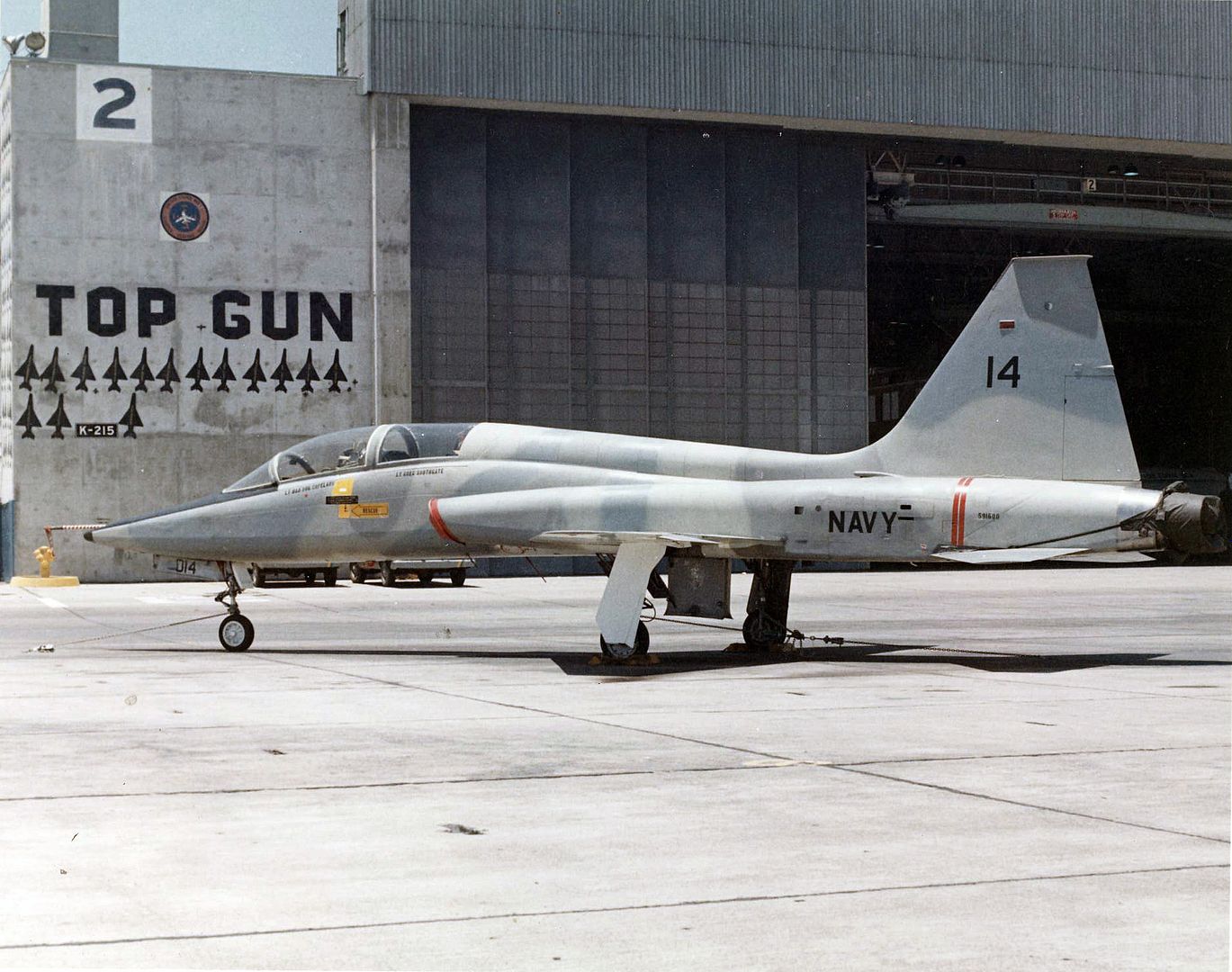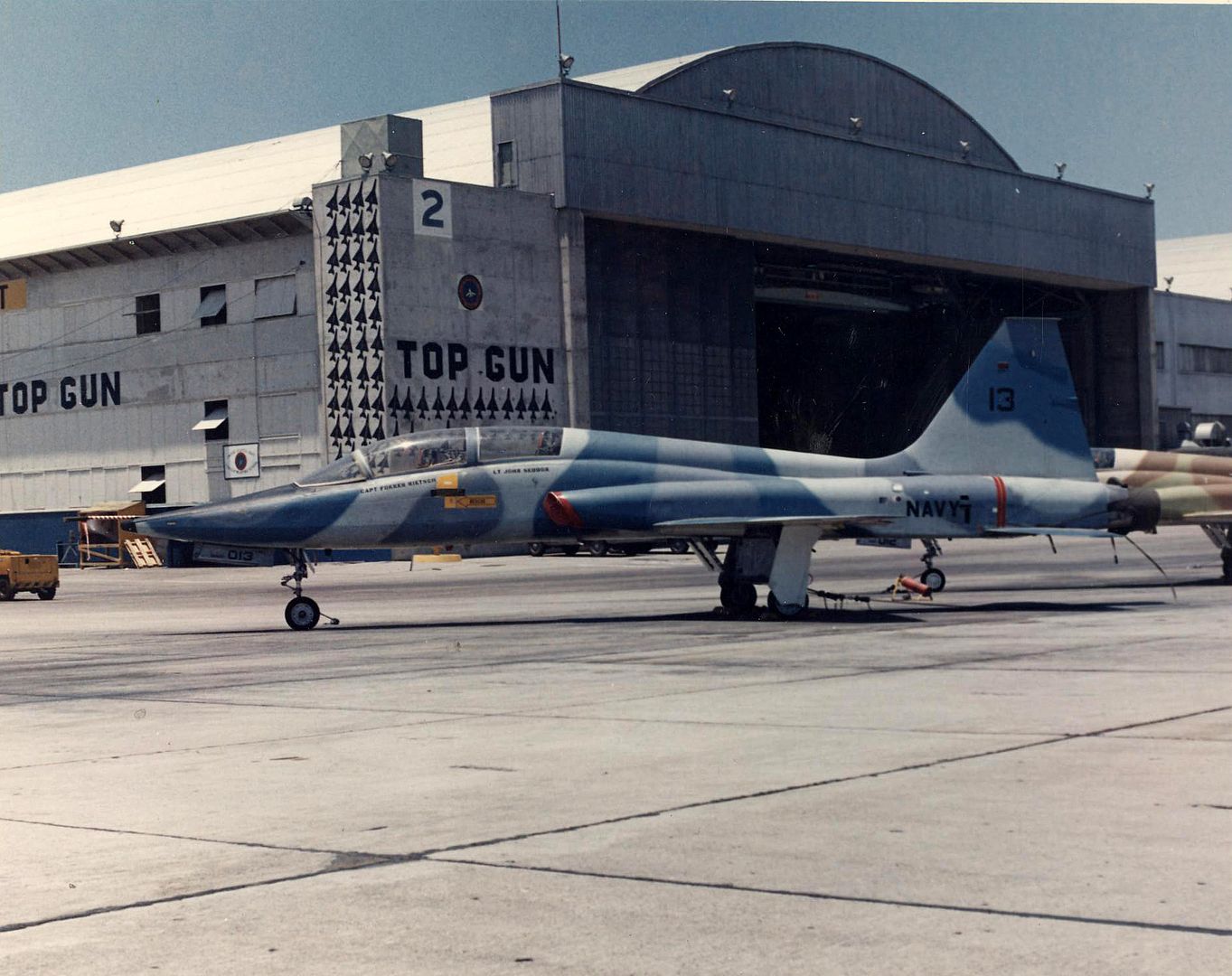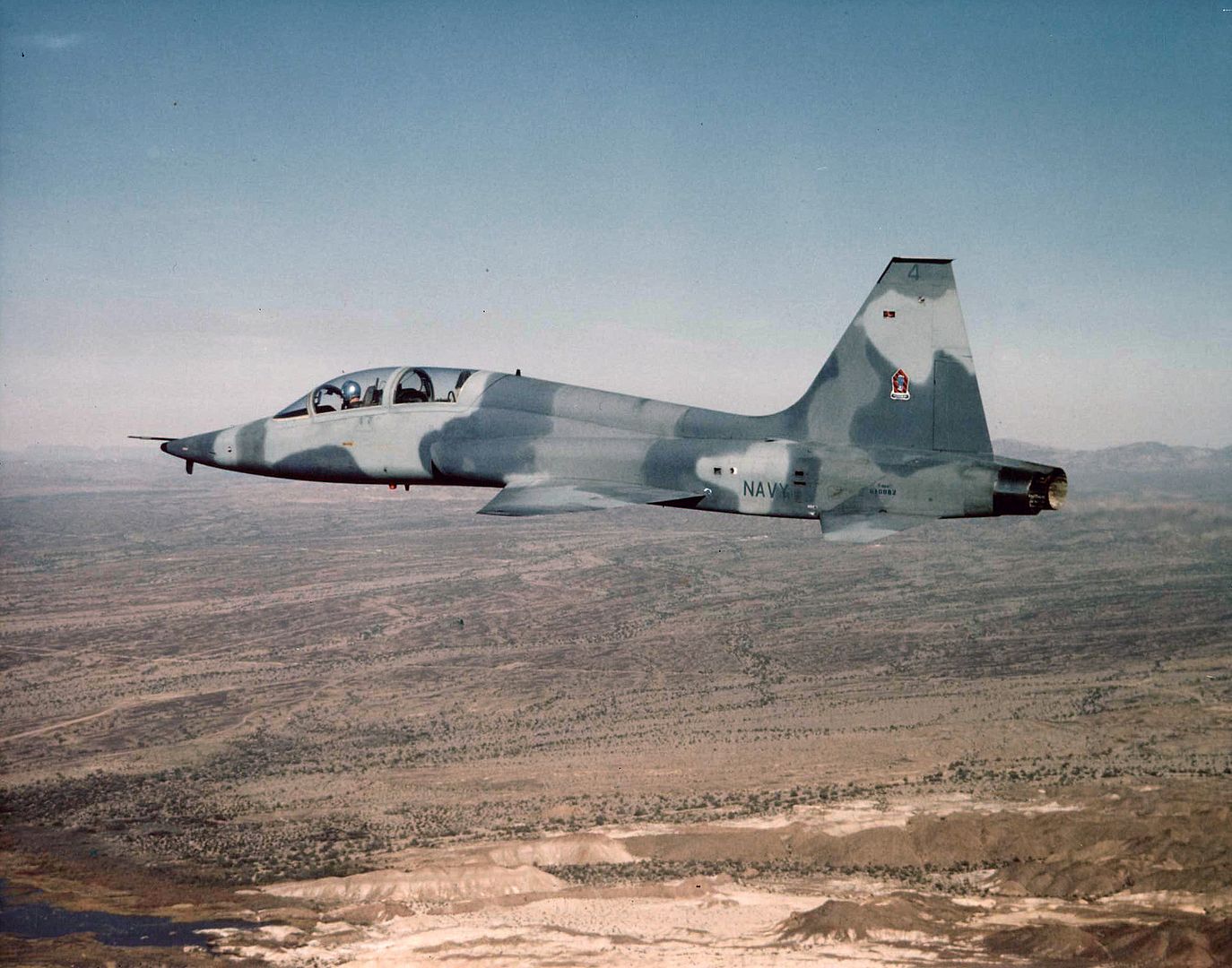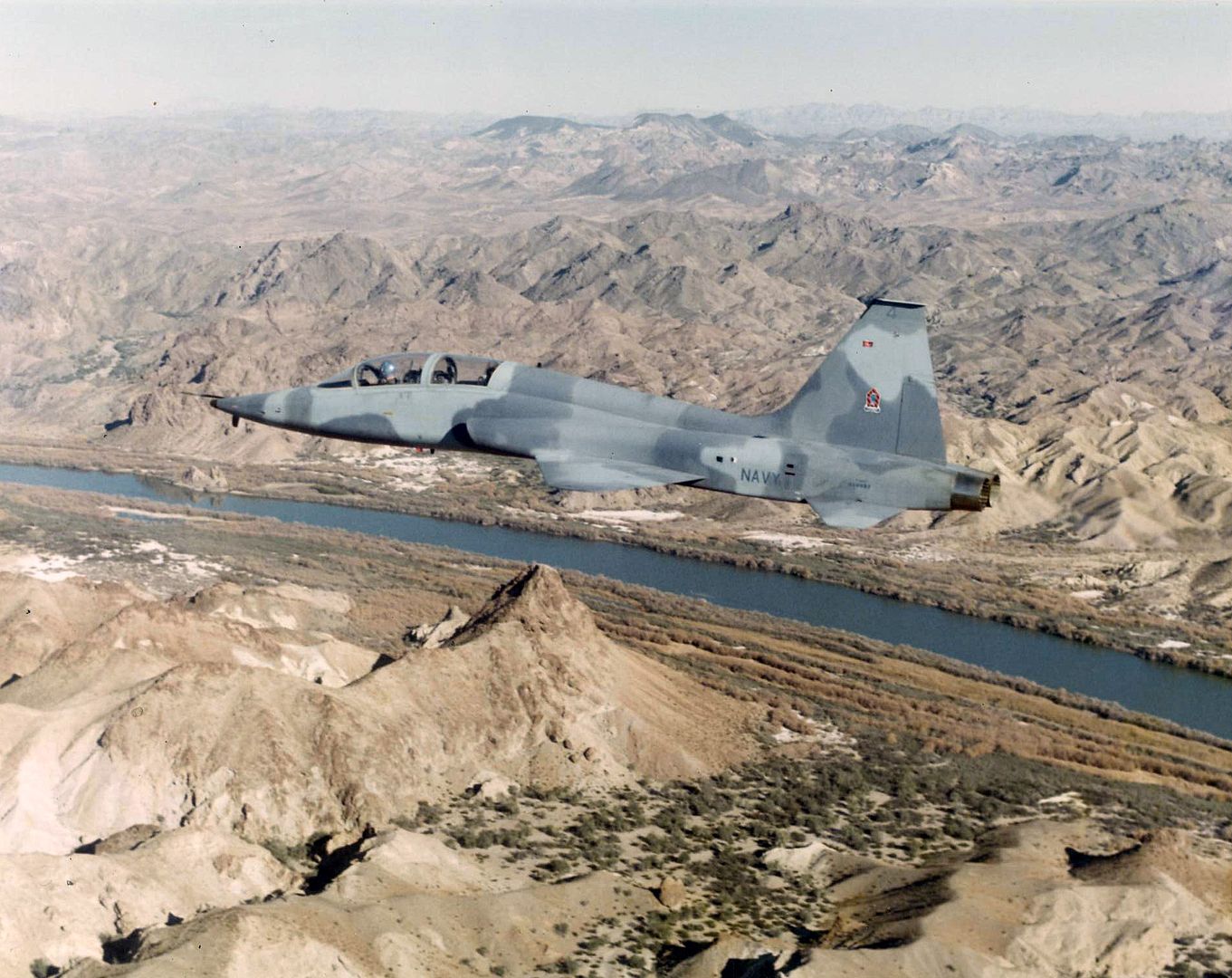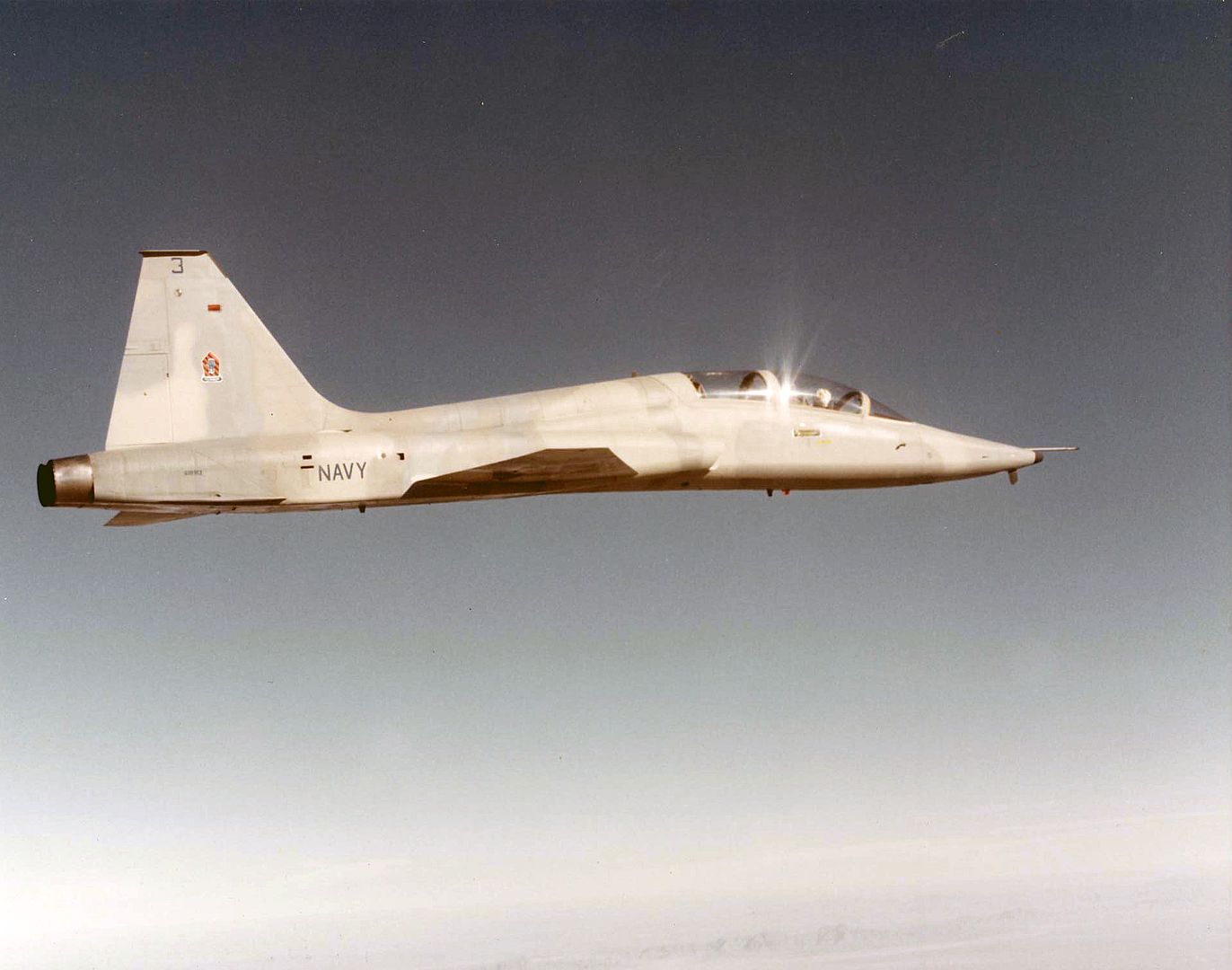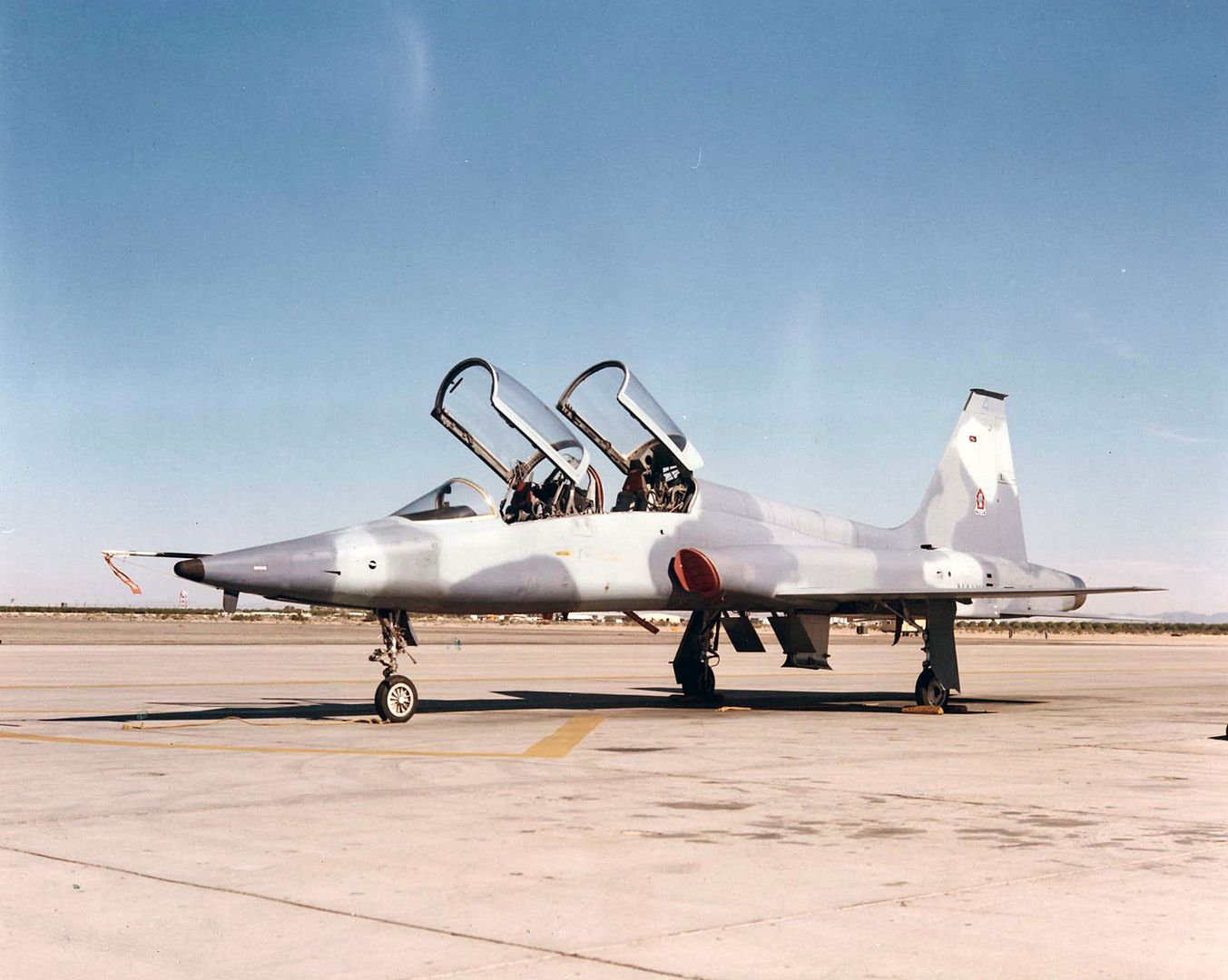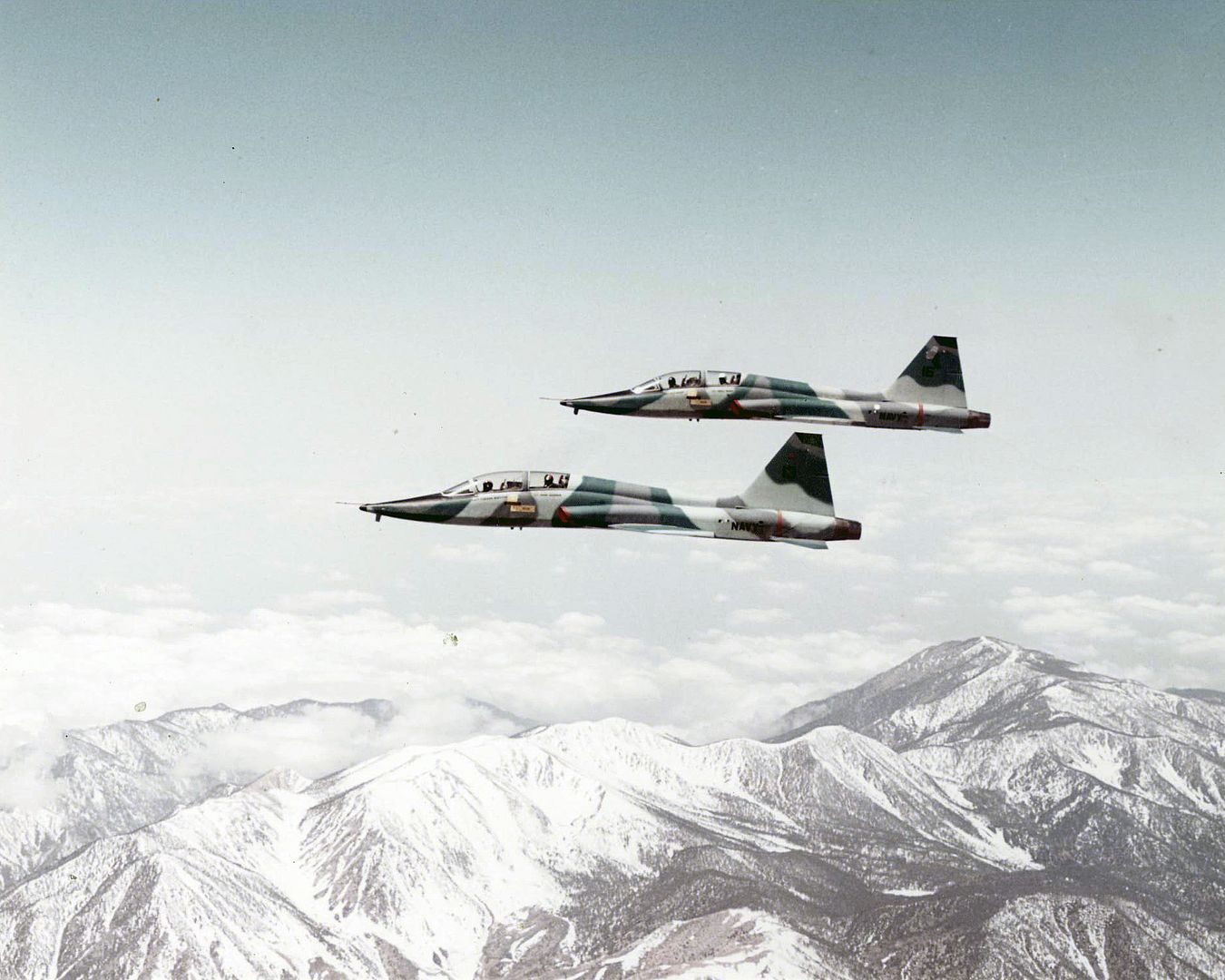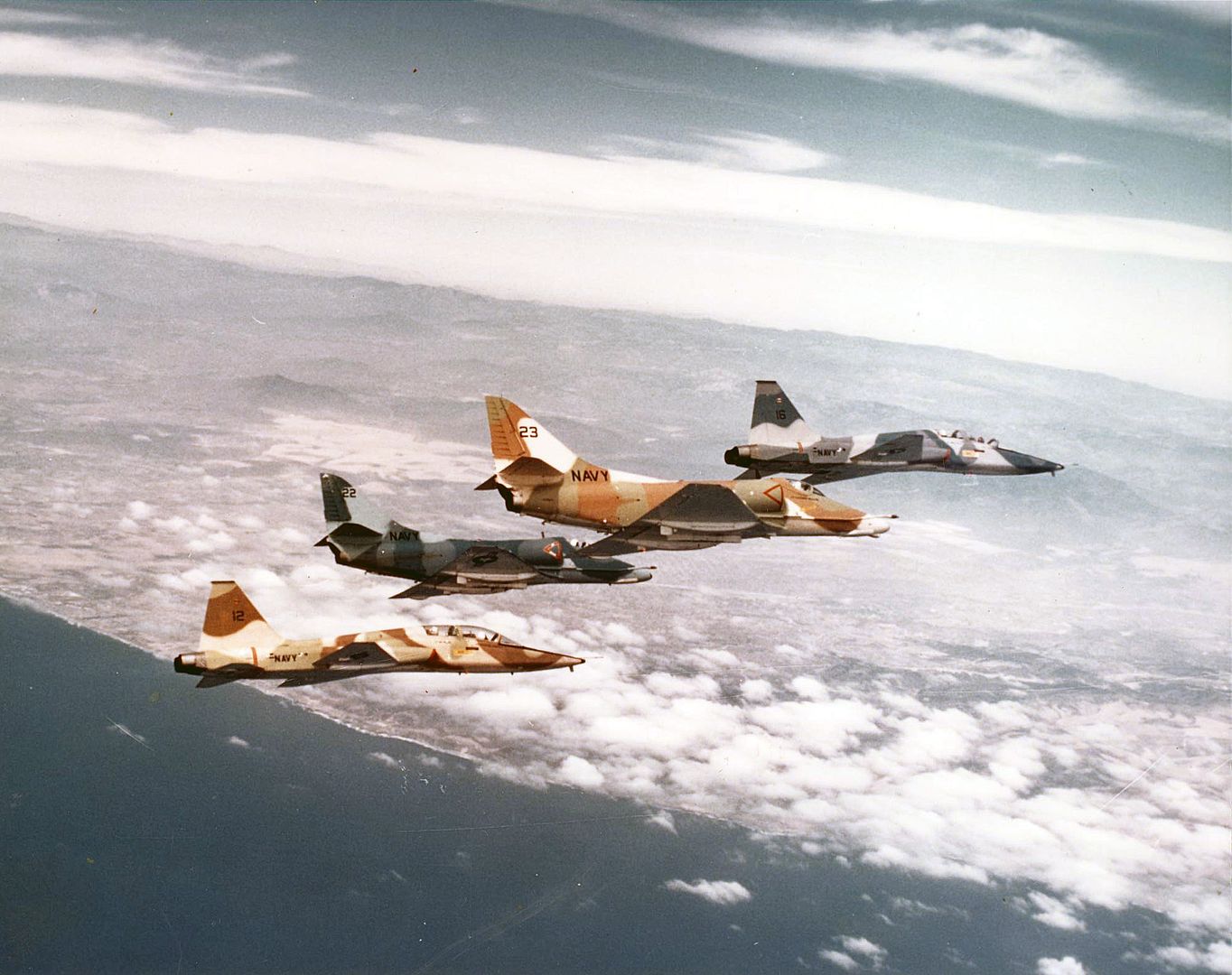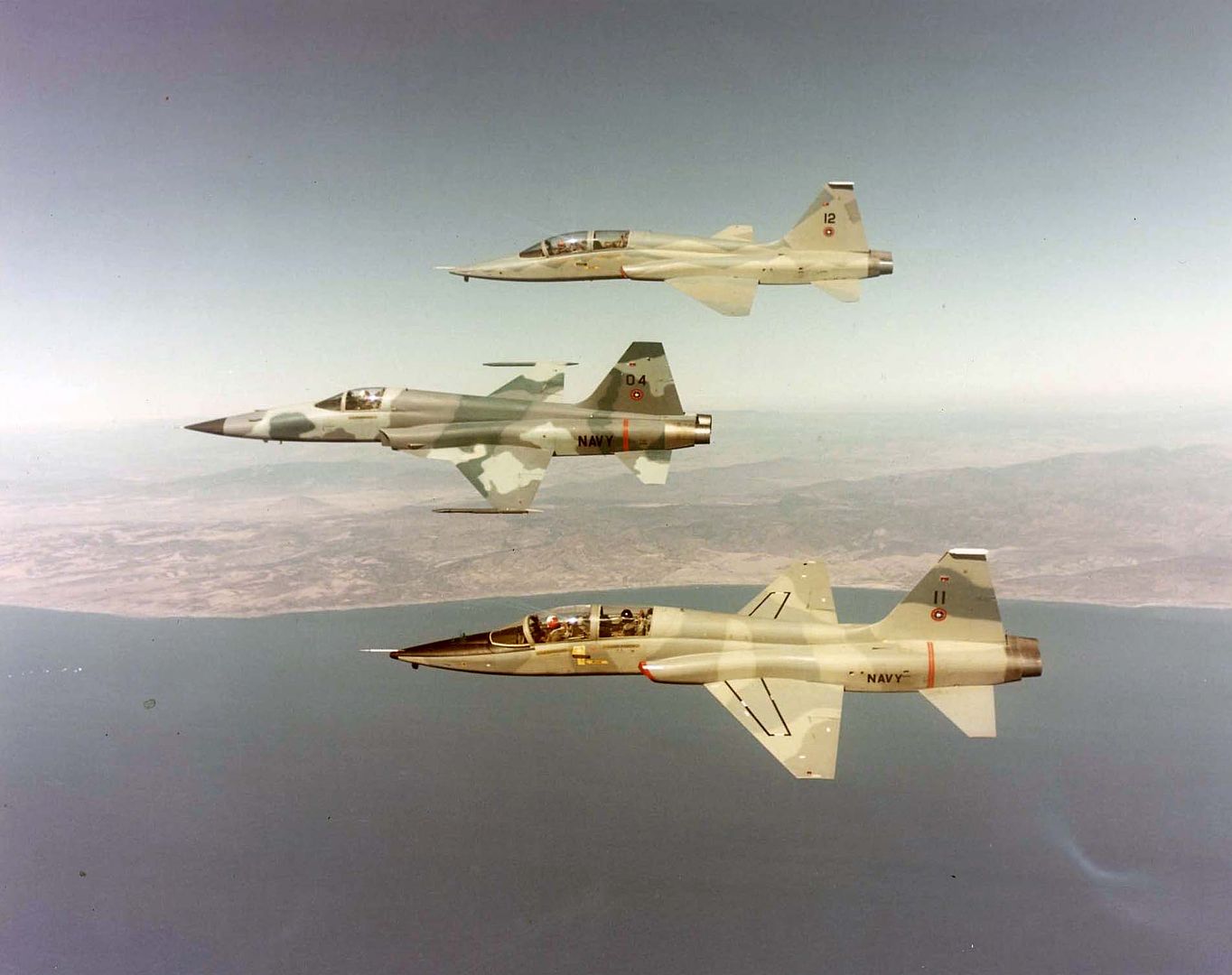Forums
- Forums
- Duggy's Reference Hangar
- USAAF / USN Library
- Northrop T-38 Talon
Northrop T-38 Talon
Post a reply
- Go to Previous topic
- Go to Next topic
- Go to Welcome
- Go to Introduce Yourself
- Go to General Discussion
- Go to Screenshots, Images and Videos
- Go to Off topic
- Go to Works in Progress
- Go to Skinning Tips / Tutorials
- Go to Skin Requests
- Go to IJAAF Library
- Go to Luftwaffe Library
- Go to RAF Library
- Go to USAAF / USN Library
- Go to Misc Library
- Go to The Ops Room
- Go to Made in Germany
- Go to Campaigns and Missions
- Go to Works in Progress
- Go to Juri's Air-Raid Shelter
- Go to Campaigns and Missions
- Go to Works in Progress
- Go to Skinpacks
- Go to External Projects Discussion
- Go to Books & Resources
-
 Main AdminDesign and development
Main AdminDesign and development
In 1952 Northrop began work on a fighter project, the Fang, with shoulder-mounted delta wing and a single engine. The proposed General Electric J79 engine, weighing nearly two tons, meant the resulting aircraft would be large and expensive. Then in 1953, representatives from General Electric Aviation's newly created Small Aircraft Engine Department showed Northrop a relatively tiny engine (around 400 lb installed wt) capable of 2,500 lb of thrust, and Northrop VP-Engineering Edgar Schmued saw the possibility of reversing the trend toward the large fighters. Schmued and chief engineer Welko Gasich decided on a small twin-engine "hot-rod" fighter, the N-156. Northrop began its N-156 project in 1954, aiming for a small supersonic fighter jet capable of operating from the US Navy's escort carriers. However, when the Navy chose not to pursue equipping its fleets in that fashion, Northrop continued the N-156 design using in-house funding, recasting it as a lightweight fighter (dubbed N-156F) and aimed at the export market.
In the mid-1950s the USAF issued a General Operating Requirement for a supersonic trainer, planning to retire its 1940s-era Lockheed T-33s. Northrop officials decided to adapt the N-156 to this competition. The only other candidate was the two-seat version of the North American F-100 Super Sabre. Although the F-100 was not considered the ideal candidate for a training aircraft (it is not capable of recovering from a spin), NAA was still considered the favorite in the competition due to that company's favored-contractor status with the Air Force. However, Northrop officials convincingly presented life-cycle cost comparisons which could not be ignored, and they were awarded the contract, receiving an order for three prototypes. The first (designated YT-38) flew on 10 April 1959. The type was quickly adopted and the first production examples were delivered in 1961, officially entering service on 17 March that year, complementing the T-37 primary jet trainer. When production ended in 1972, 1,187 T-38s had been built (plus two N-156T prototypes). Since its introduction, it is estimated that some 50,000 military pilots have trained on this aircraft. The USAF remains one of the few armed flying forces using dedicated supersonic final trainers, as most, such as the US Navy, use high subsonic trainers.
The T-38 is of conventional configuration, with a small, low, long-chord wing, a single vertical stabilizer, and tricycle undercarriage. The aircraft seats a student pilot and instructor in tandem, and has intakes for its two turbojet engines at the wing roots. Its nimble performance has earned it the nickname white rocket. In 1962 the T-38 set absolute time-to-climb records for 3,000, 6,000, 9,000 and 12,000 meters, beating the records for those altitudes set by the F-104 in December 1958. (The F-4 beat the T-38's records less than a month later.)
The F-5B and F (which also derive from the N-156) can be distinguished from the T-38 by the wings; the wing of the T-38 meets the fuselage straight and ends square, while the F-5 has leading edge extensions near the wing roots and wingtip launch rails for air-to-air missiles. The wings of both the T-38 and the F-5 family use conventional skin over spar-rib structure.
Most T-38s built were of the T-38A variant, but the USAF also had a small number of aircraft converted for weapons training (designated AT-38B), which were fitted with a gunsight and could carry a gunpod, rockets, or bombs on a centerline pylon. As of September 30, 2017, 503 T-38s were still operational with the USAF, with many more in operation around the world. Most of the USAF variant aircraft (T-38A and AT-38B) have been converted to the T-38C through an avionics upgrade program. Improvements include the addition of a HUD, GPS, INS (Inertial Navigation System), and TCAS. Most jets have also received PMP (a propulsion modification to improve low-altitude engine thrust). Approximately a third of the fleet (those that experience more severe usage) are currently undergoing structural replacements and upgrades, as well as receiving new wings, to extend their service life to 2029.
The fighter version of the N-156 was eventually selected for the US Military Assistance Program and produced as the F-5 Freedom Fighter. Many of these have since reverted to a weapons training role as various air forces have introduced newer types into service. The F-5G was an advanced single-engined variant later renamed the F-20 Tigershark. In 2018, the Iranian Air Force announced that an outwardly-similar aircraft, named the Kowsar, had been constructed within Iran.
Operational history
The USAF Strategic Air Command (SAC) had T-38s in service from 1978 until SAC's 1991 inactivation. These aircraft were used to enhance the career development of bomber and tanker copilots through the "Accelerated Copilot Enrichment Program." They were later used as proficiency aircraft for all B-52, B-1, Lockheed SR-71, U-2, Boeing KC-135, and KC-10 pilots. SAC's successors, the Air Combat Command (ACC) and the Air Force Global Strike Command (AFGSC), continue to retain T-38s as proficiency aircraft for U-2 pilots and B-2 pilots, respectively.
The Air Training Command's (ATC) successor, the Air Education and Training Command (AETC), uses the T-38C to prepare pilots for the F-15C Eagle and F-15E Strike Eagle, the F-16 Fighting Falcon, B-52 Stratofortress, B-1B Lancer, B-2 Spirit, A-10 Thunderbolt, F-22 Raptor and F-35 Lightning II. The AETC received T-38Cs in 2001 as part of the Avionics Upgrade Program. The T-38Cs owned by the AETC have undergone propulsion modernization which replaces major engine components to enhance reliability and maintainability, and an engine inlet/injector modification to increase available takeoff thrust. These upgrades and modifications, with the Pacer Classic program, should extend the service life of T-38s past 2020. The T-38 has an availability goal of 75% which it maintained in 2011, however in 2015 availability is 60%.
Besides the USAF, USN and NASA, other T-38 operators included the German Air Force (Luftwaffe), the Portuguese Air Force, the Republic of China Air Force, and the Turkish Air Force.
NASA operates a fleet of thirty-two T-38 aircraft and uses the aircraft as a jet trainer for its astronauts, as well as a chase plane. Its fleet is housed primarily at Ellington Field in Houston, Texas. NASA's internal projections show the number of operational jet trainers falling to 16 by 2015. The agency spends $25?30 million annually to fly and maintain the T-38s.
During the Space Shuttle era it was established NASA tradition for astronauts to arrive at the Kennedy Space Center in T-38 Talons.
Below USAF

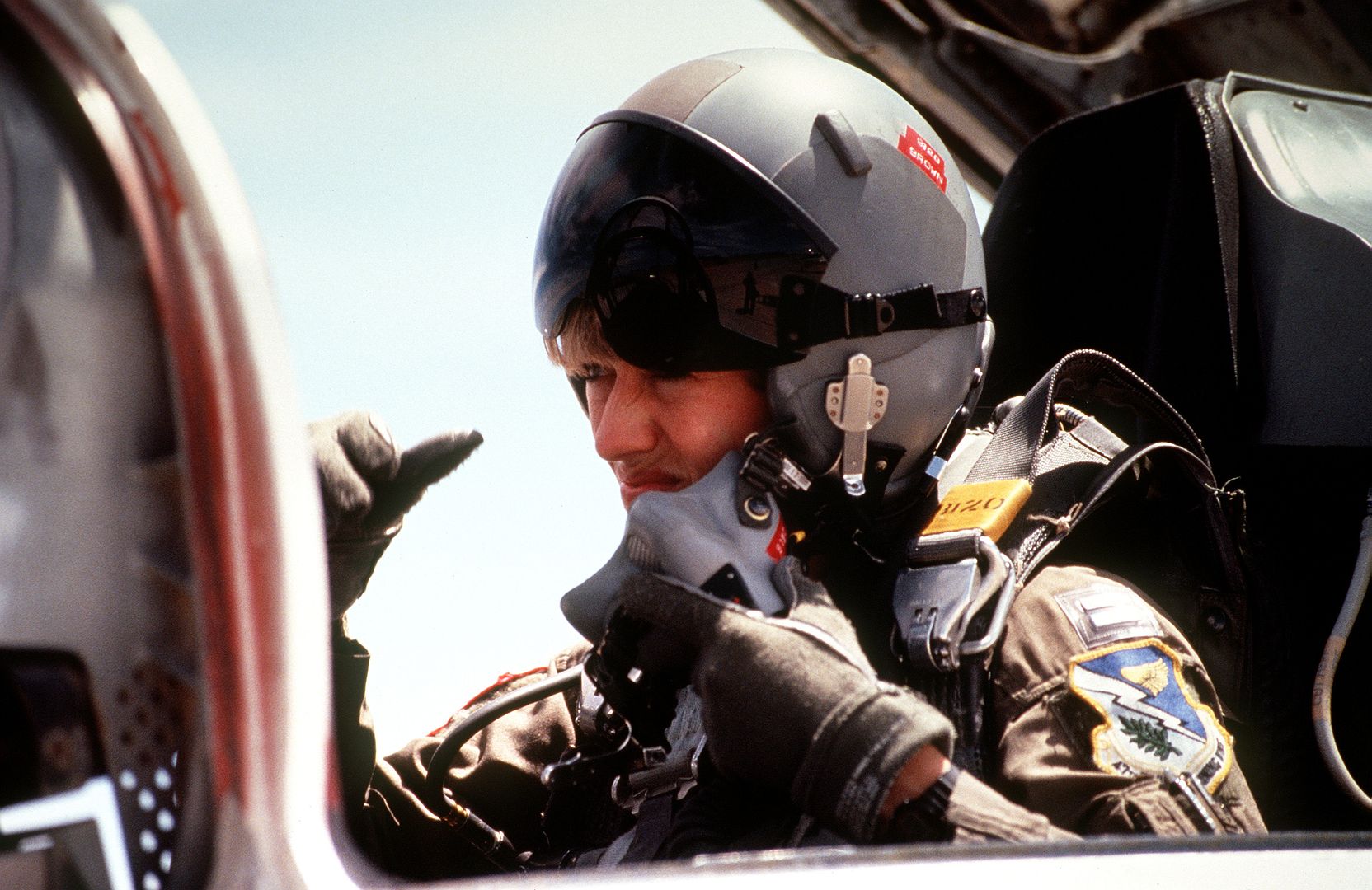
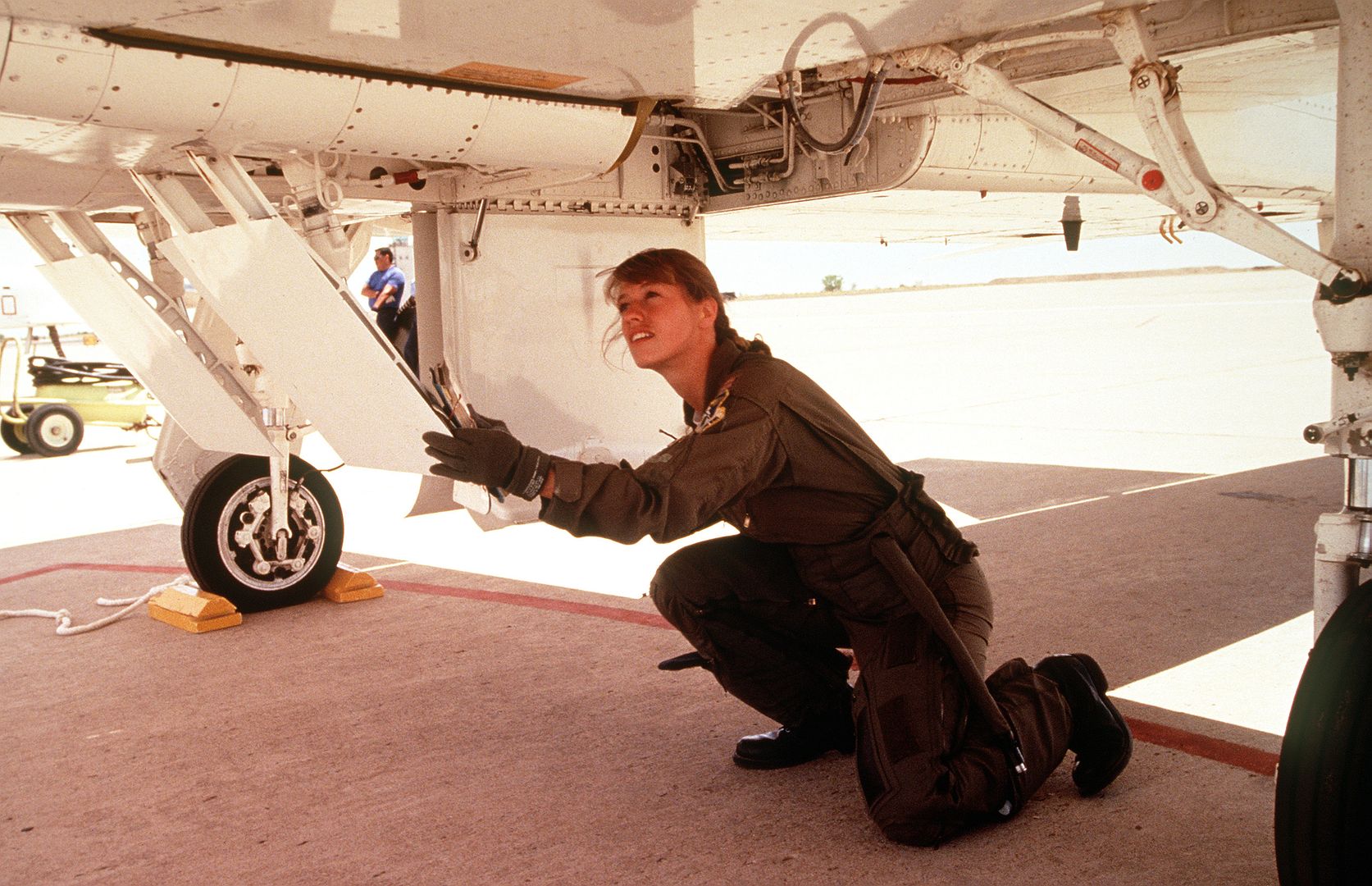
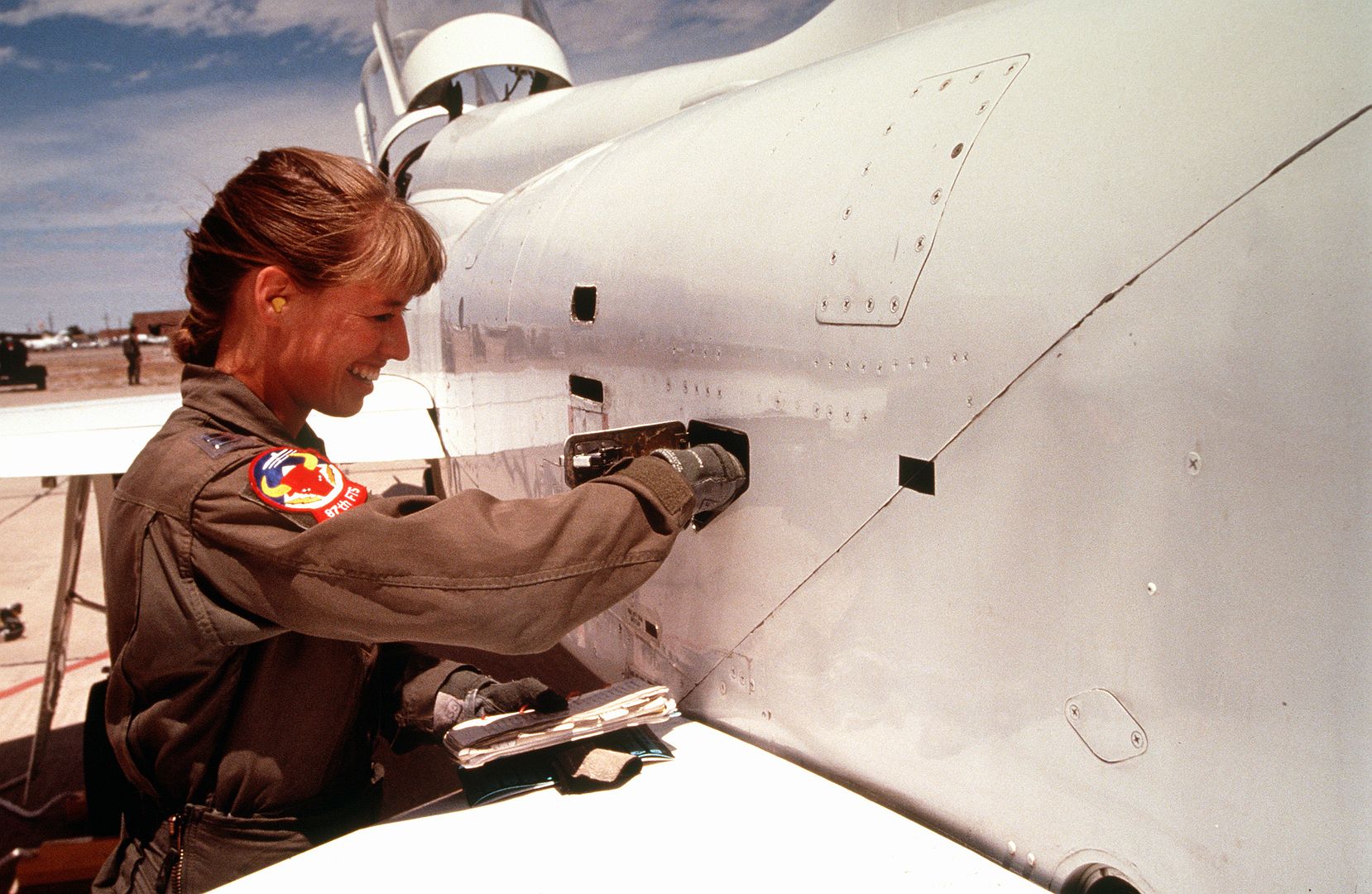


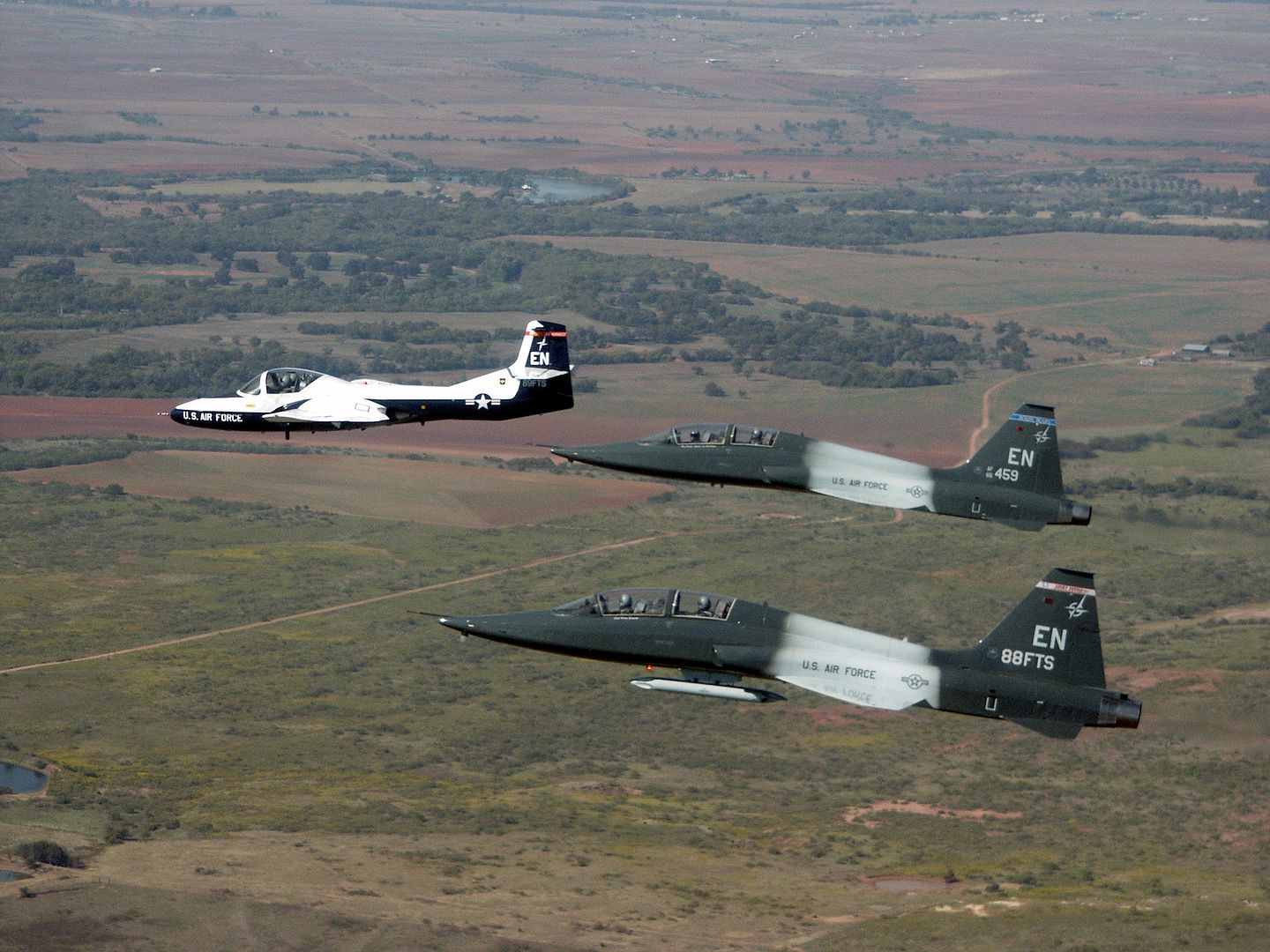
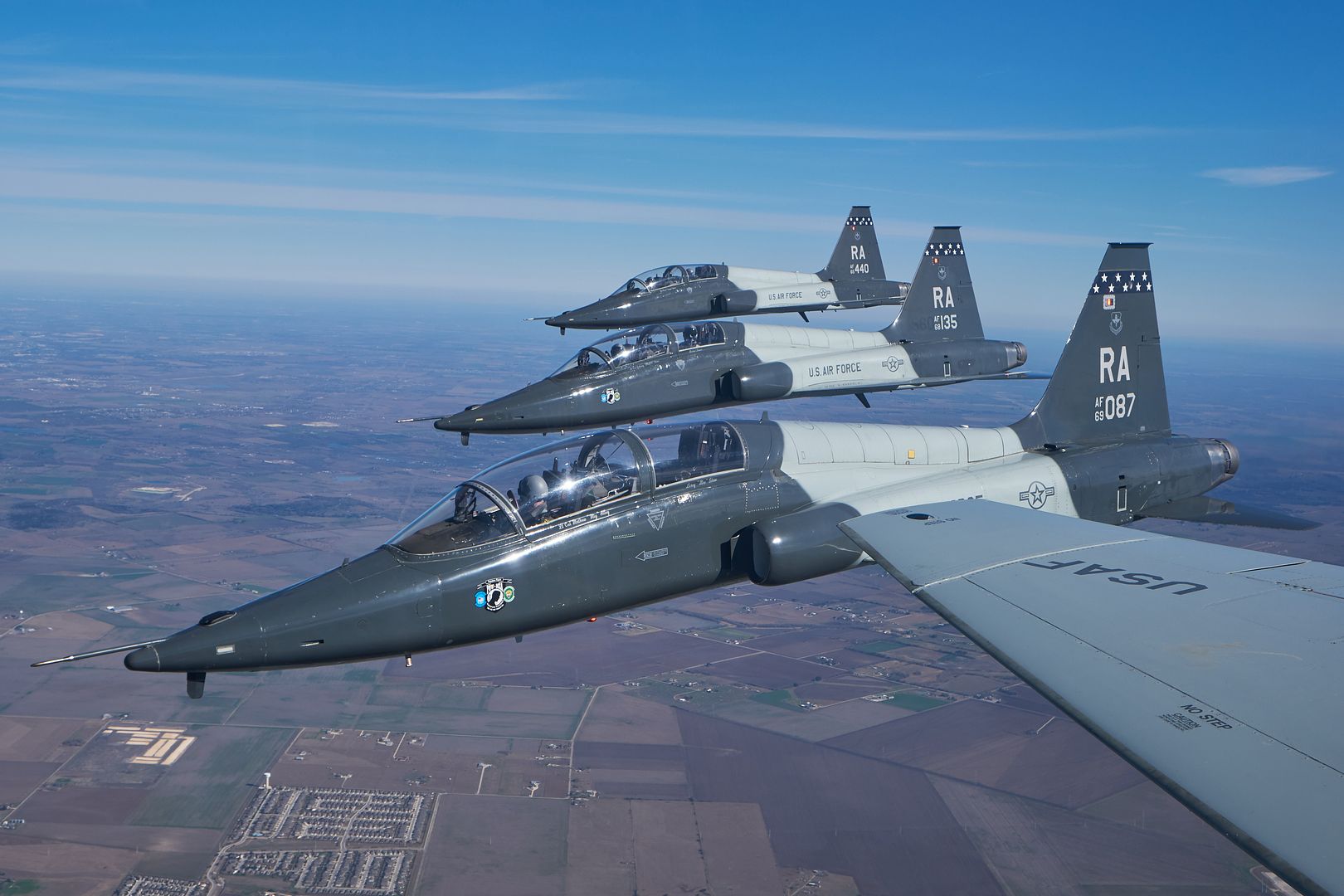
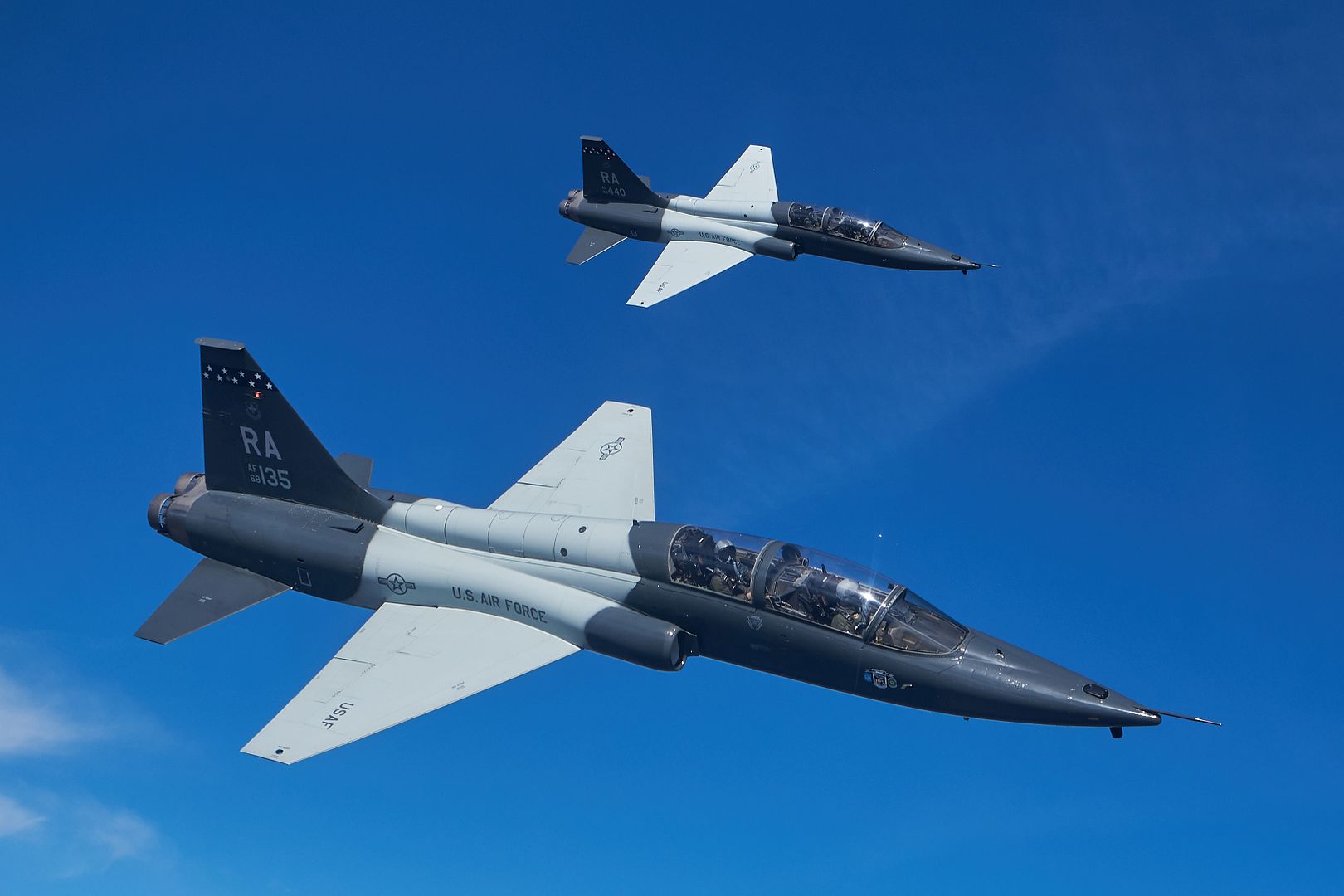
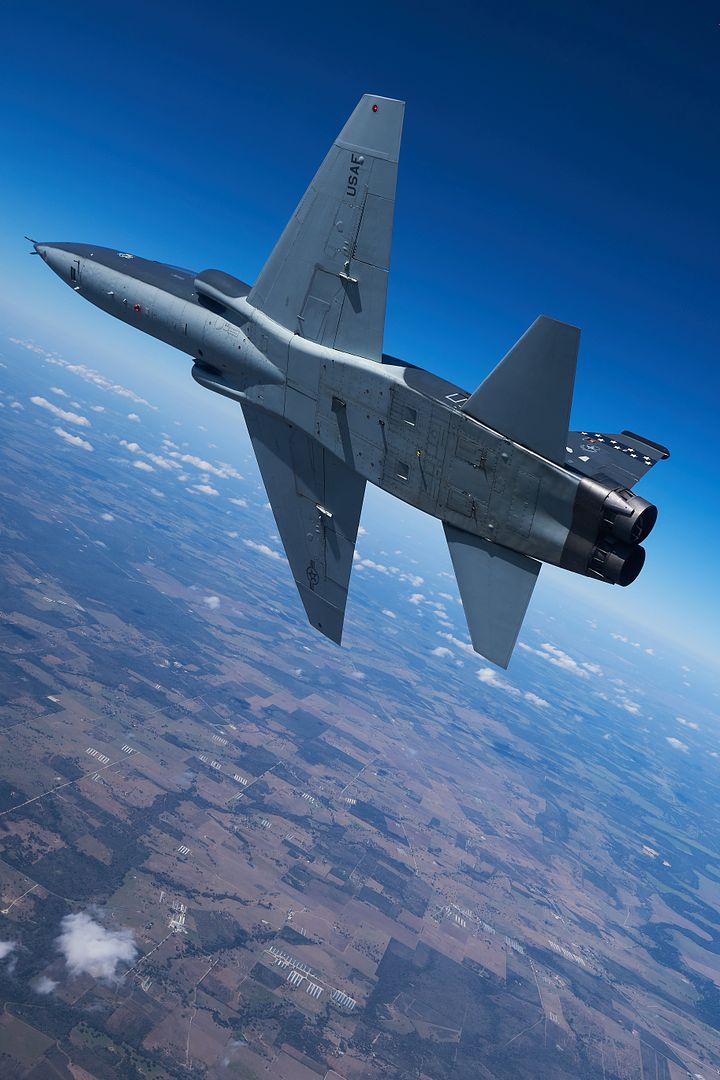
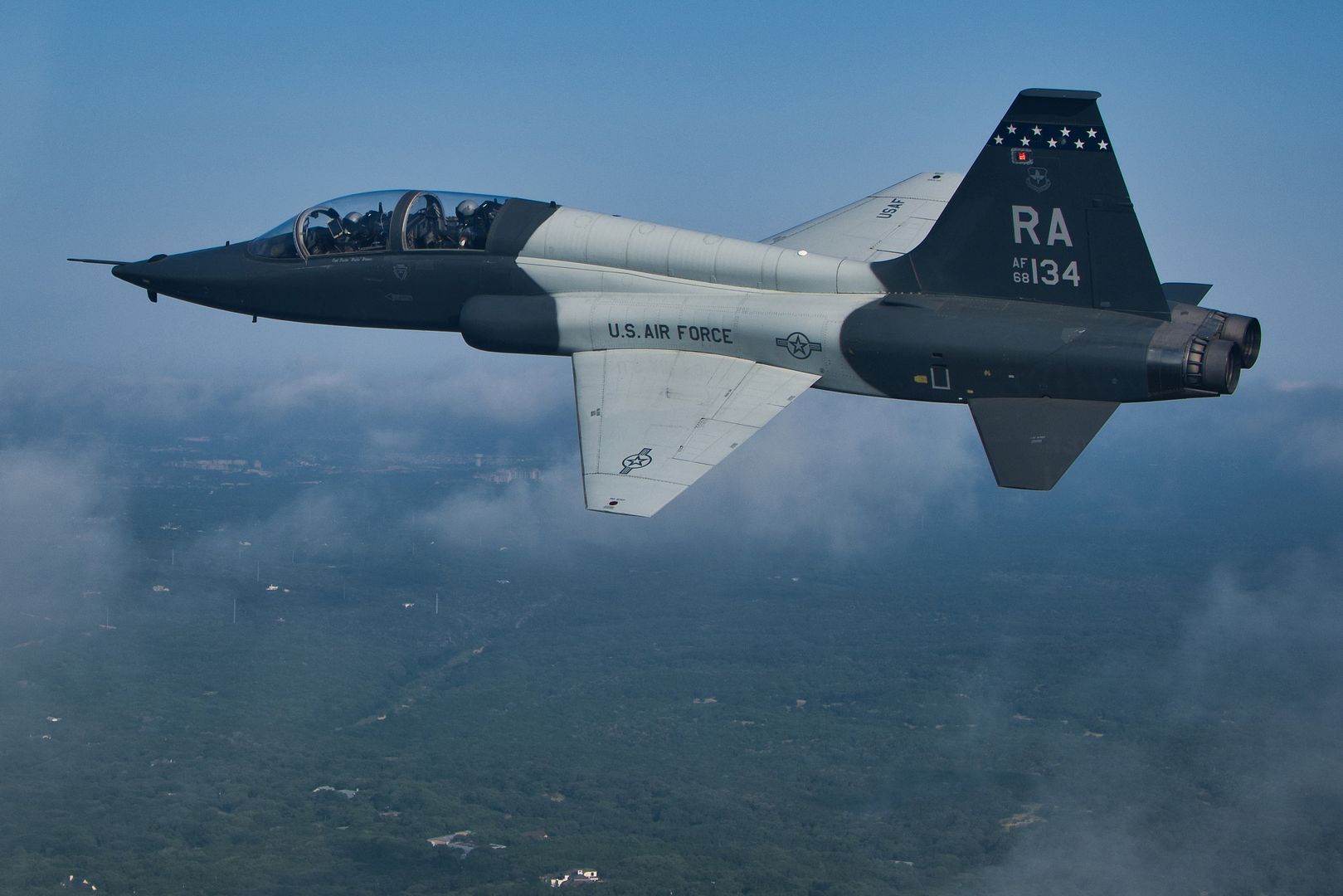
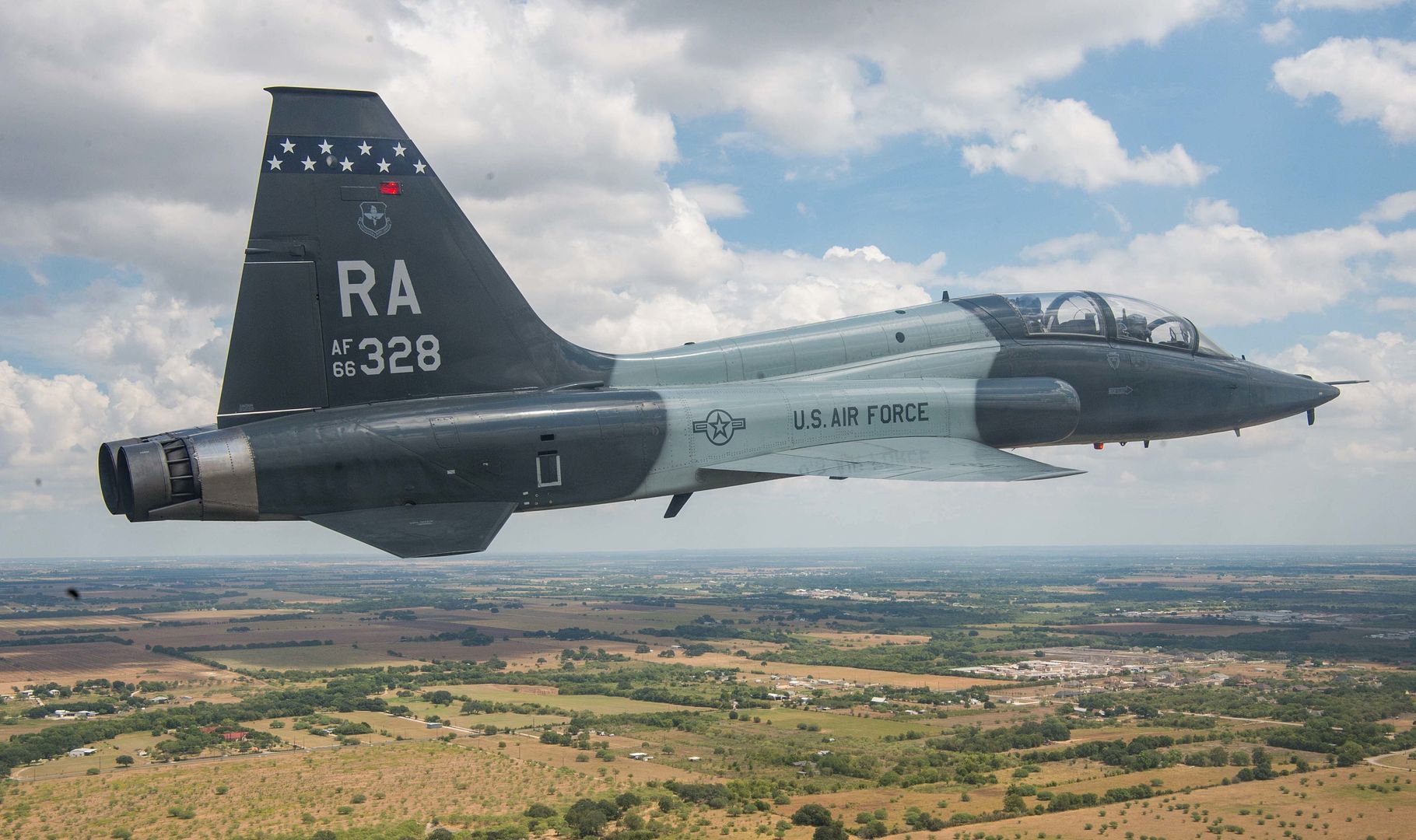
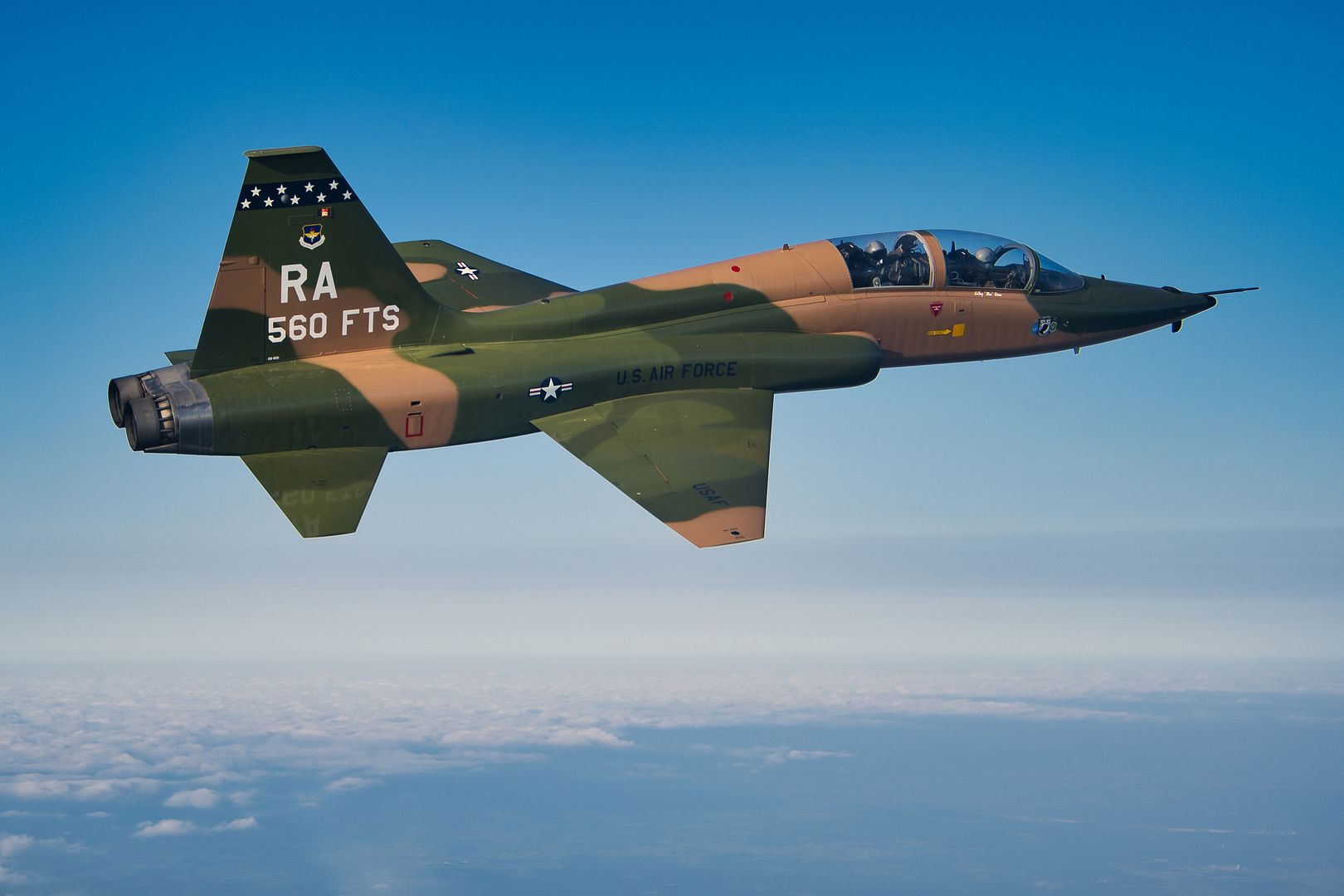
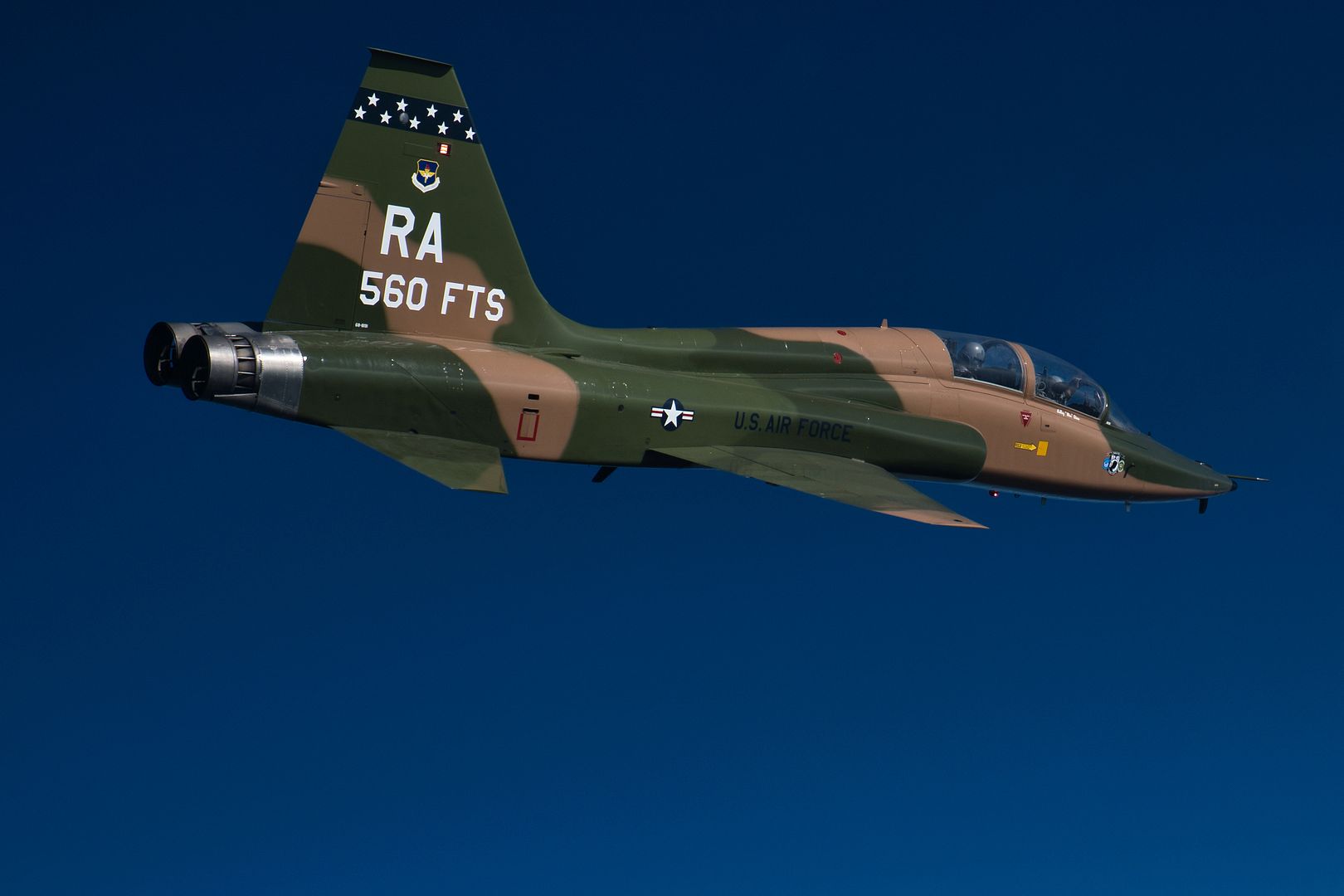
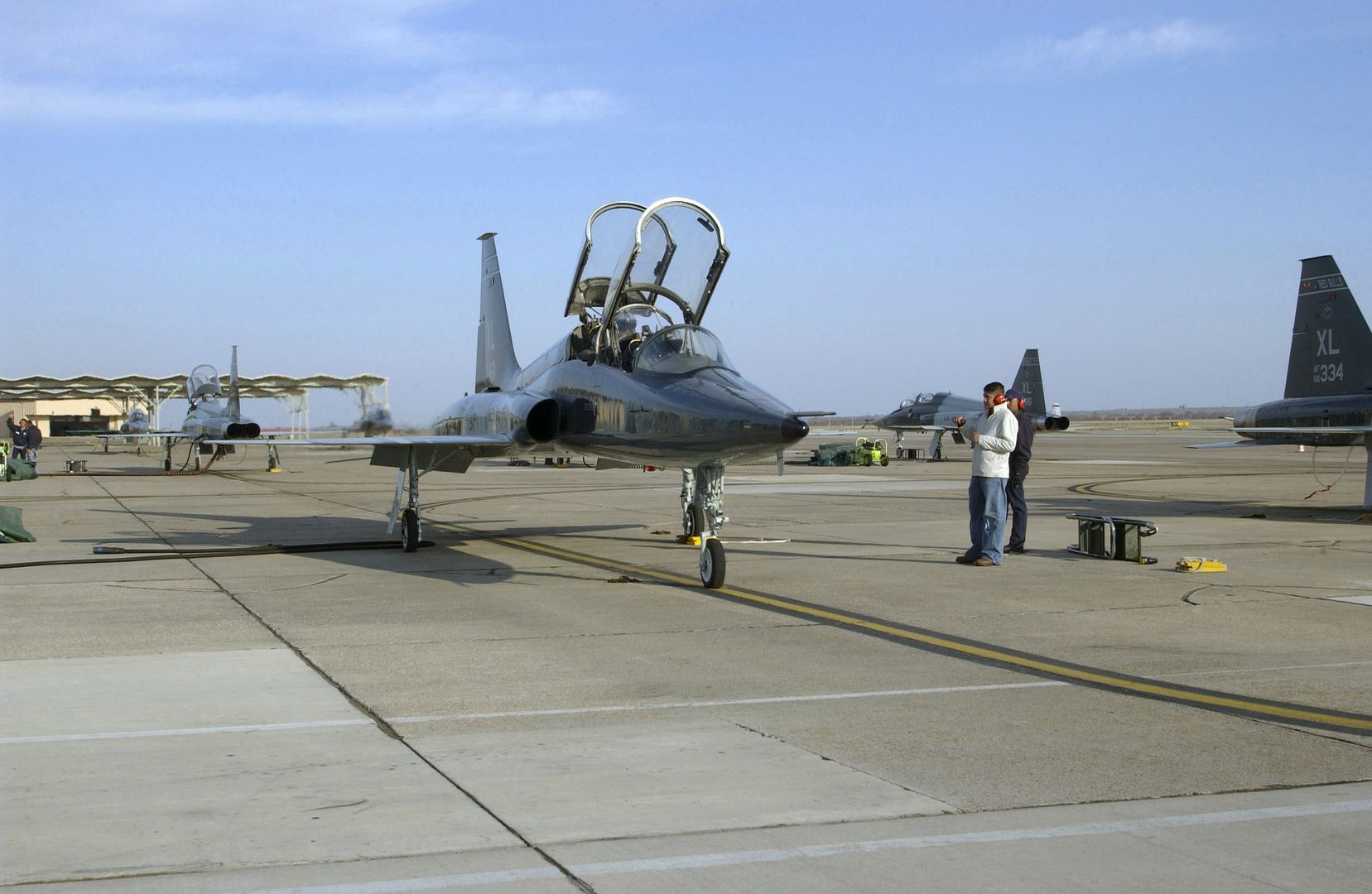
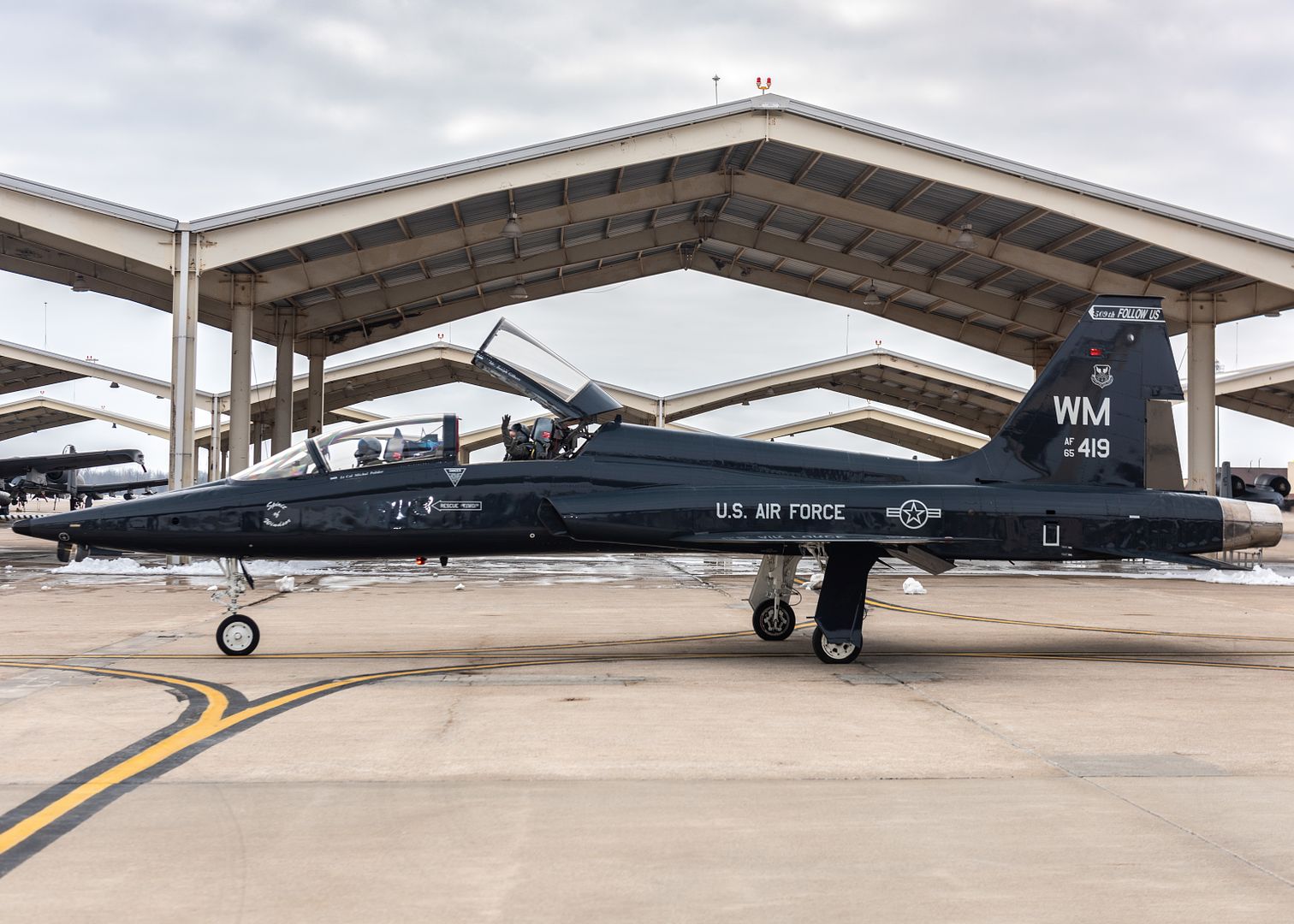

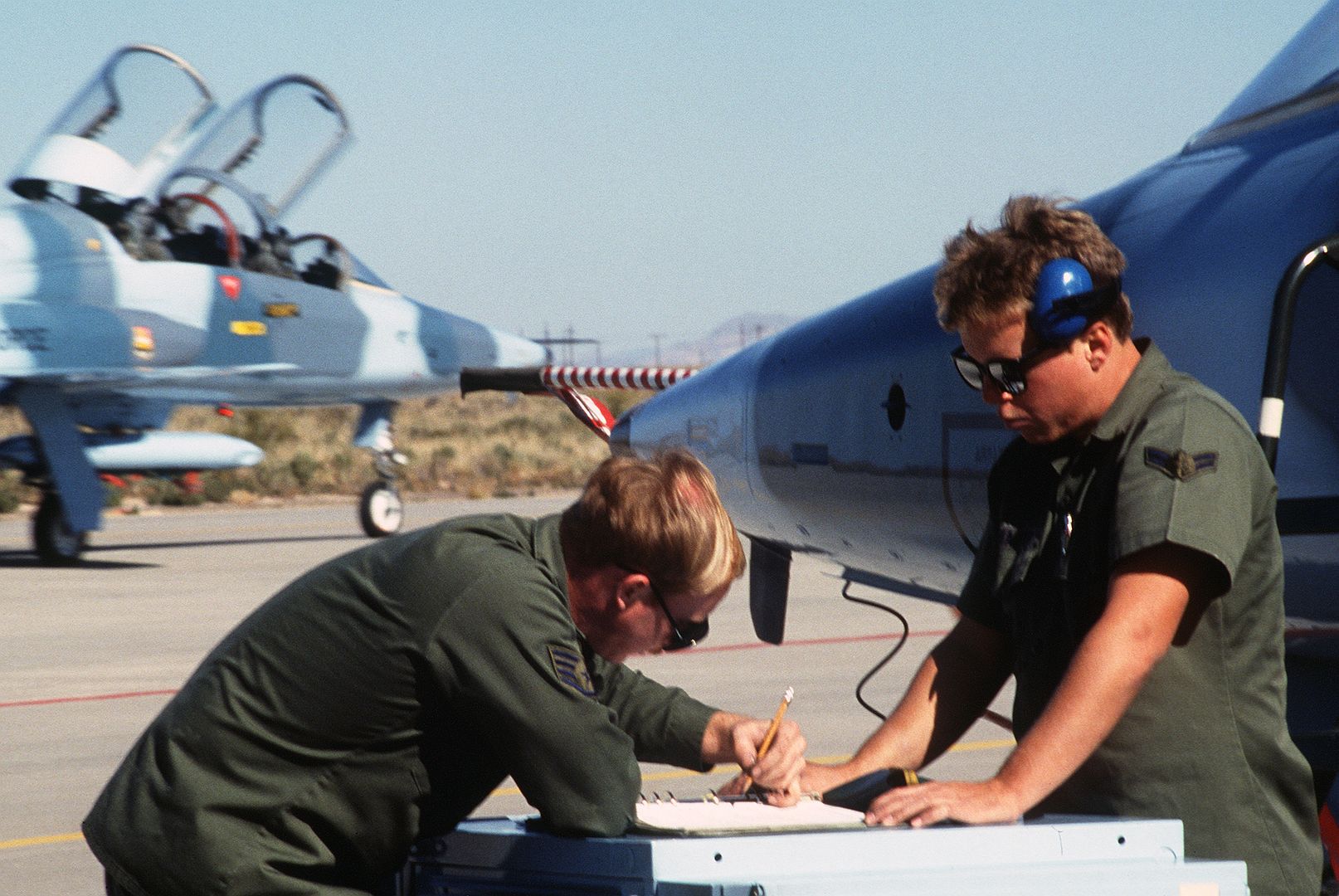

-
 Main Admin
Main Admin -
 Main Admin
Main Admin -
5 years agoTue Sep 28 2021, 08:37pmDuggy
 Main Admin
Main Admin -
5 years agoSat Feb 22 2020, 08:20pm
 Main Admin
Main Admin -
5 years agoSat Feb 22 2020, 08:16pm
 Main AdminBelow other operators
Main AdminBelow other operators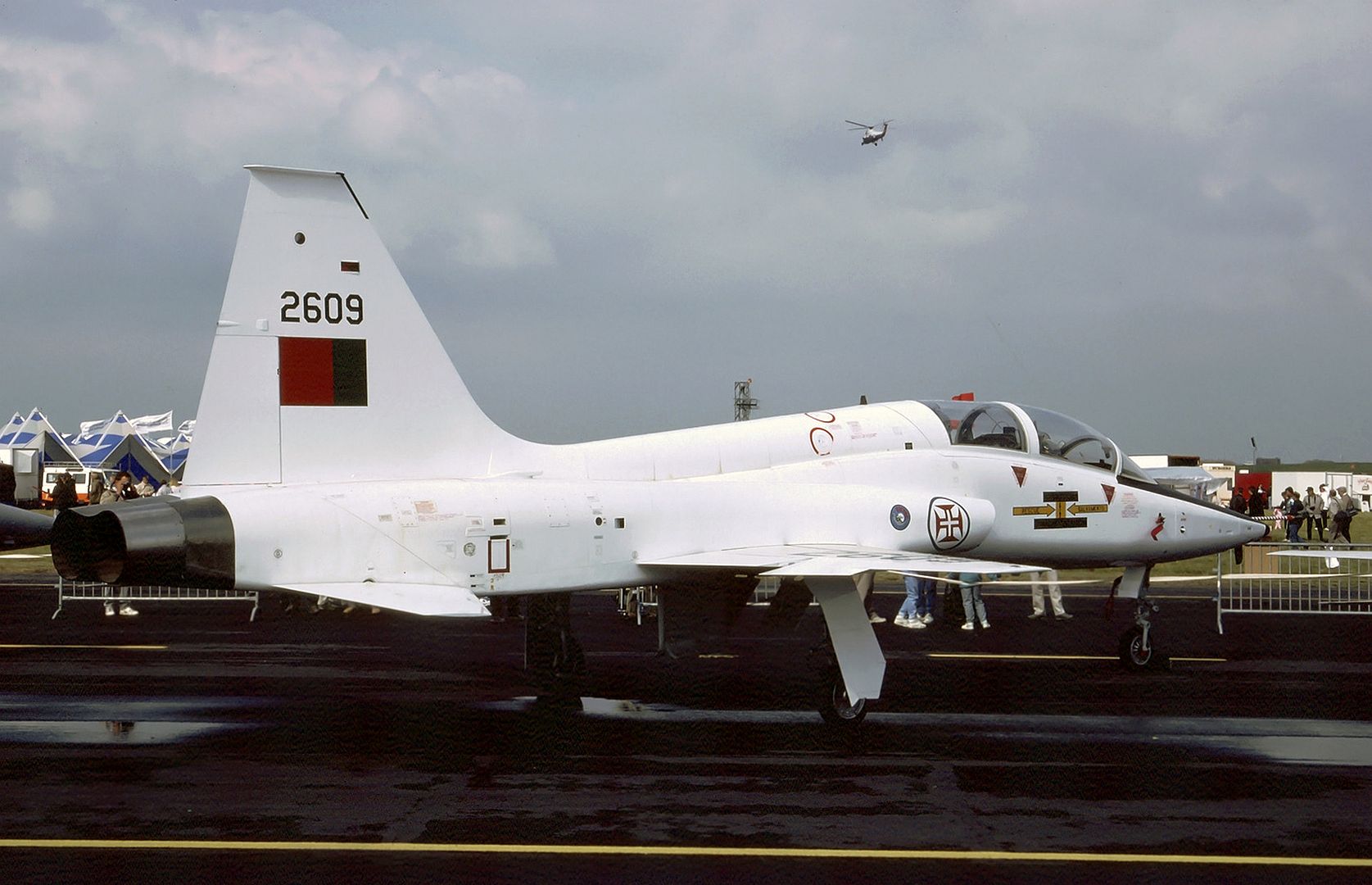
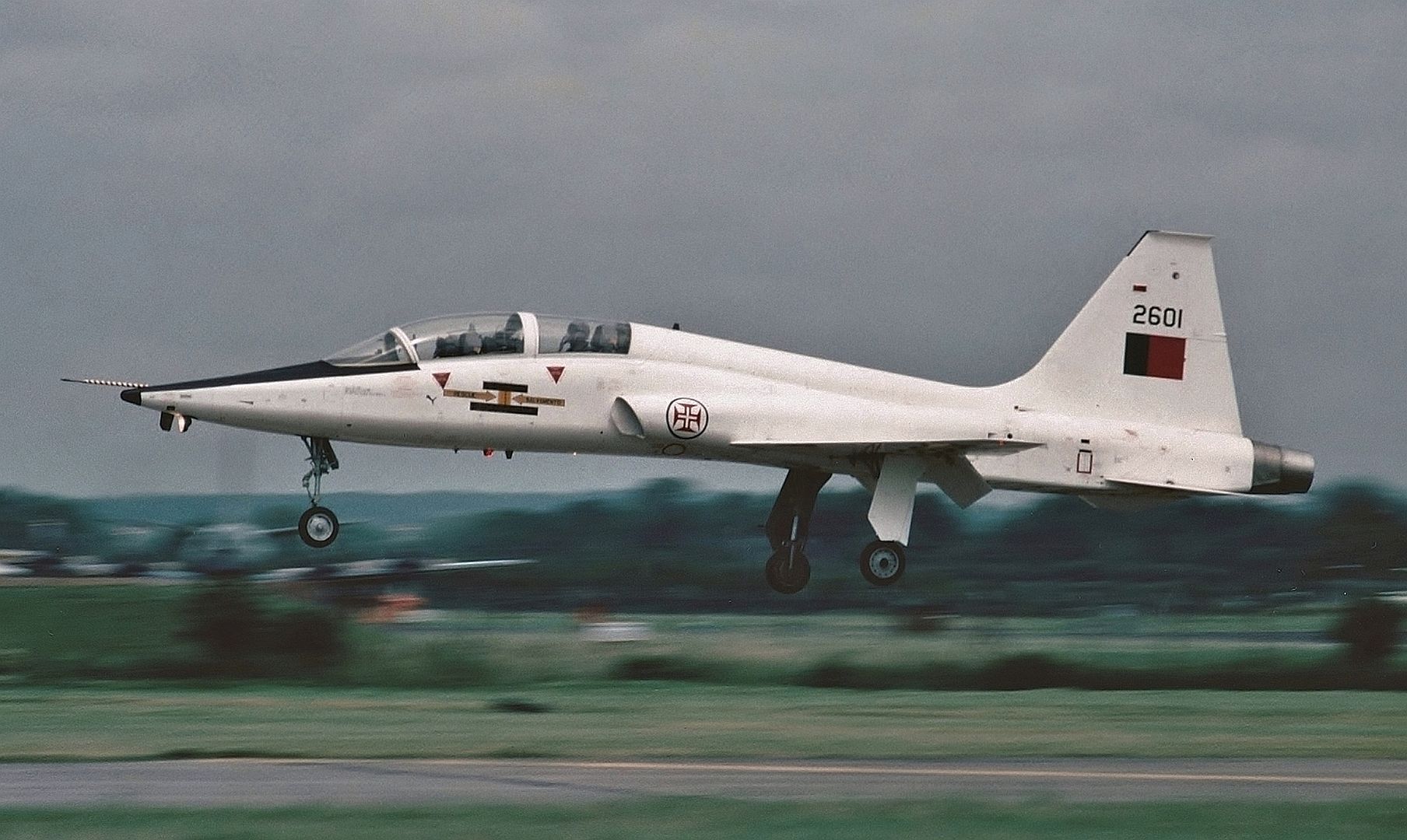
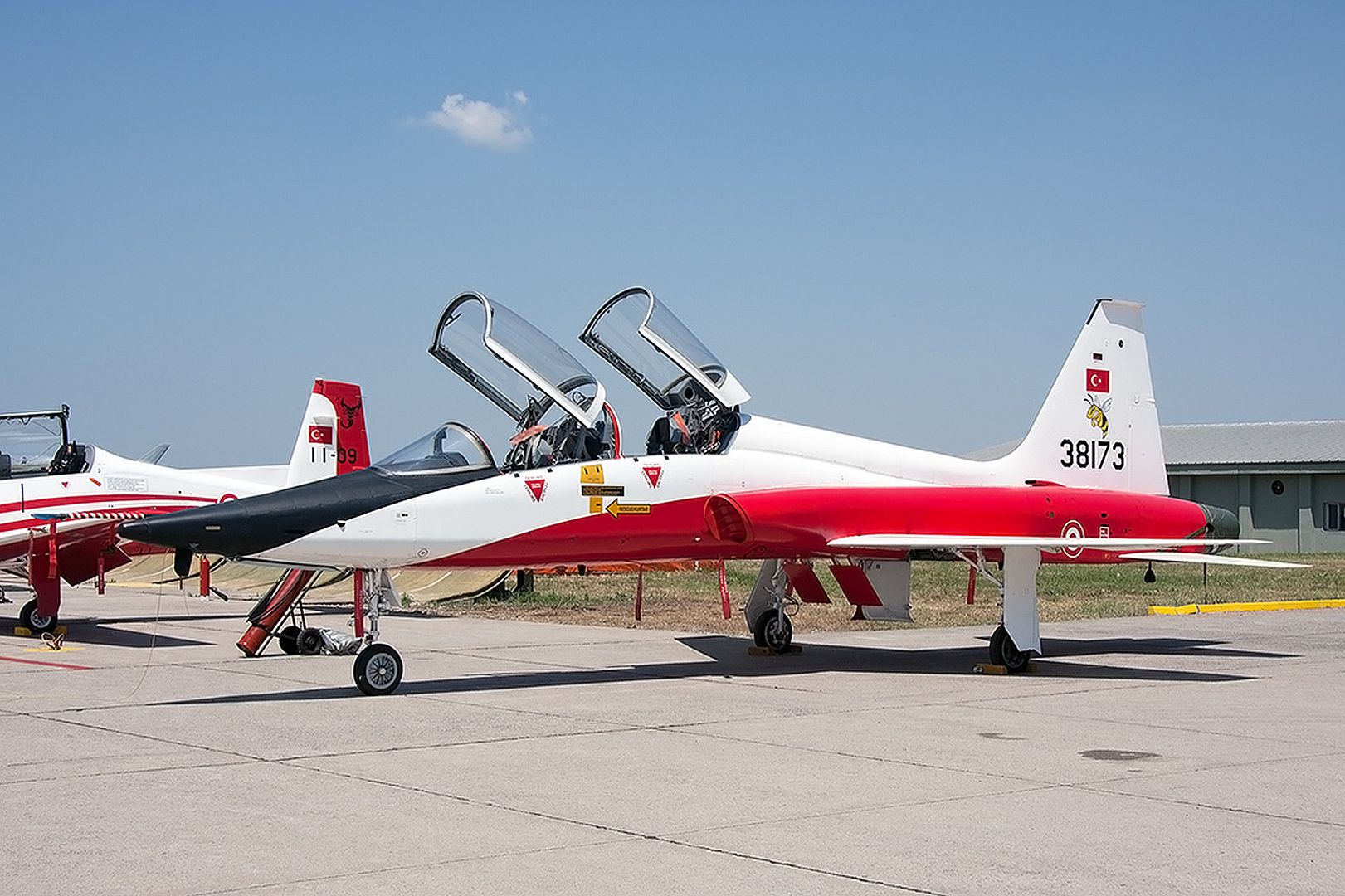
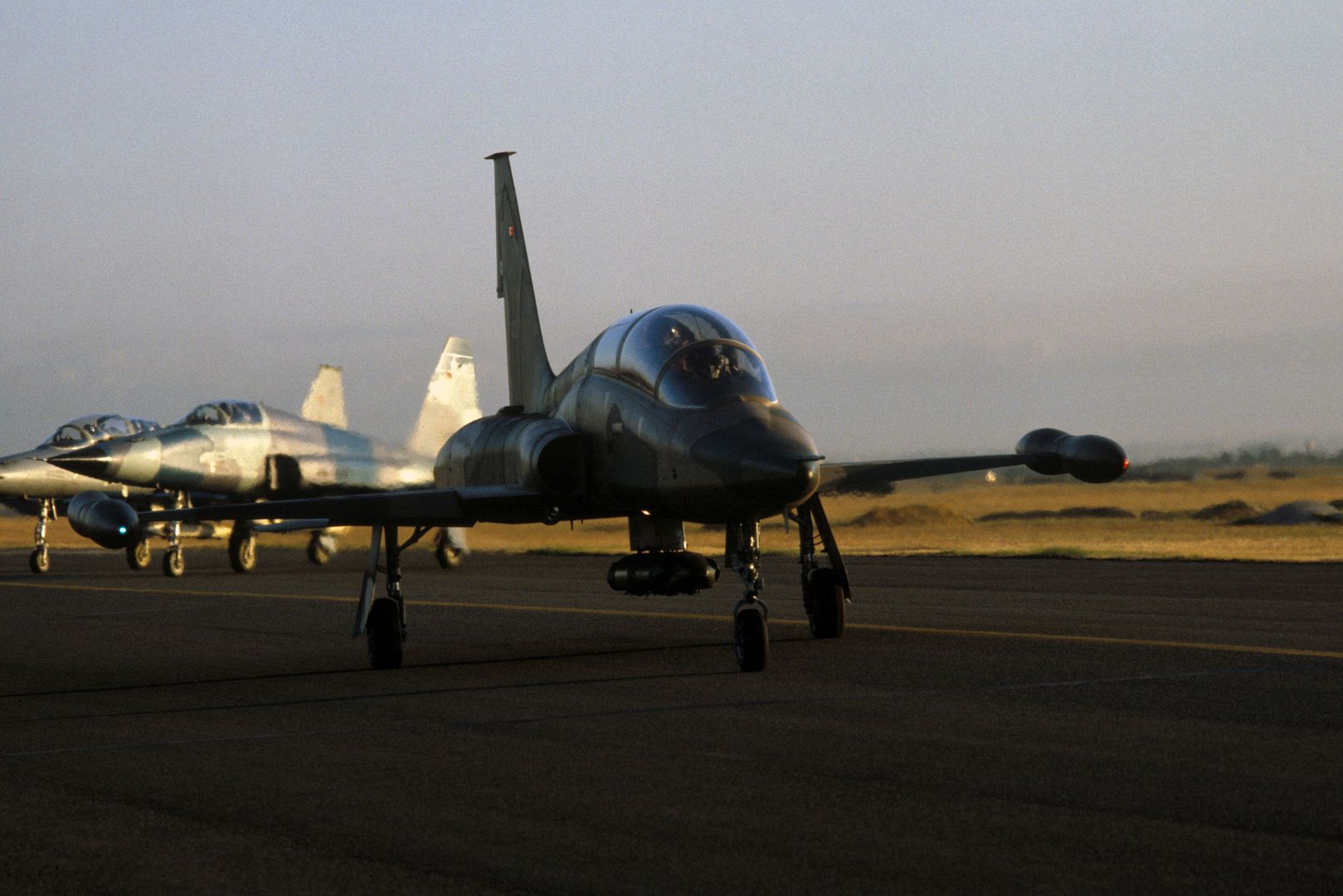

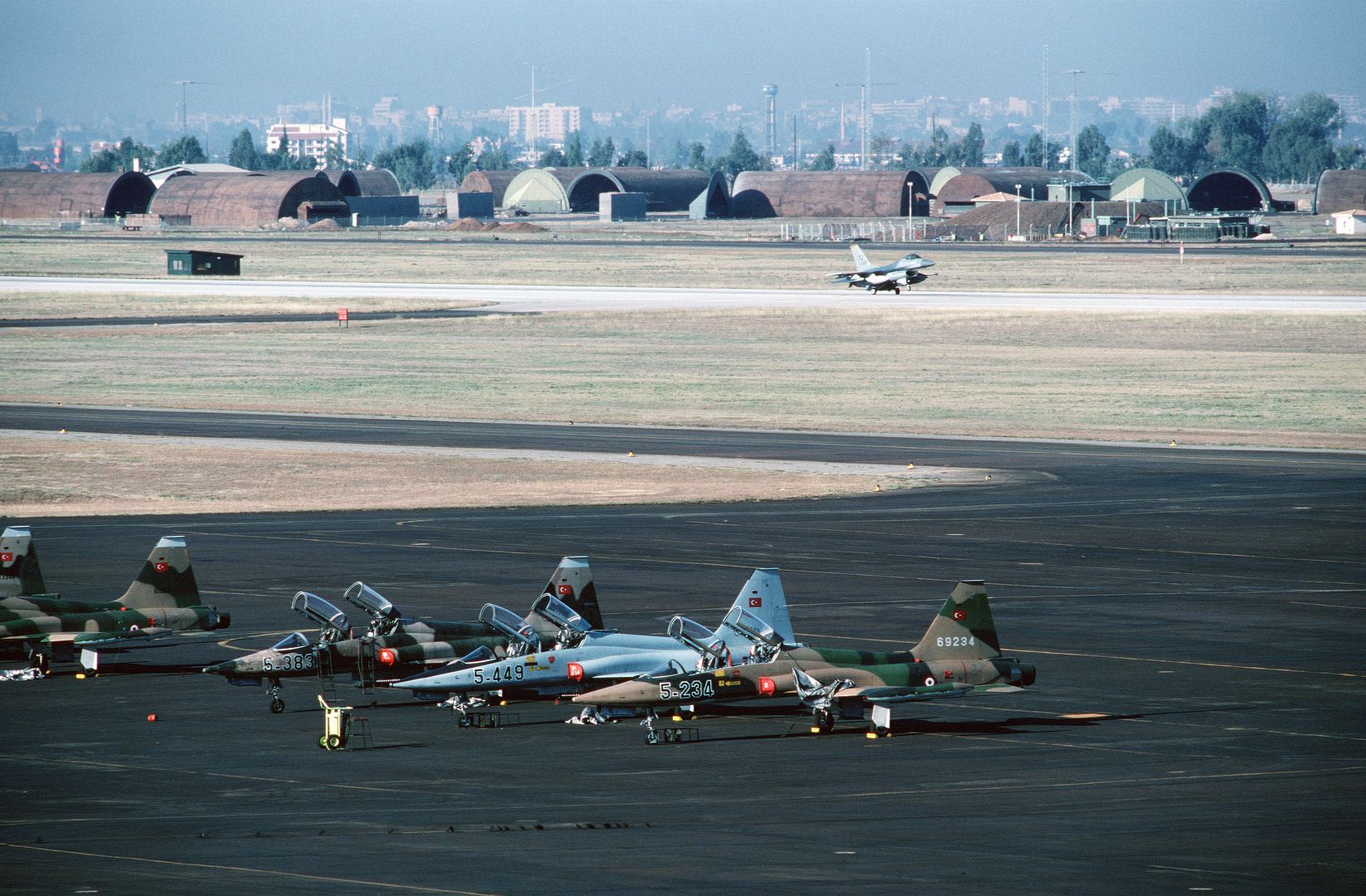
Below Nasa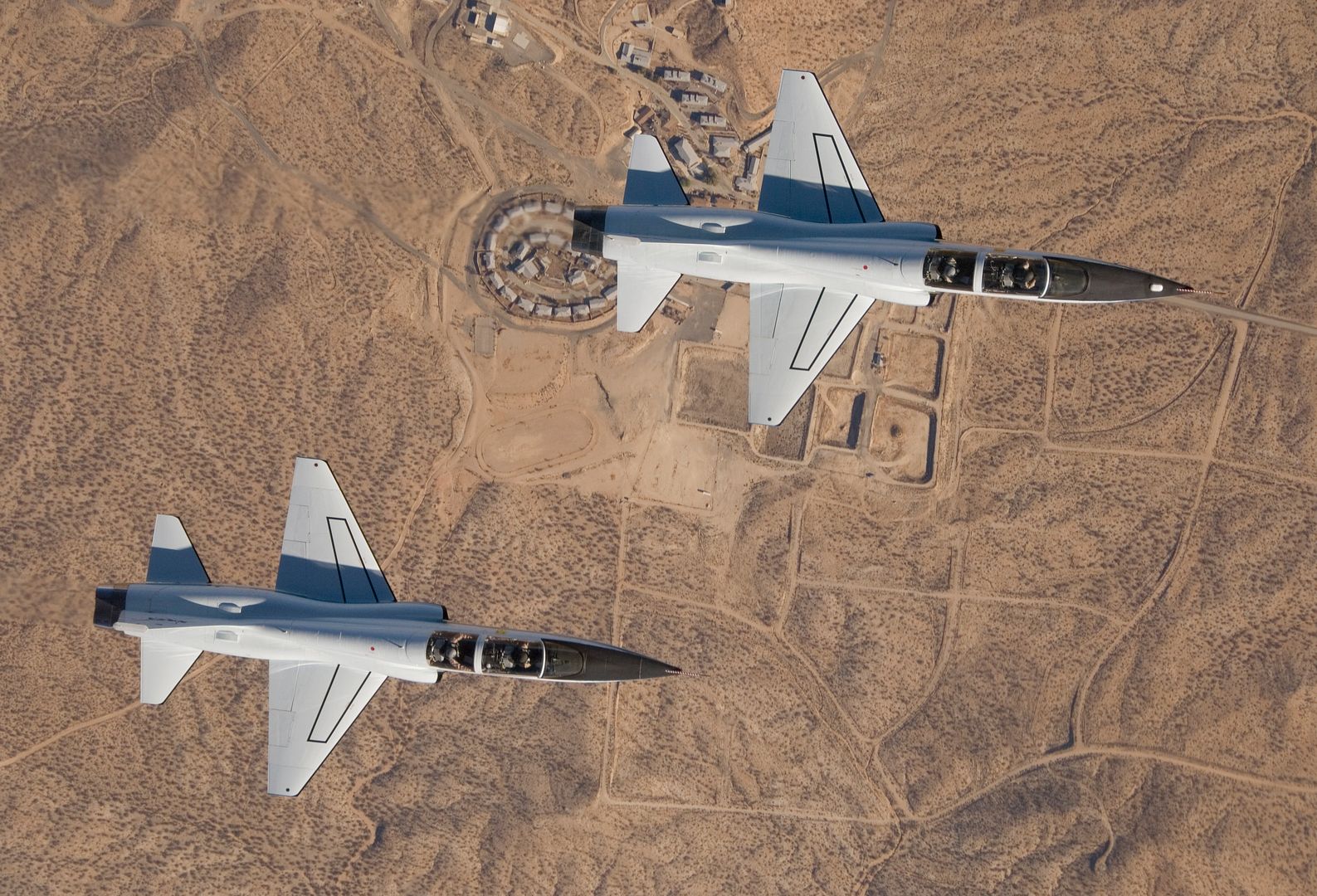
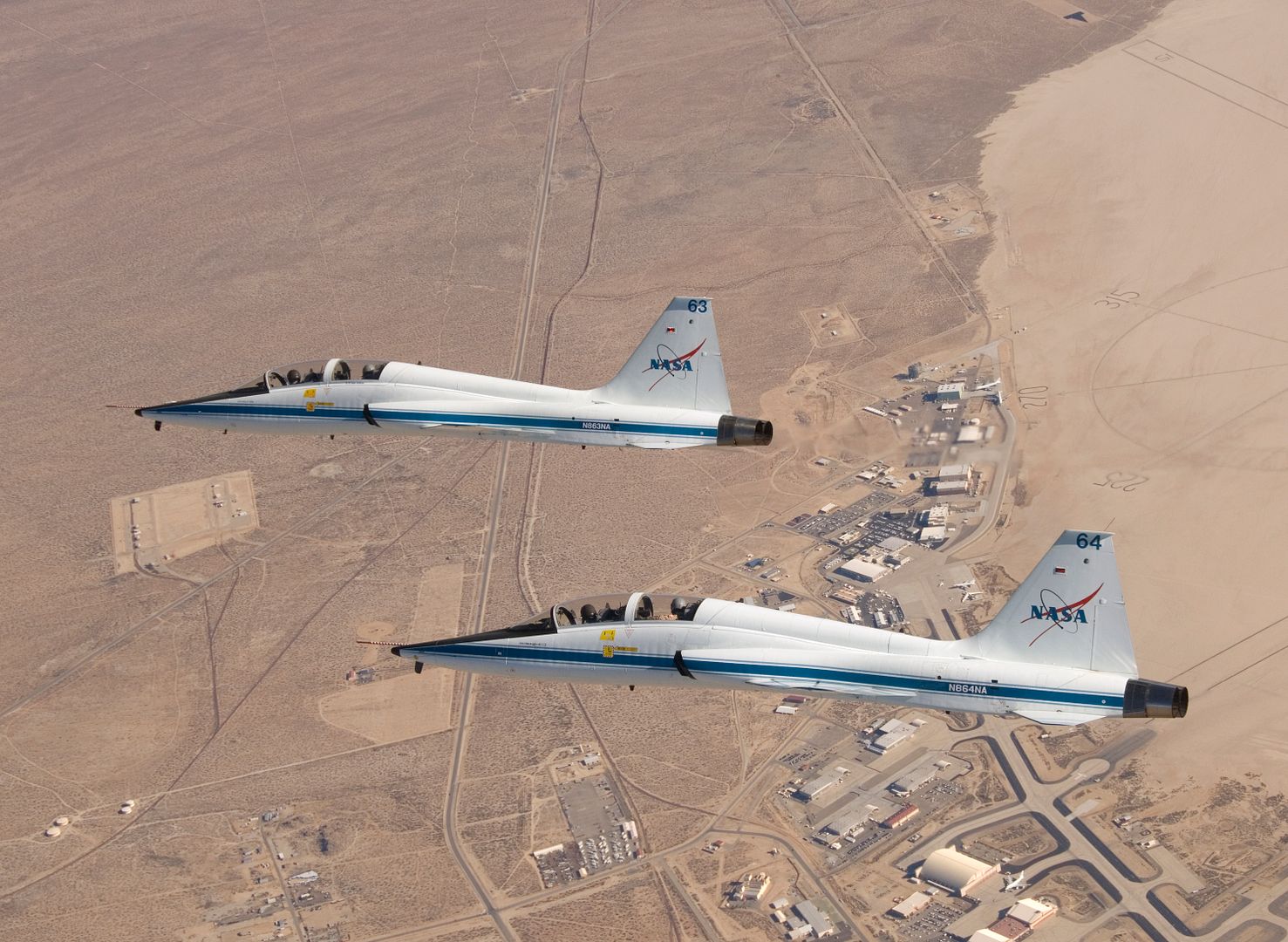
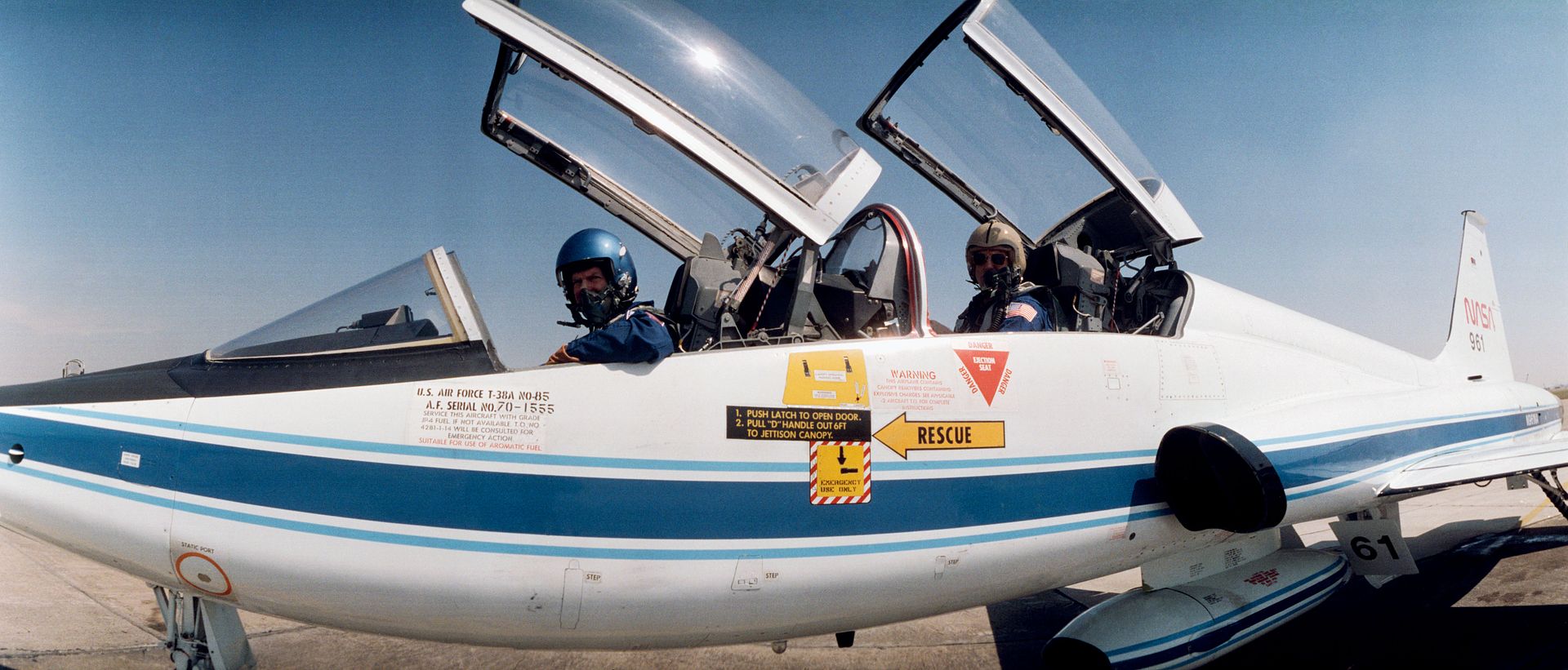
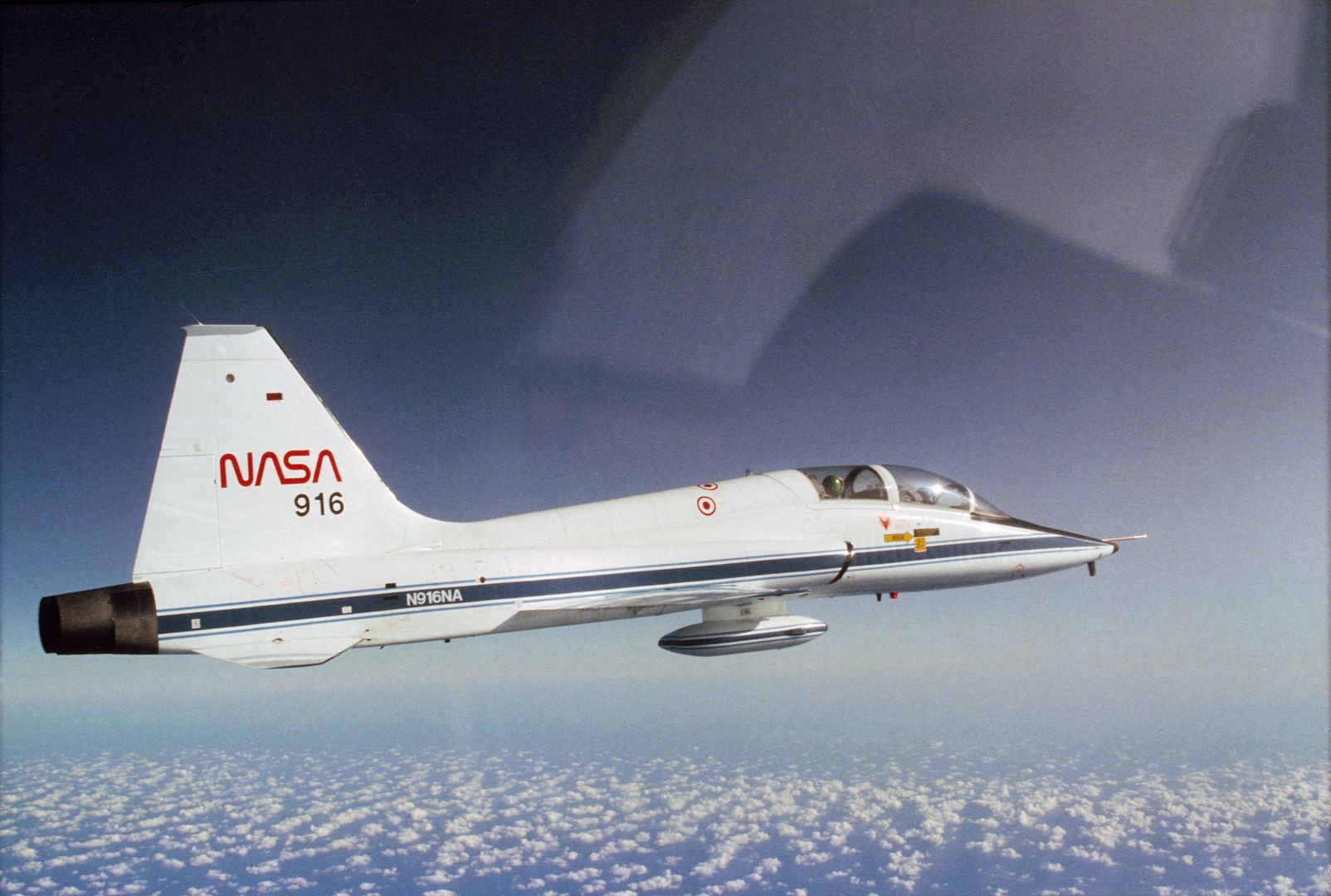
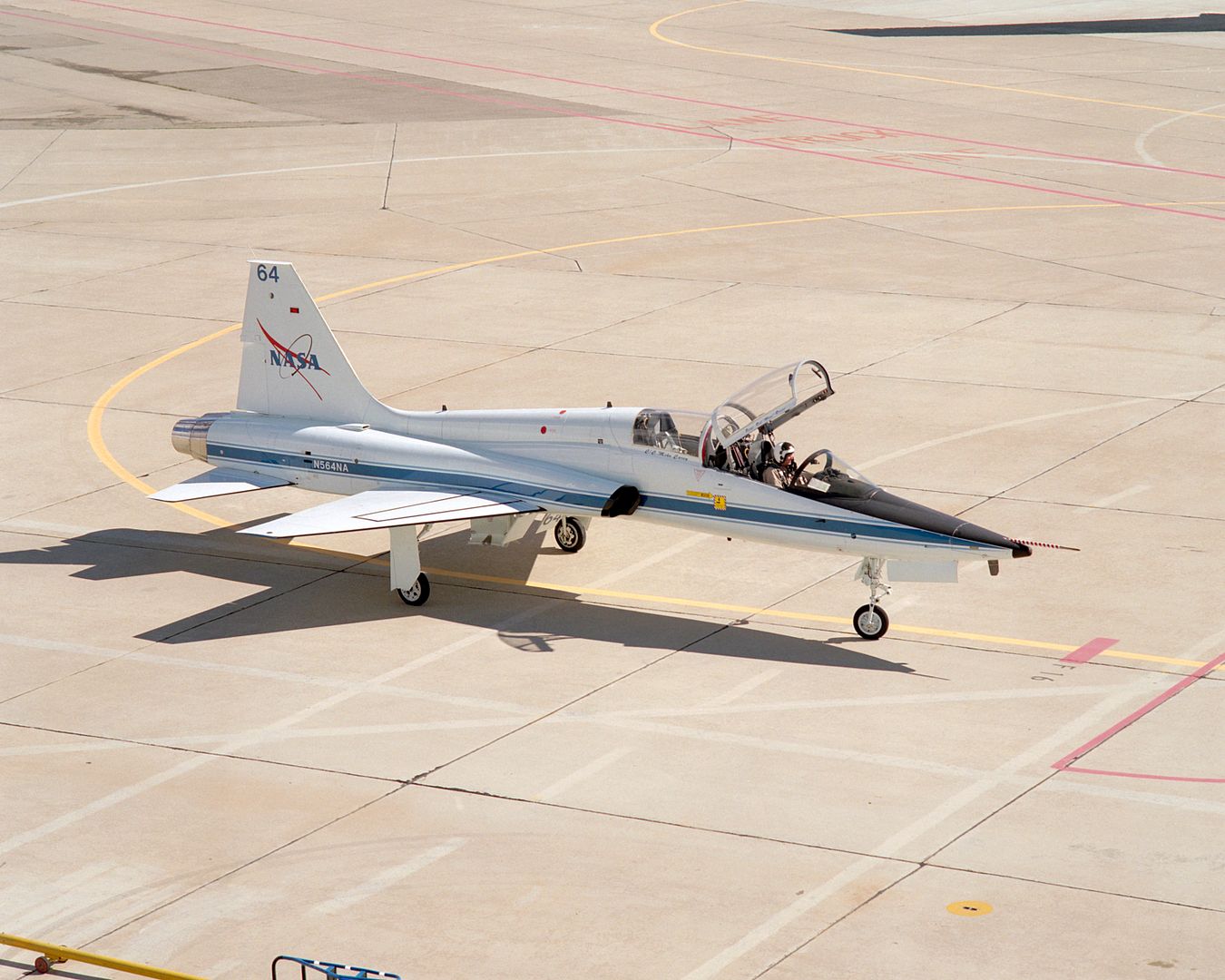
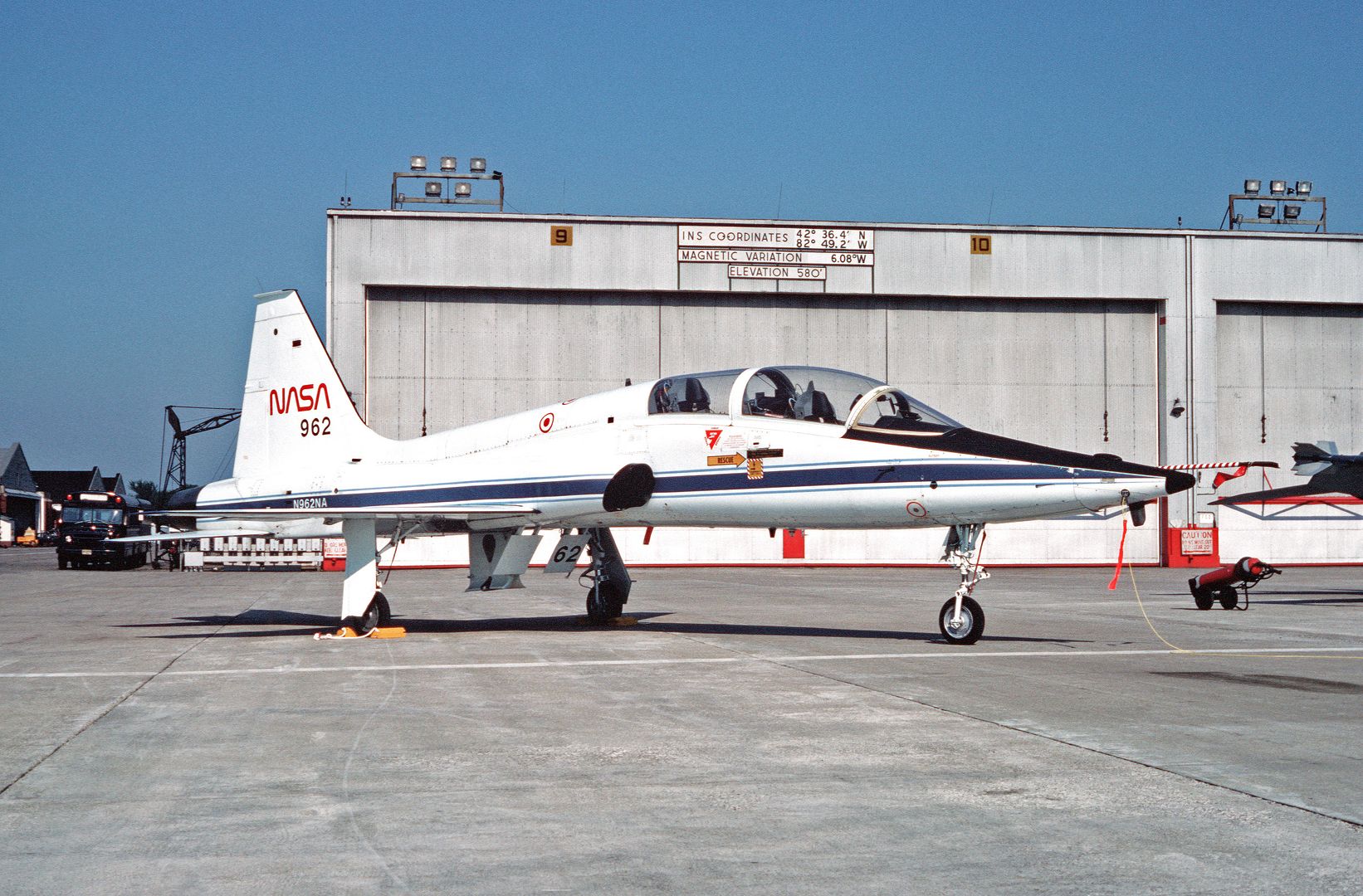
Specifications (T-38A)
General characteristics
Crew: two: student and instructor
Length: 46 ft 4.5 in (14.14 m)
Wingspan: 25 ft 3 in (7.7 m)
Height: 12 ft 10.5 in (3.92 m)
Wing area: 170 ft2 (15.79 m2)
Empty weight: 7,200 lb (3,270 kg)
Loaded weight: 11,820 lb (5,360 kg)
Max. takeoff weight: 12,093 lb (5,485 kg)
Powerplant: 2 ? General Electric J85-5A (J85-5R after PMP modification) afterburning turbojets
Dry thrust: 2,050 lb (9.1 kN) each
Thrust with afterburner: 2,900 lbf (12.9 kN) each
Performance
Maximum speed: Mach 1.3 (858 mph, 1,381 km/h)
Range: 1,140 mi (1,835 km)
Service ceiling: 50,000 ft (15,240 m)
Rate of climb: 33,600 ft/min (170.7 m/s) ()
Wing loading: 69.53 lb/ft2 (339.4 kg/m2)
Thrust/weight: 0.65
Post a reply
- Go to Previous topic
- Go to Next topic
- Go to Welcome
- Go to Introduce Yourself
- Go to General Discussion
- Go to Screenshots, Images and Videos
- Go to Off topic
- Go to Works in Progress
- Go to Skinning Tips / Tutorials
- Go to Skin Requests
- Go to IJAAF Library
- Go to Luftwaffe Library
- Go to RAF Library
- Go to USAAF / USN Library
- Go to Misc Library
- Go to The Ops Room
- Go to Made in Germany
- Go to Campaigns and Missions
- Go to Works in Progress
- Go to Juri's Air-Raid Shelter
- Go to Campaigns and Missions
- Go to Works in Progress
- Go to Skinpacks
- Go to External Projects Discussion
- Go to Books & Resources
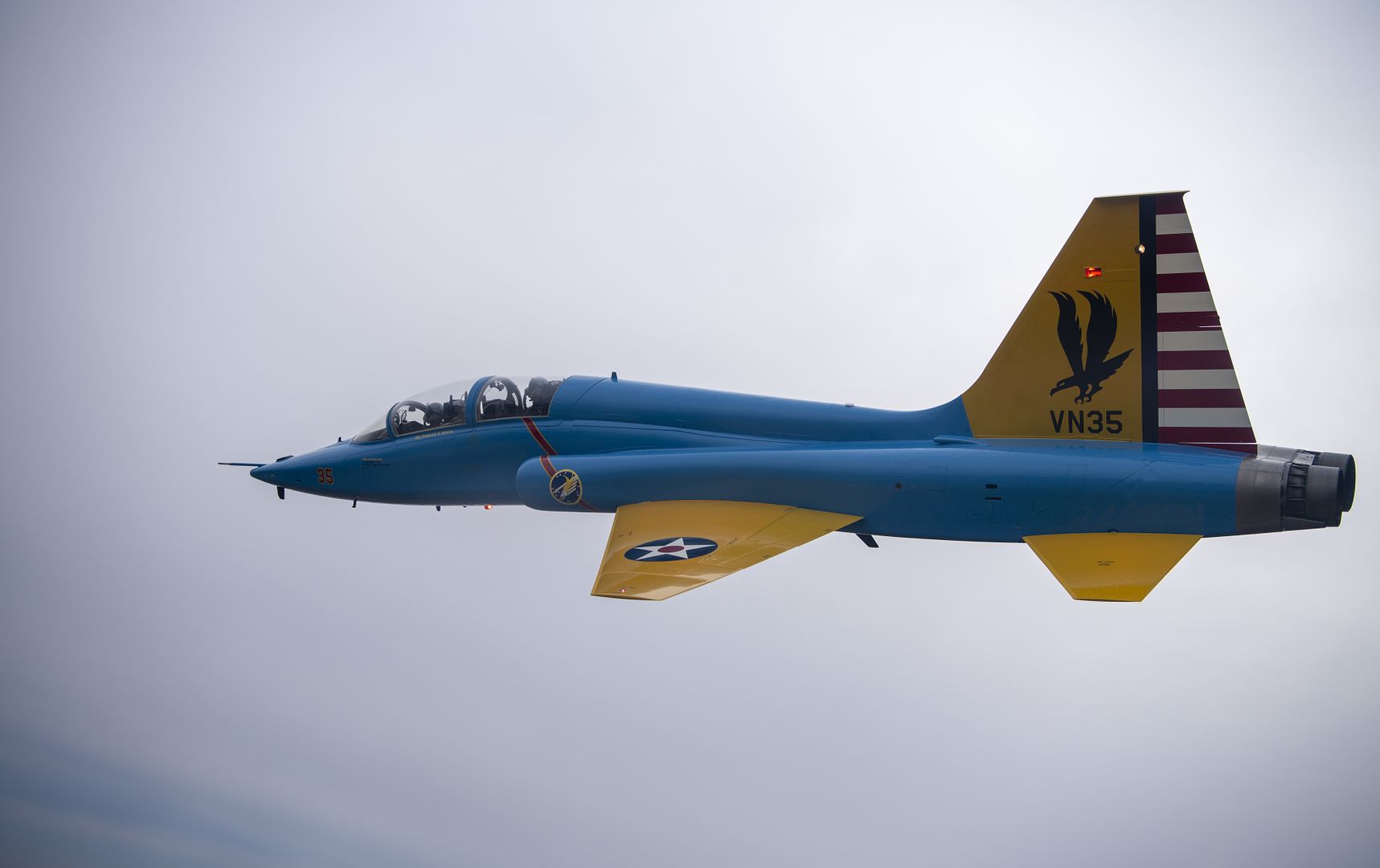
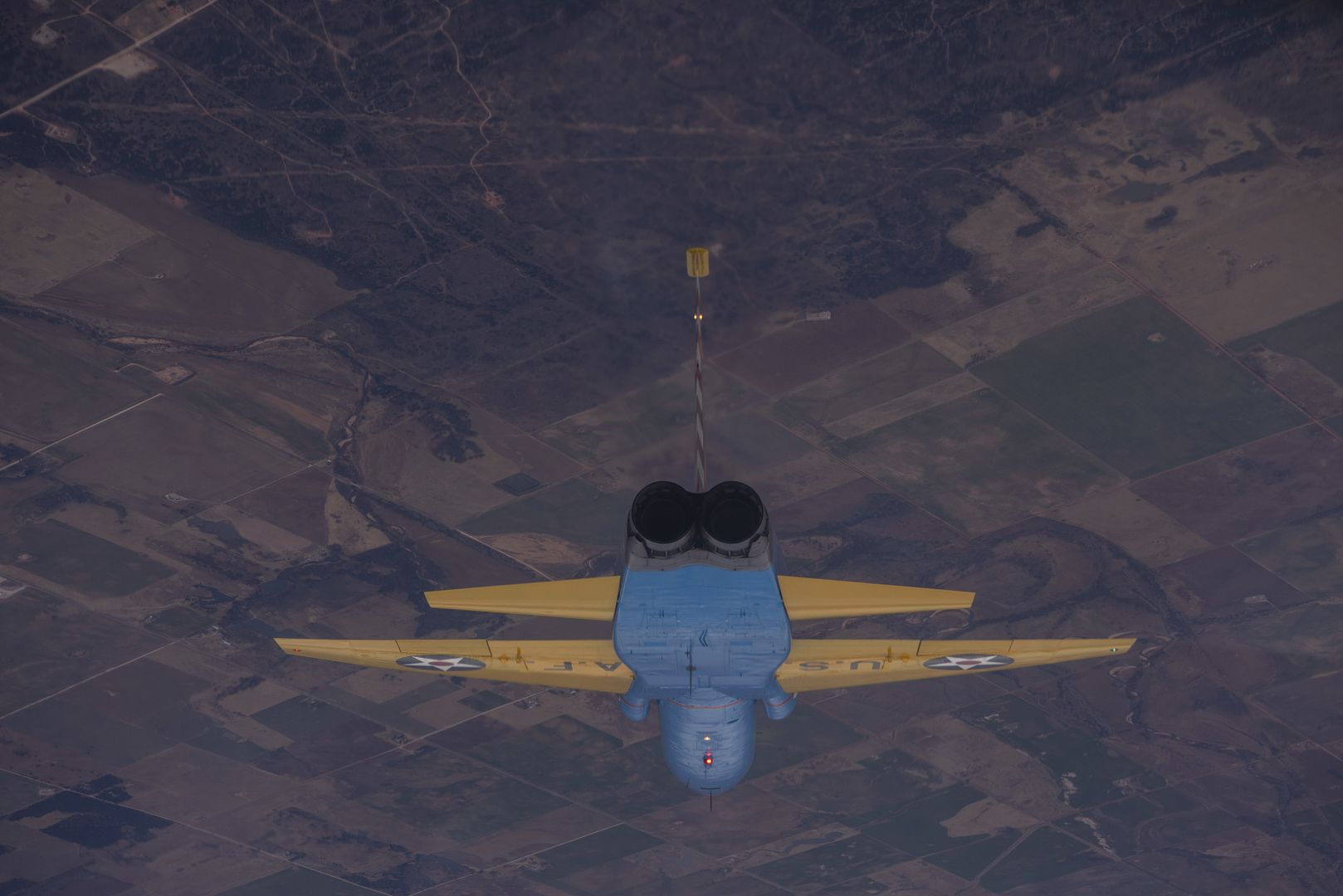
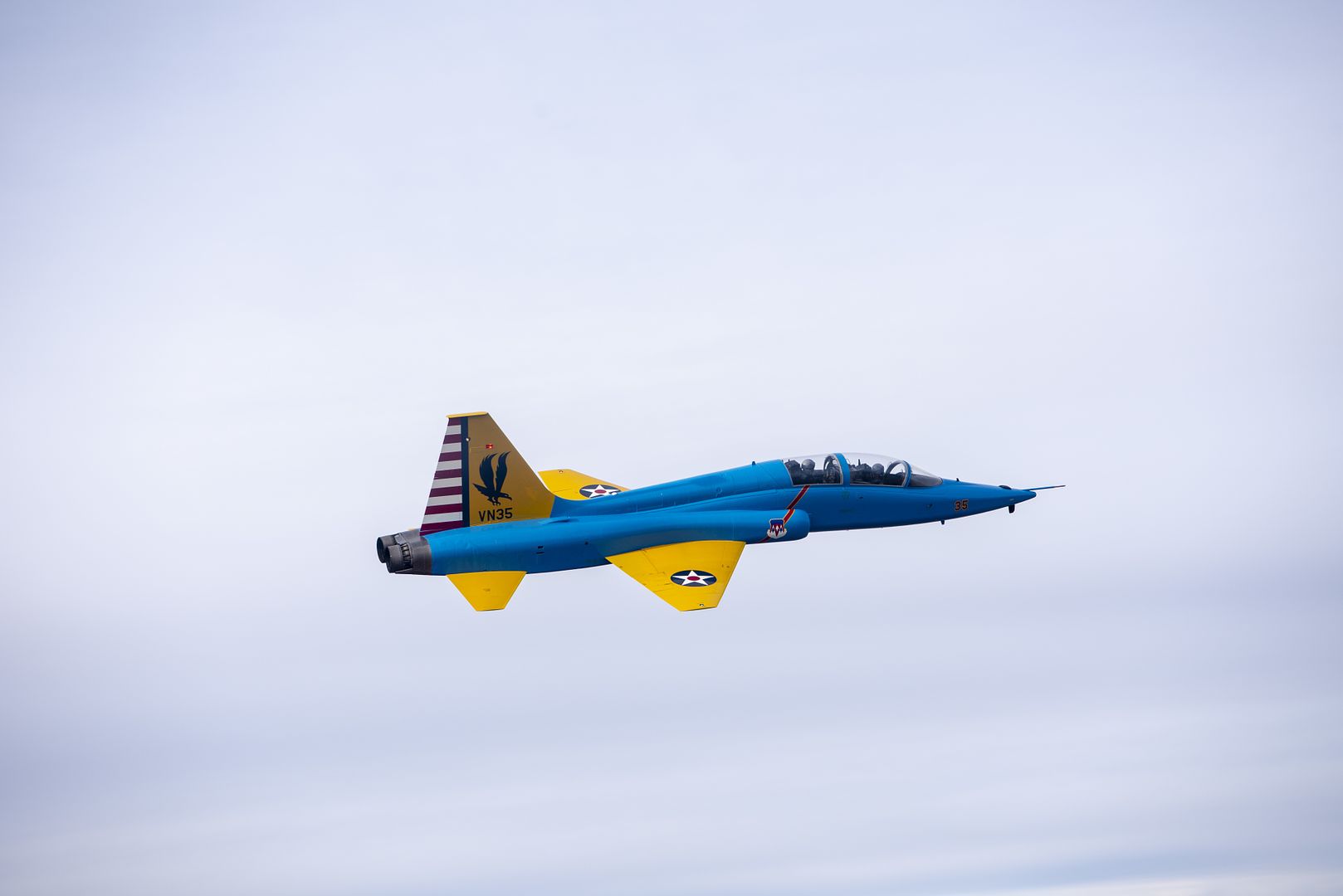
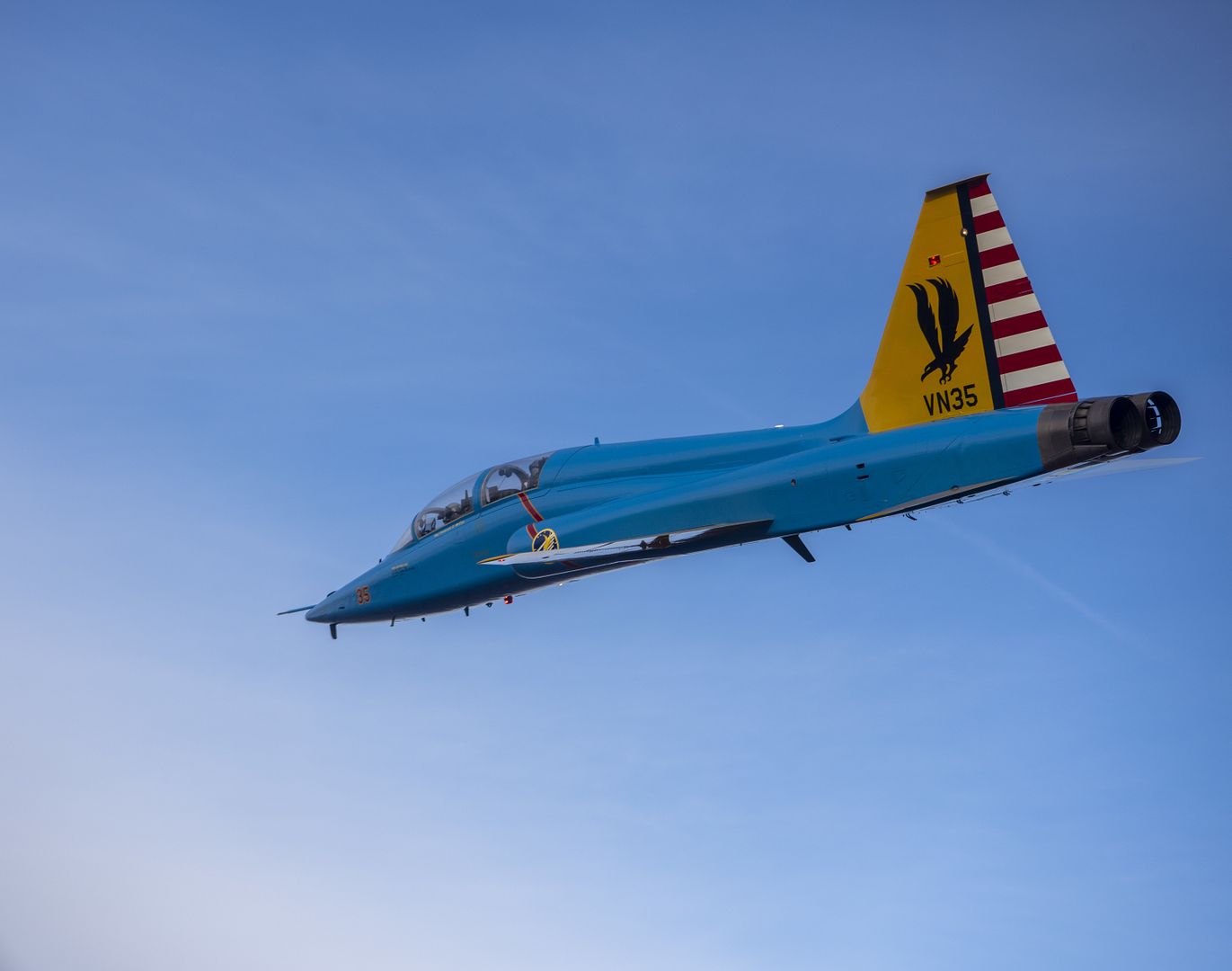
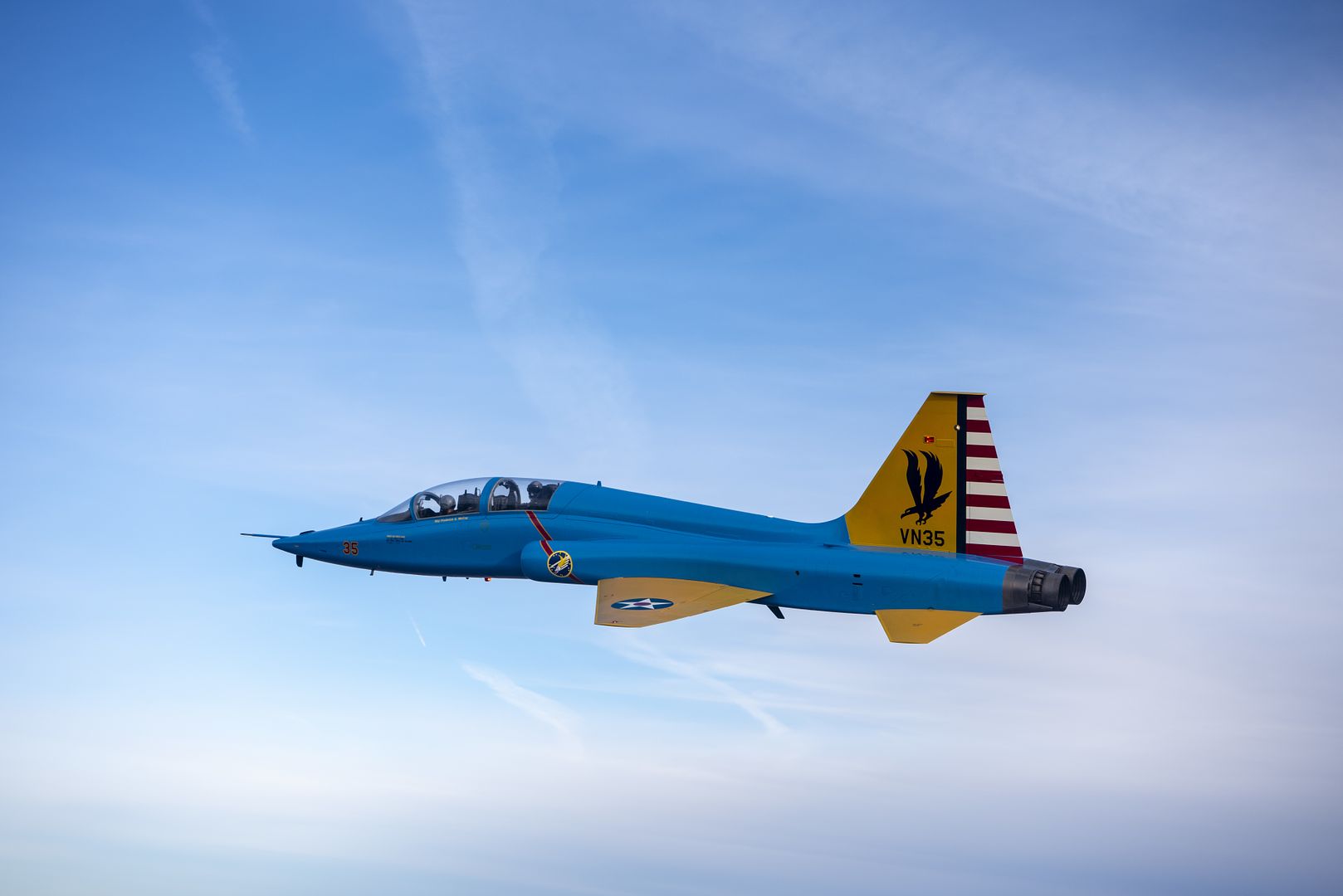
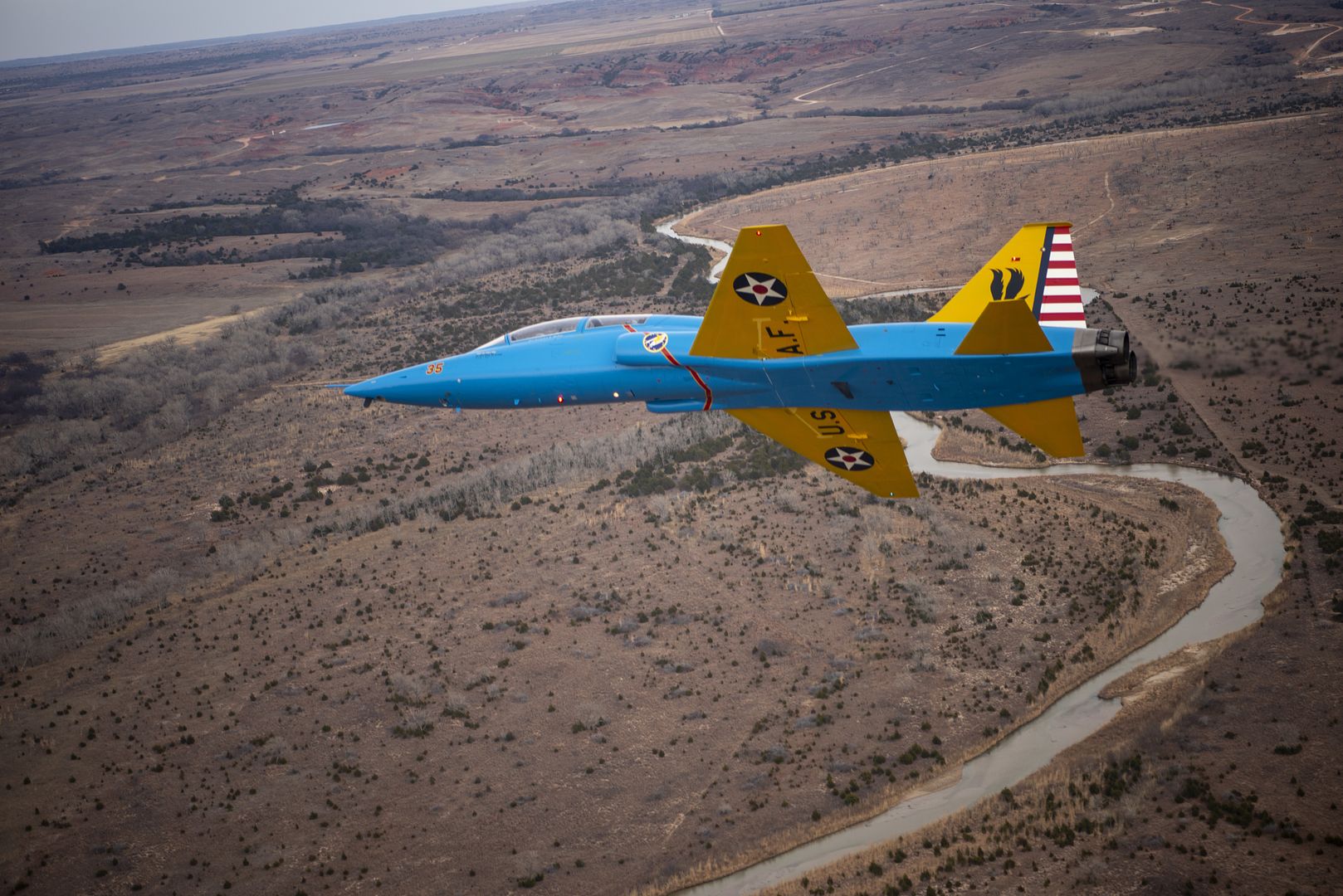
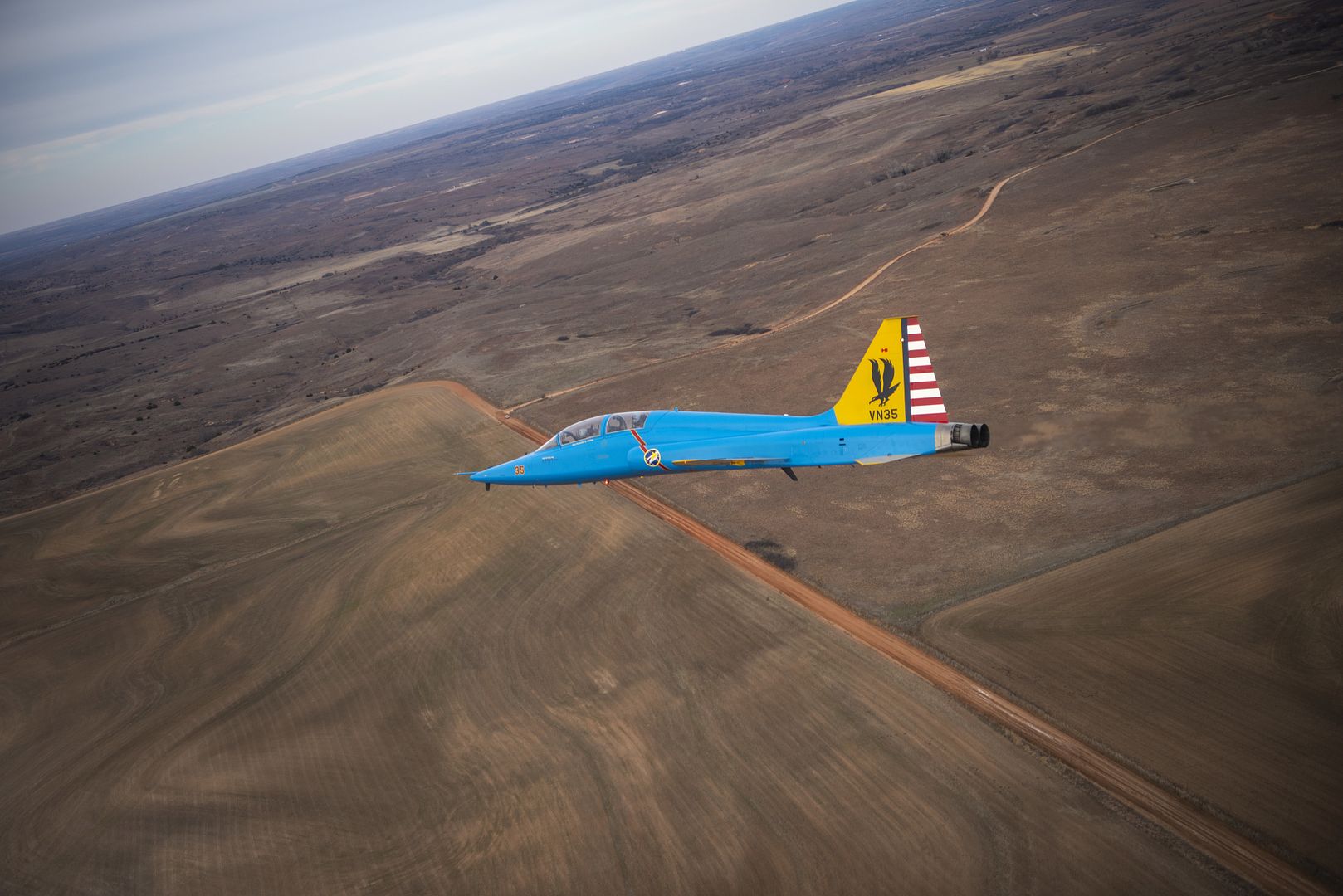

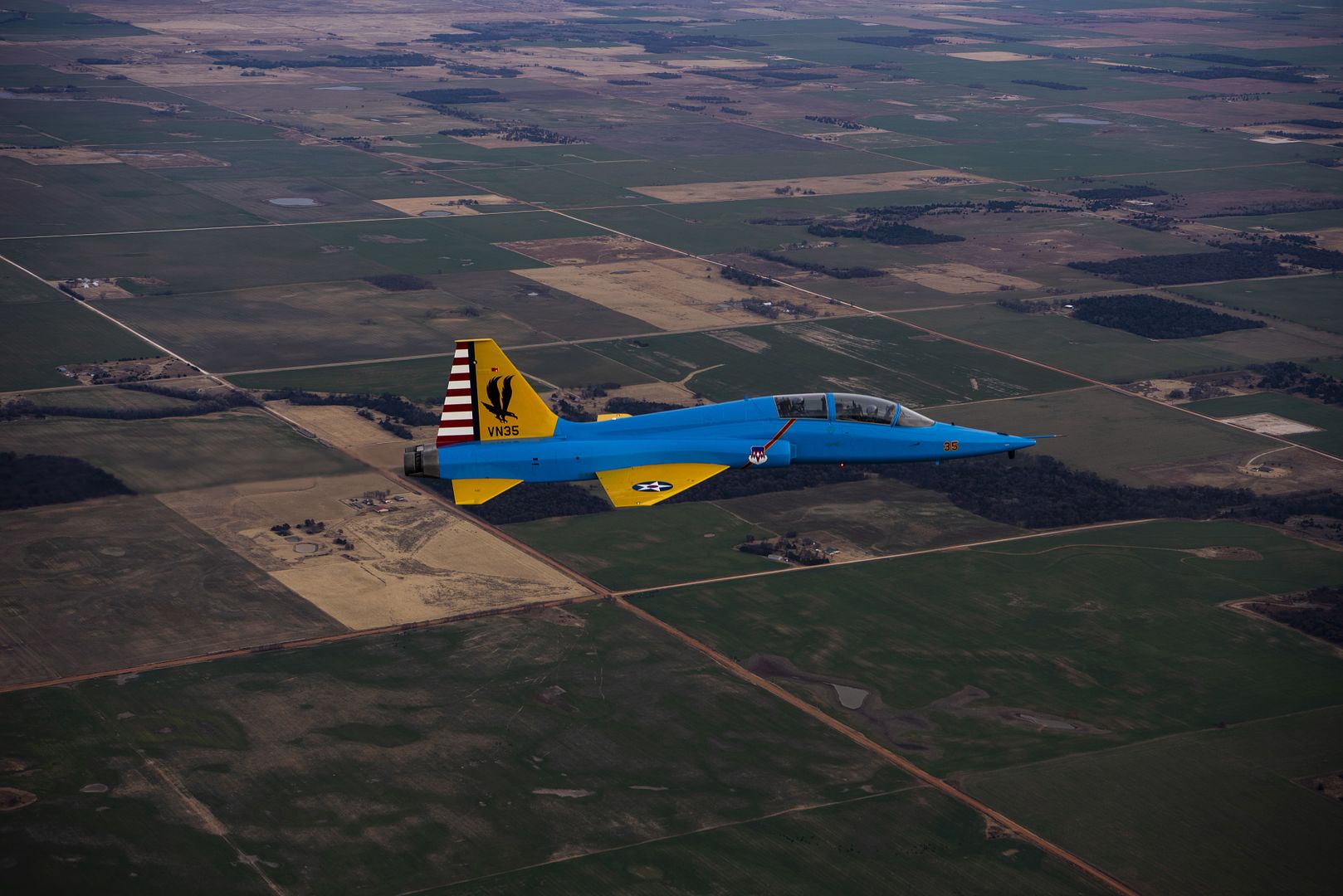
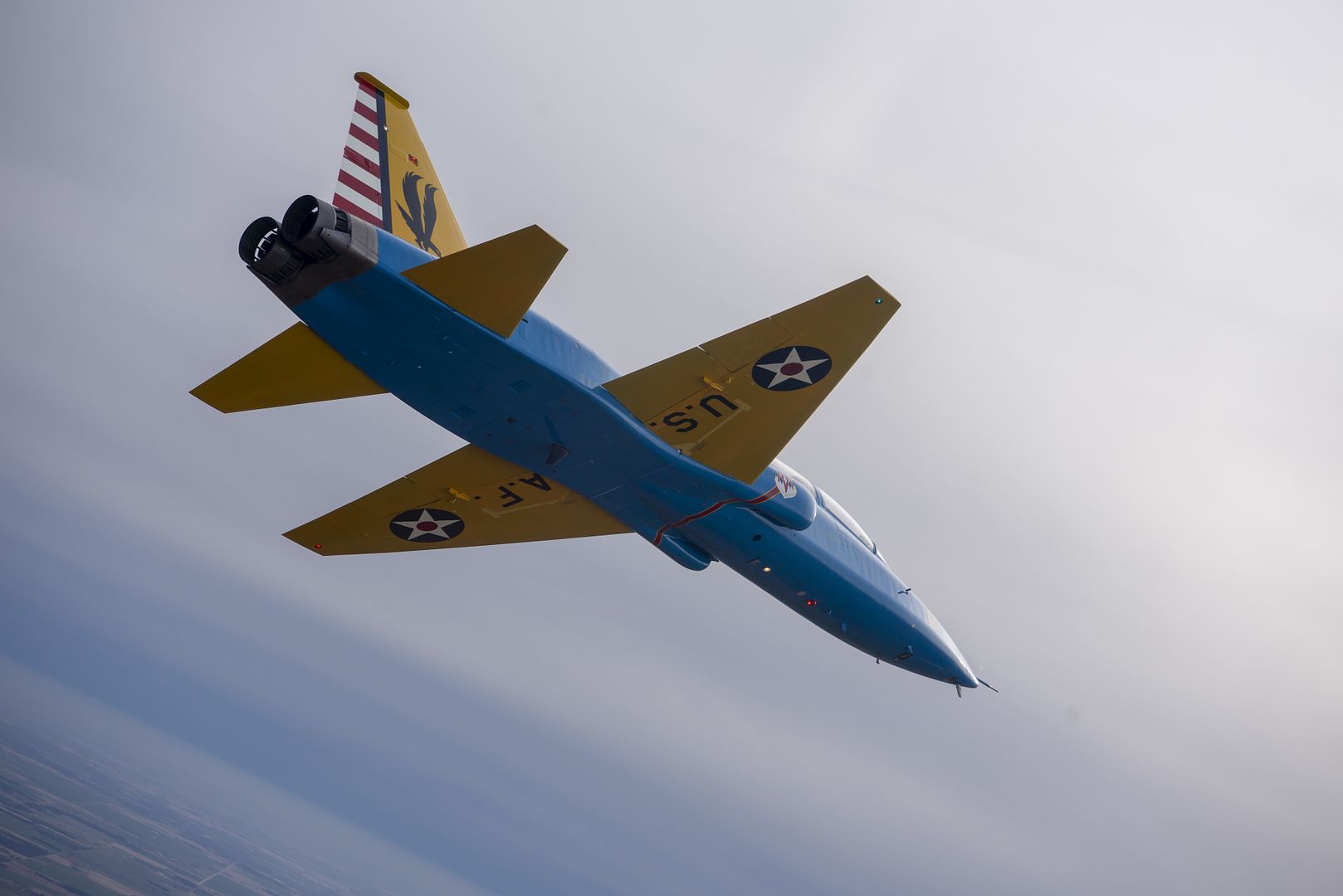
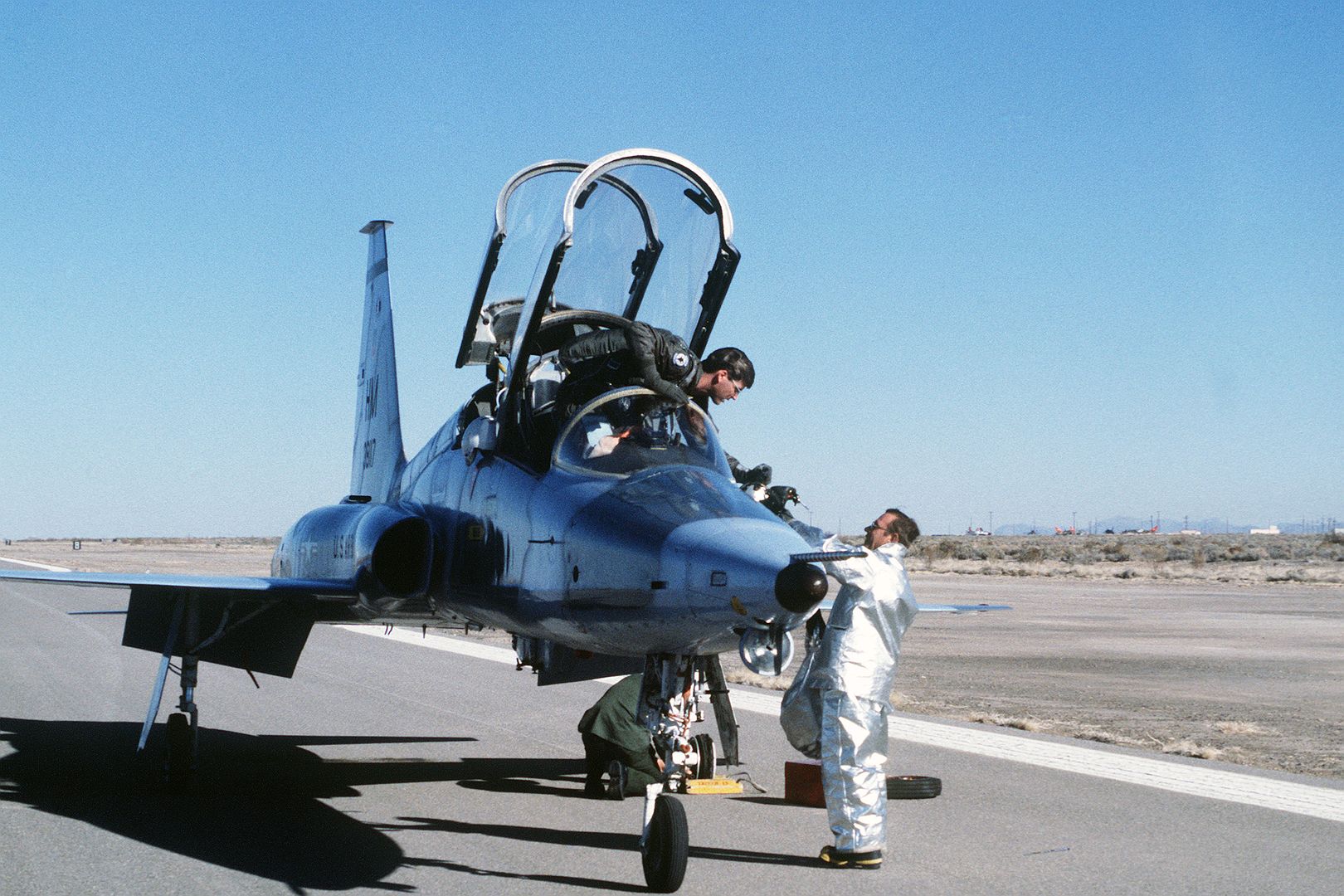
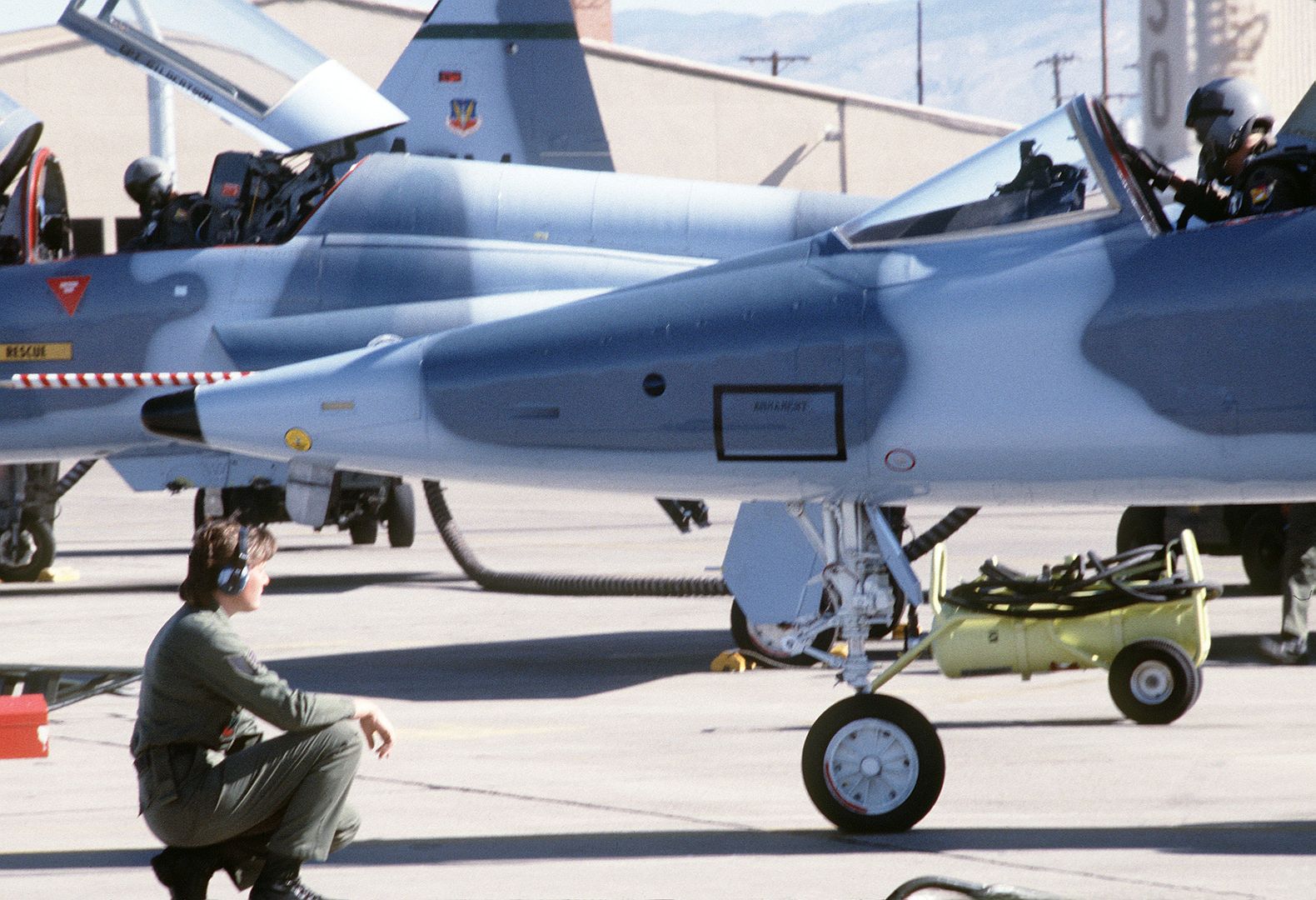

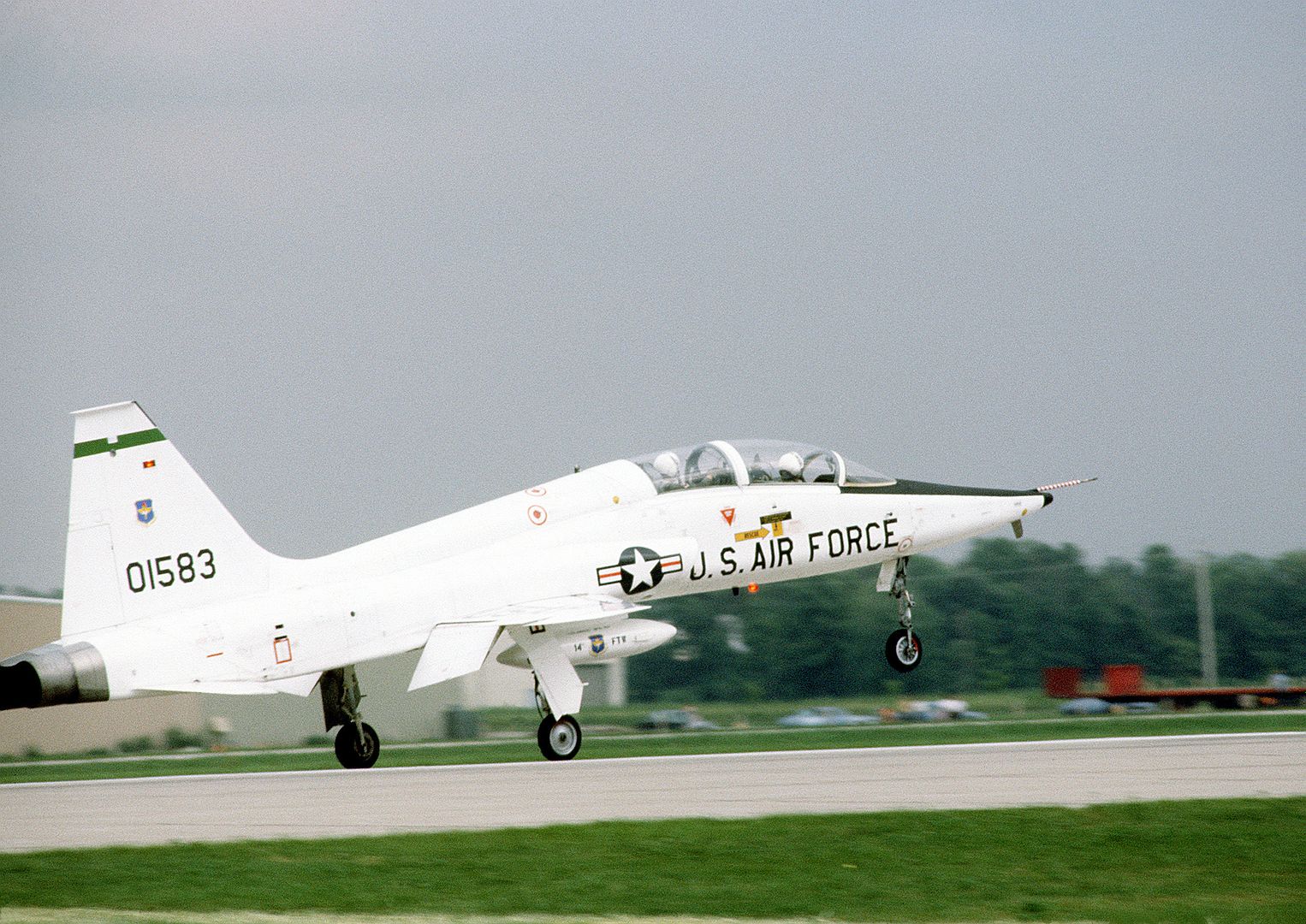
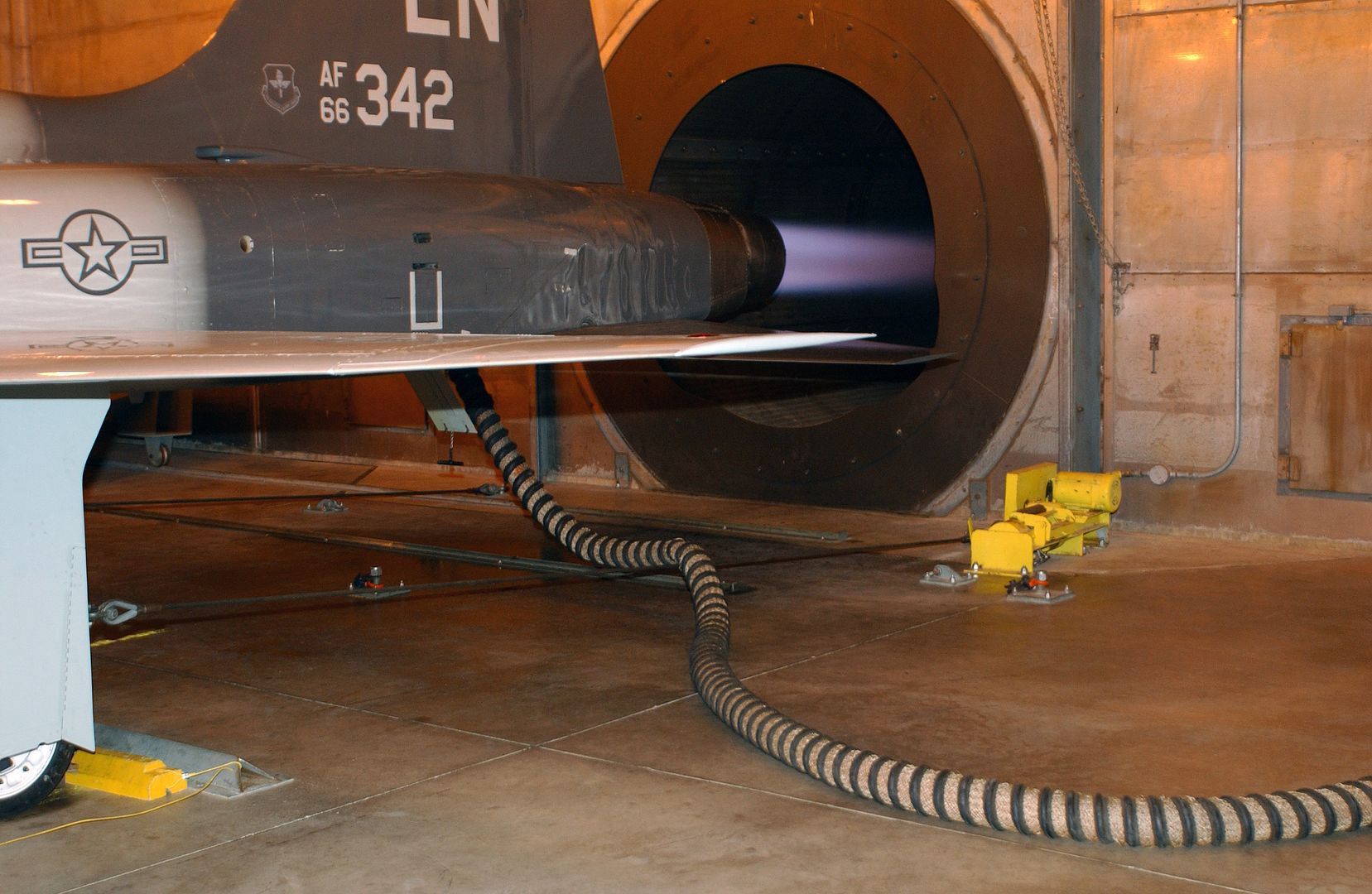
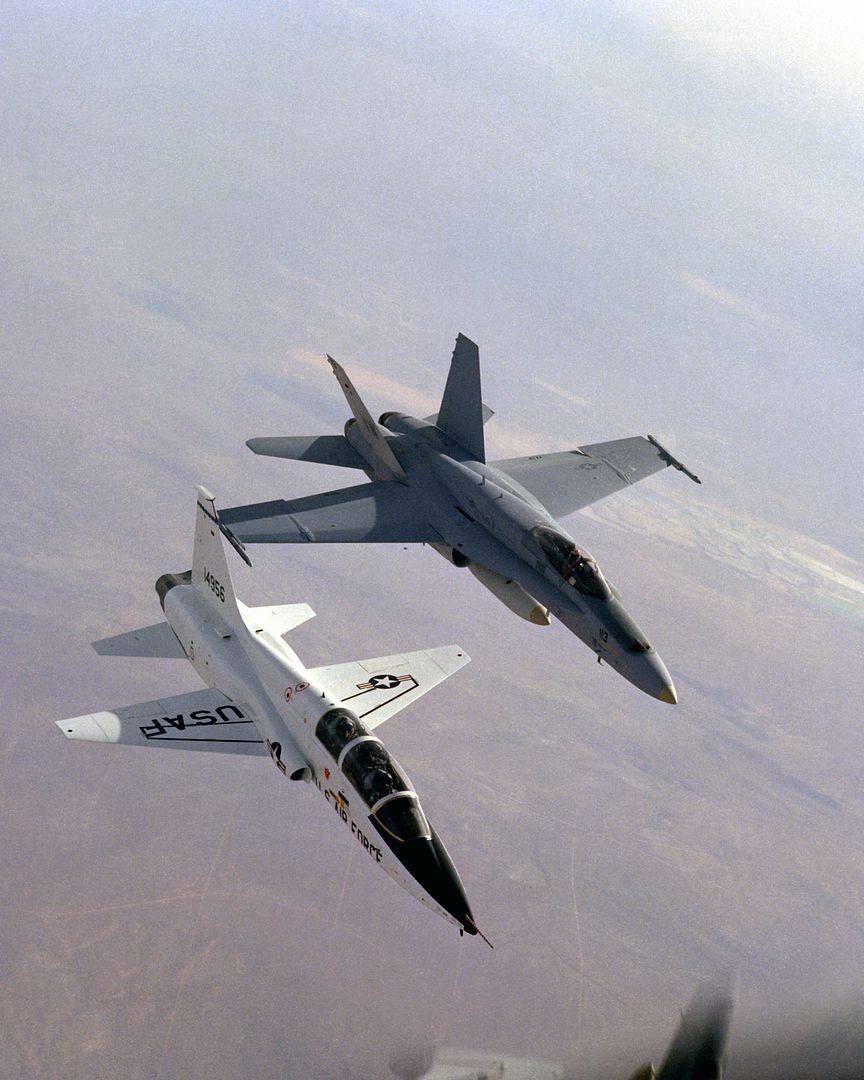
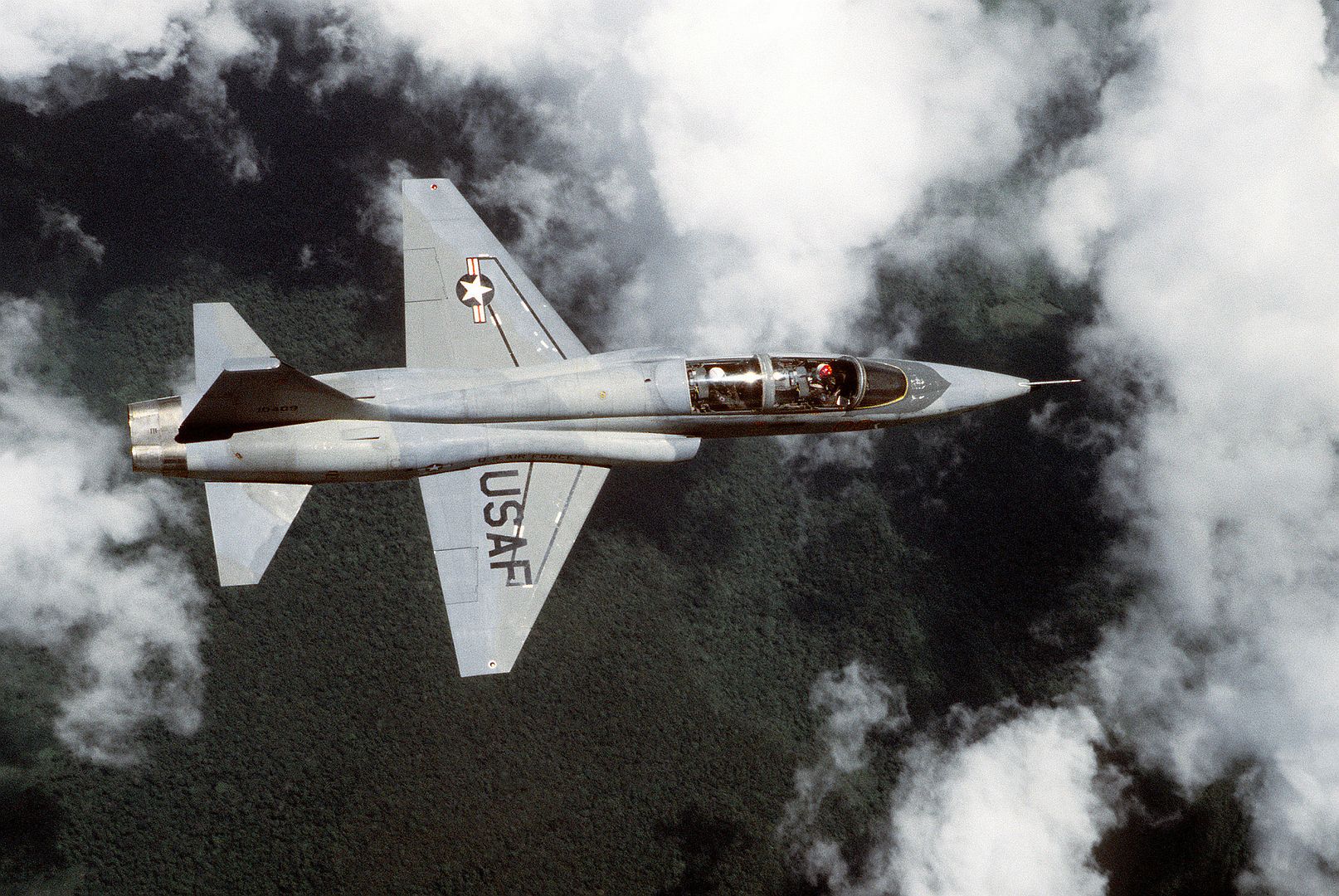

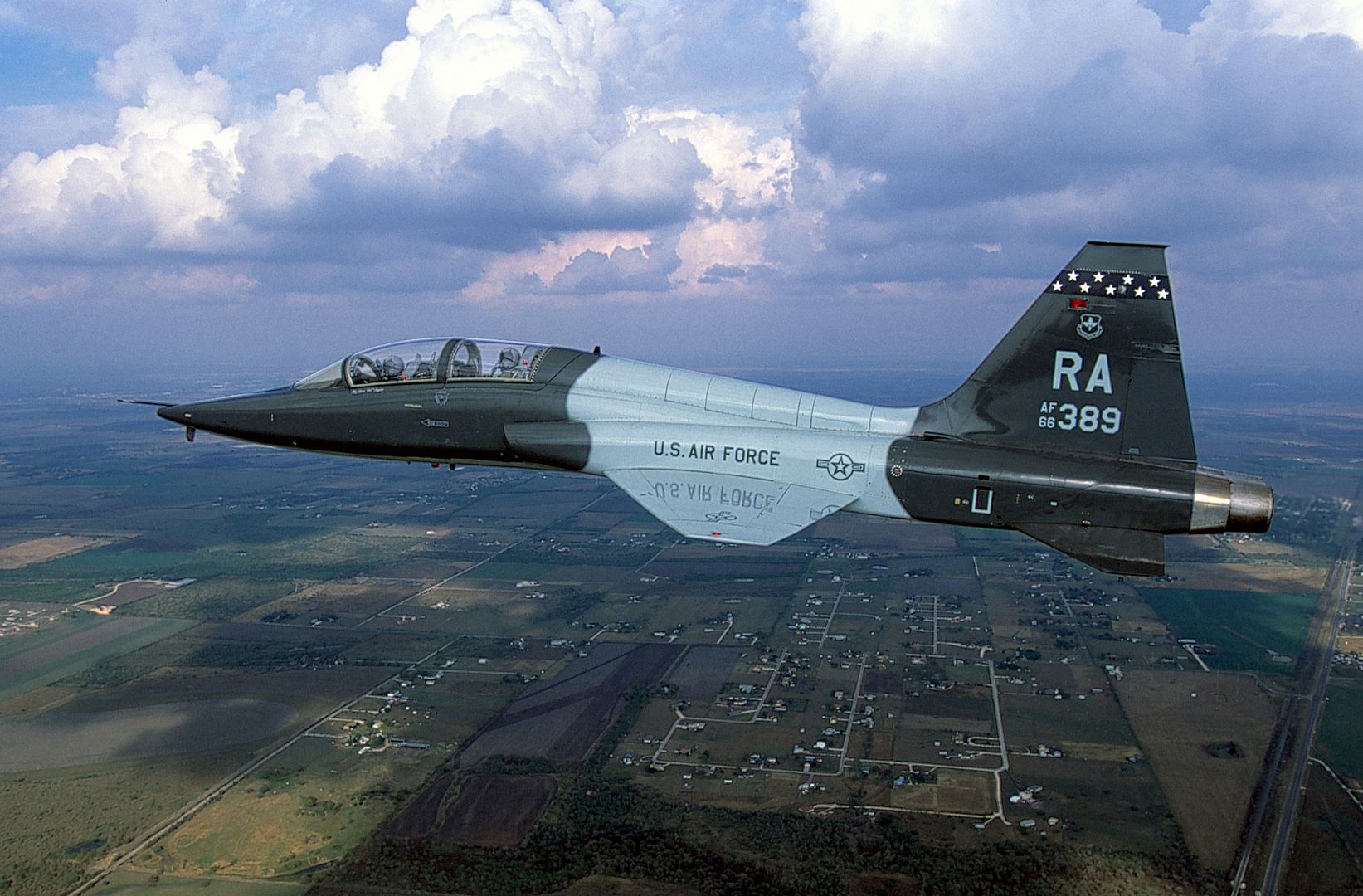
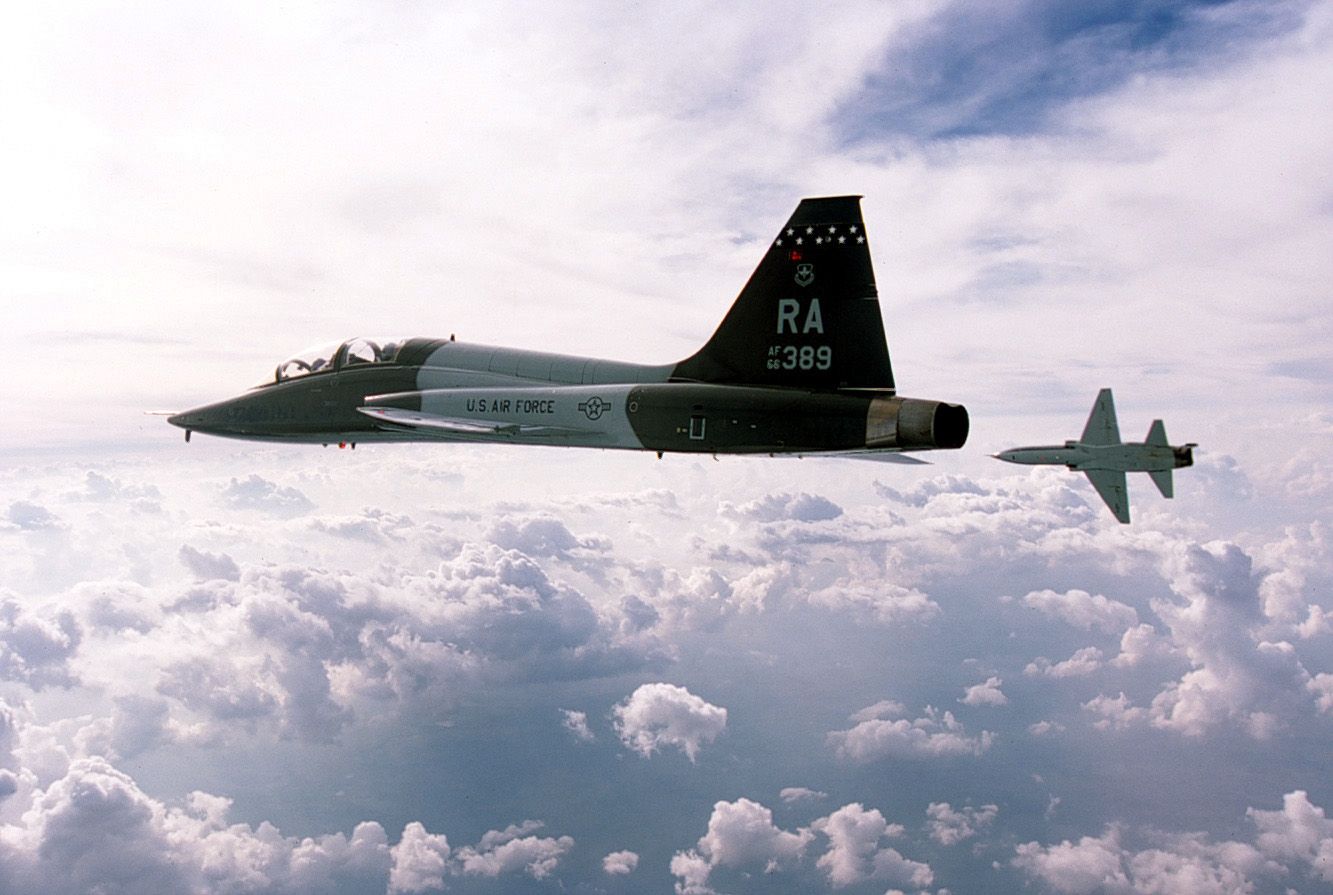
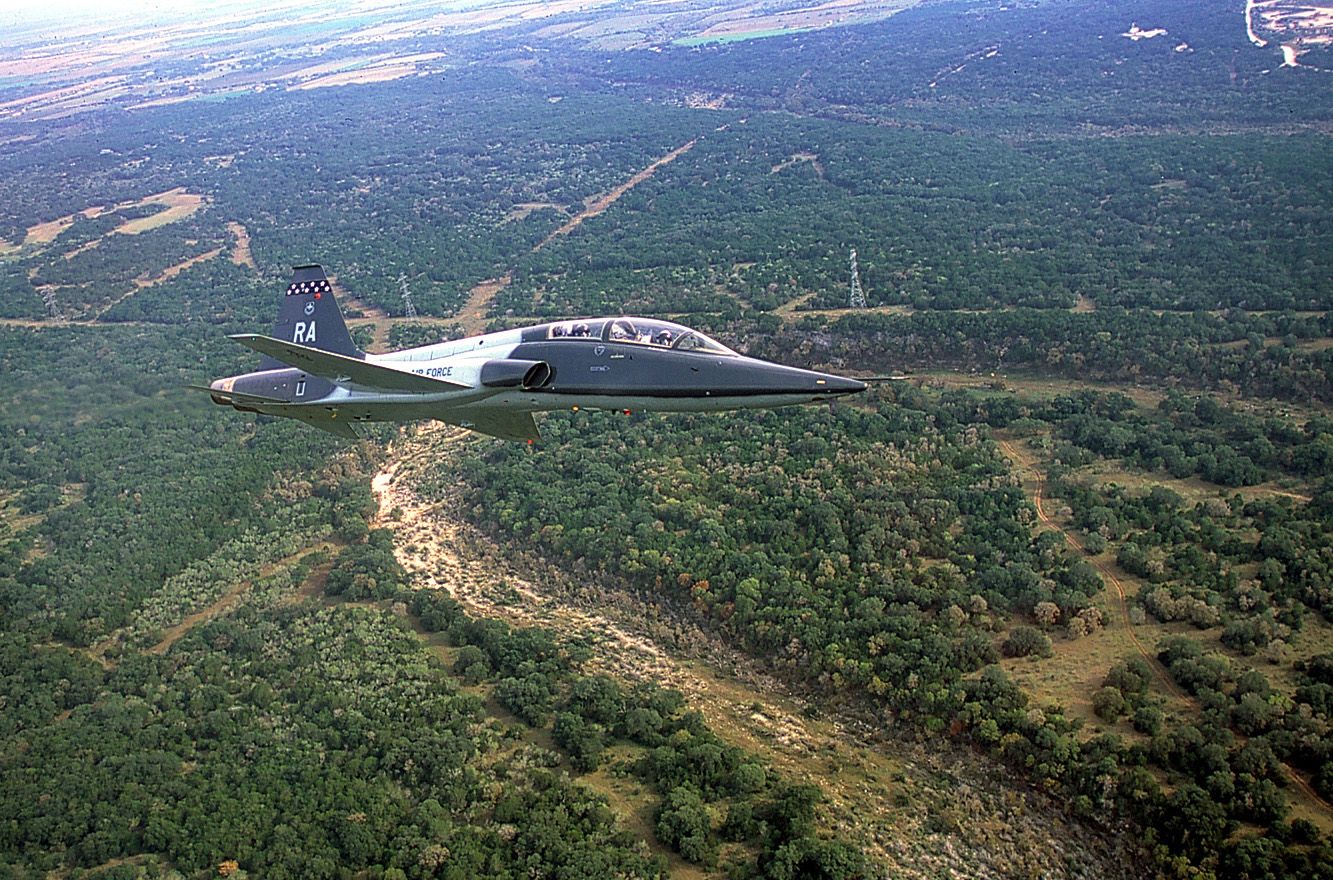
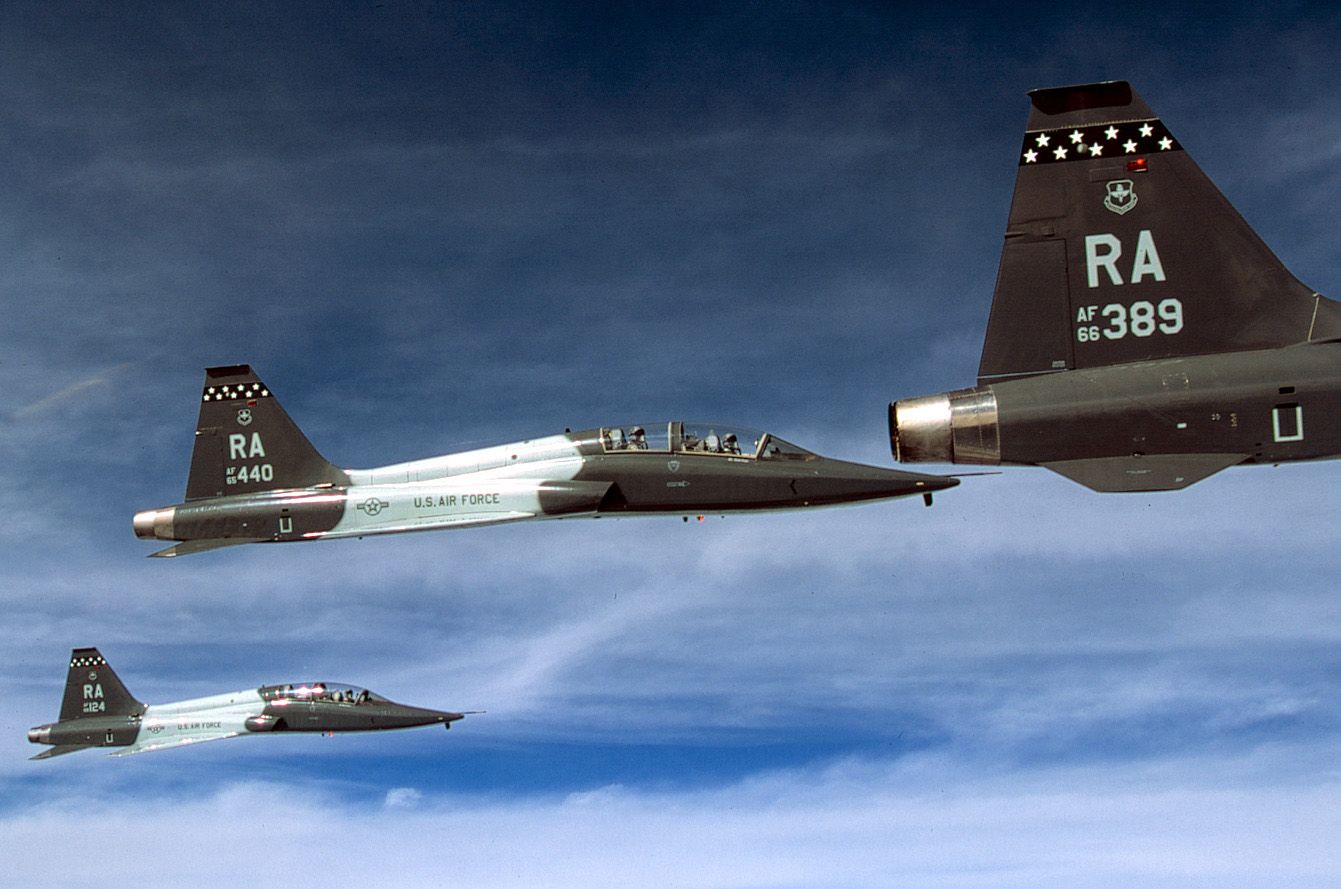


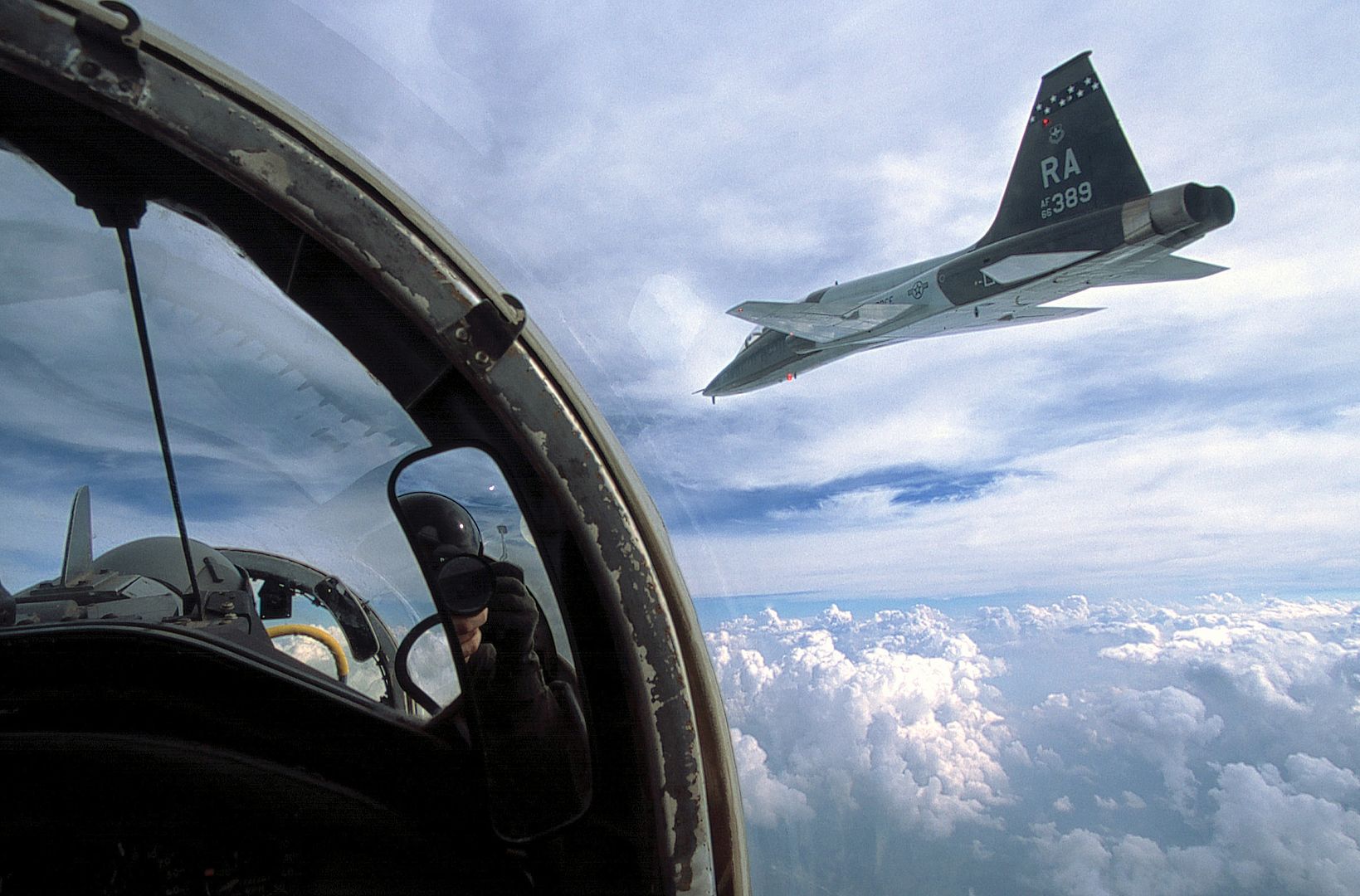


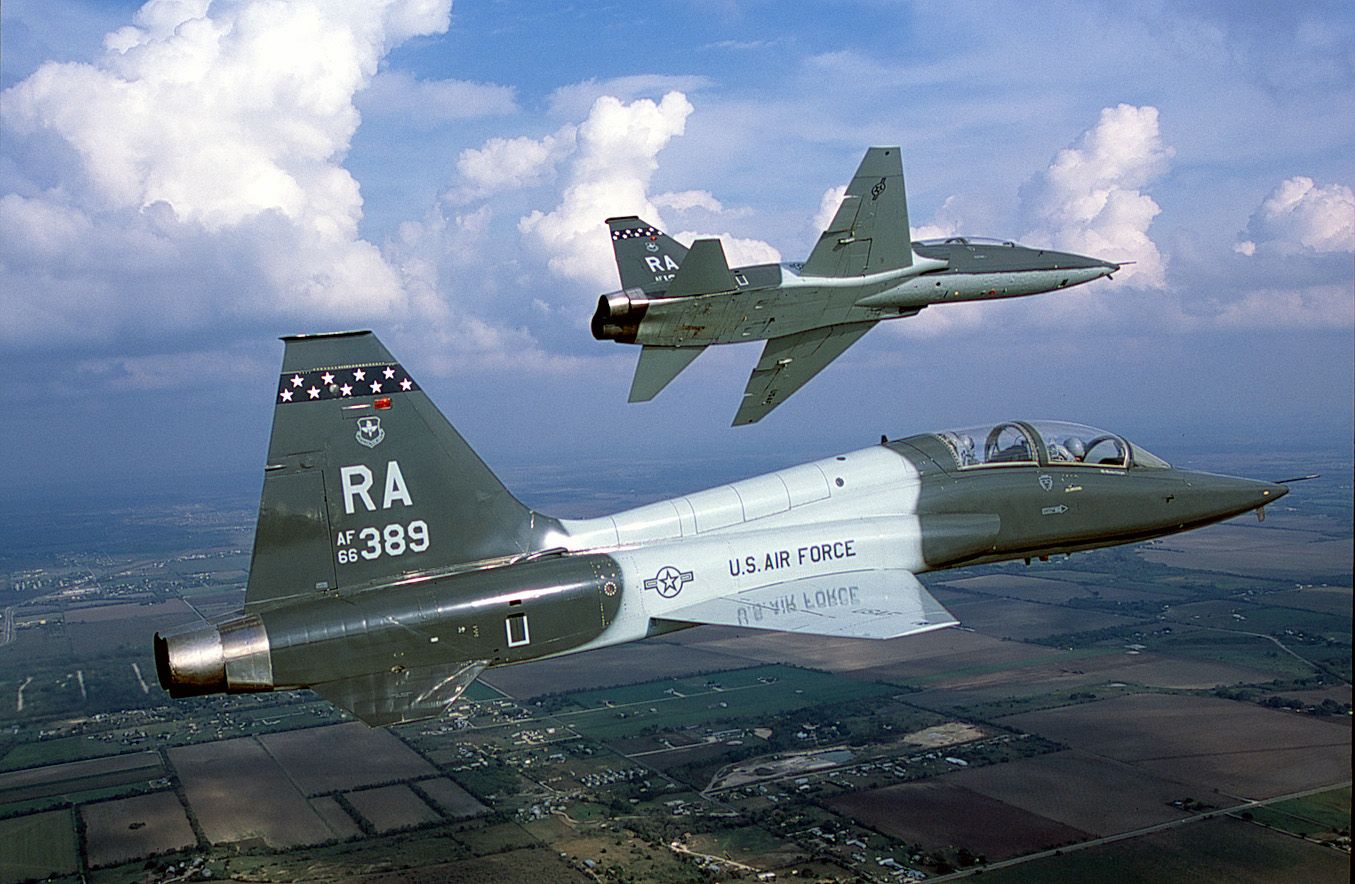
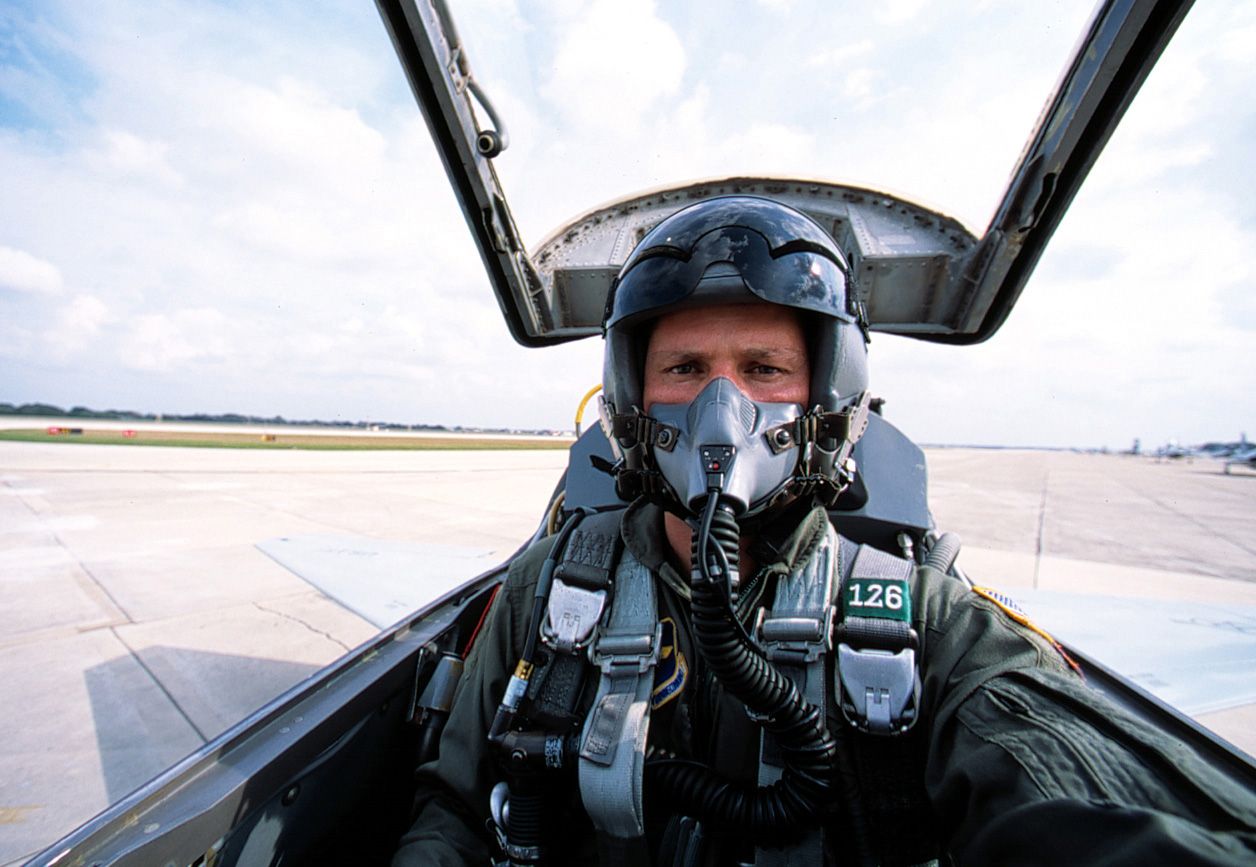
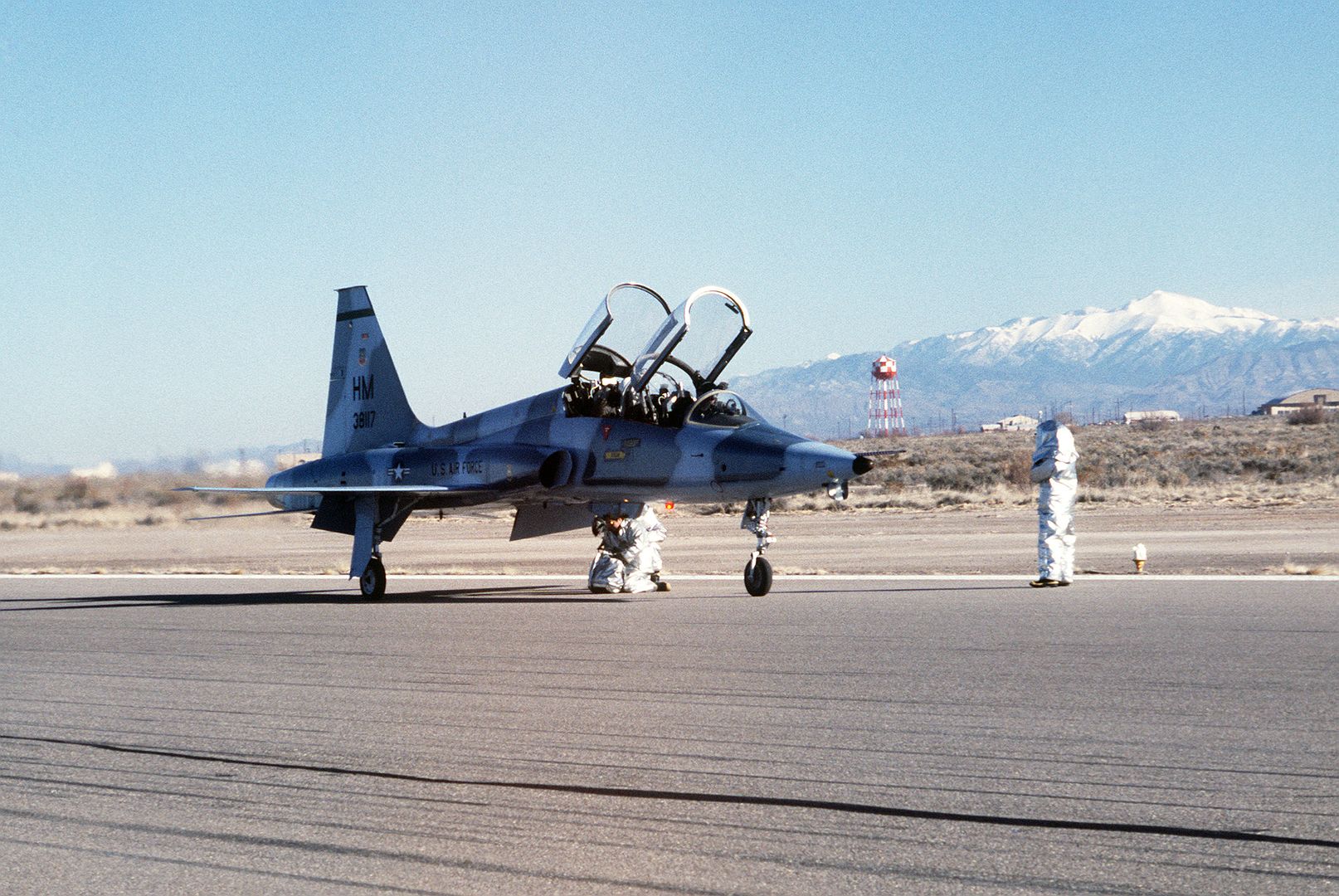
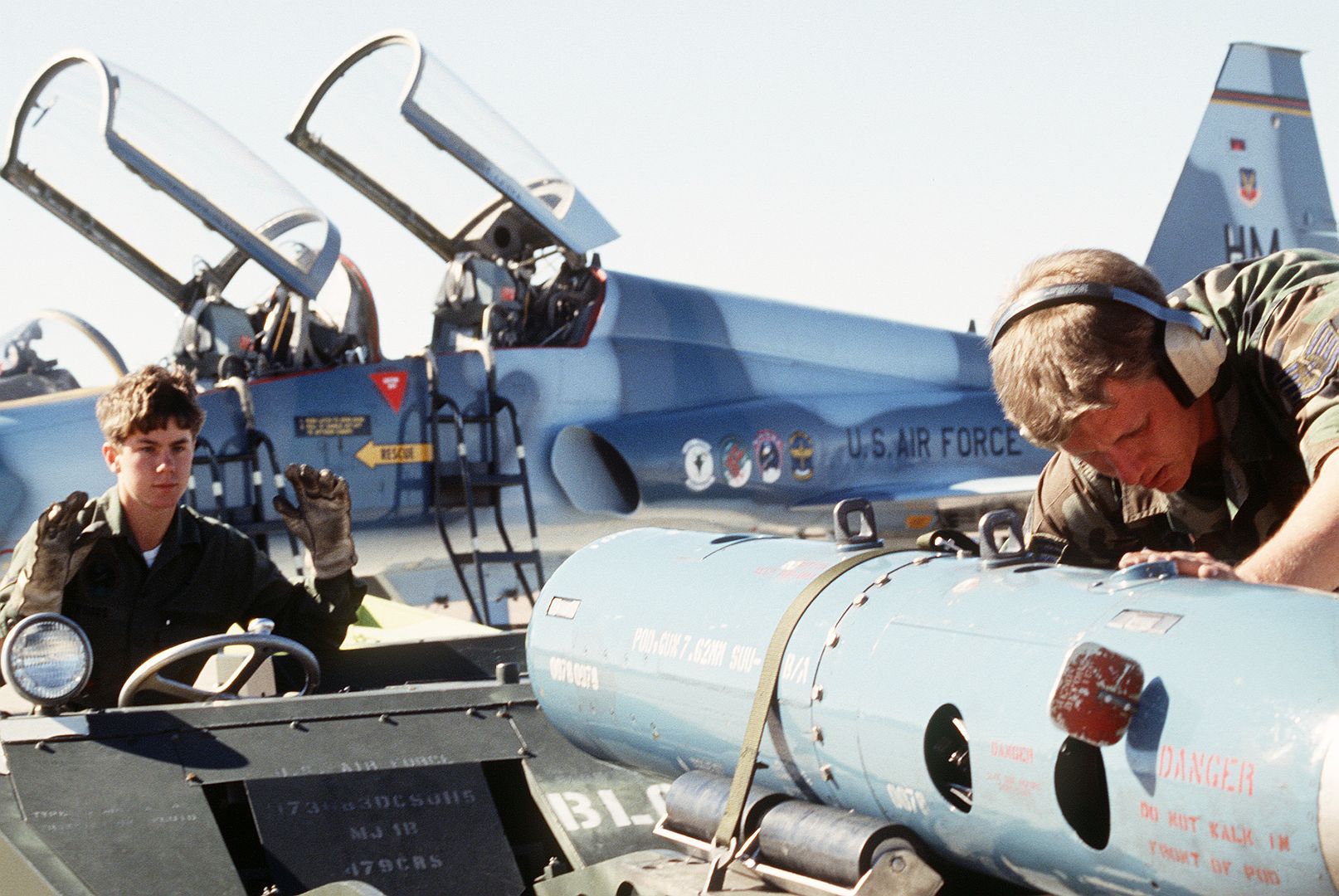
,%20Air%20Education%20and%20Training%20Command%20(AETC)%20takes%20off%20at%20Sheppard%20Air%20Force%20Base,%20Texas.jpeg)
